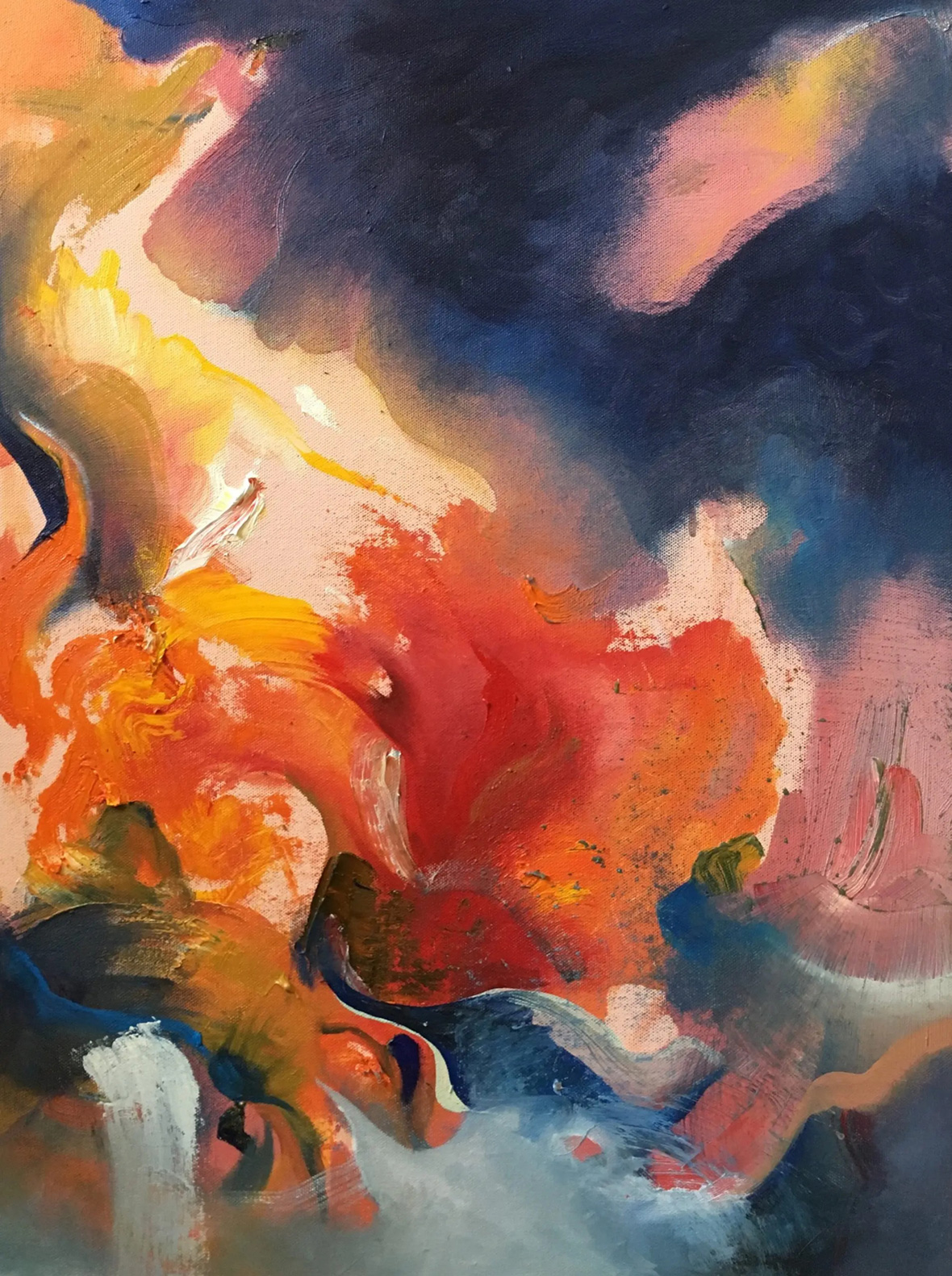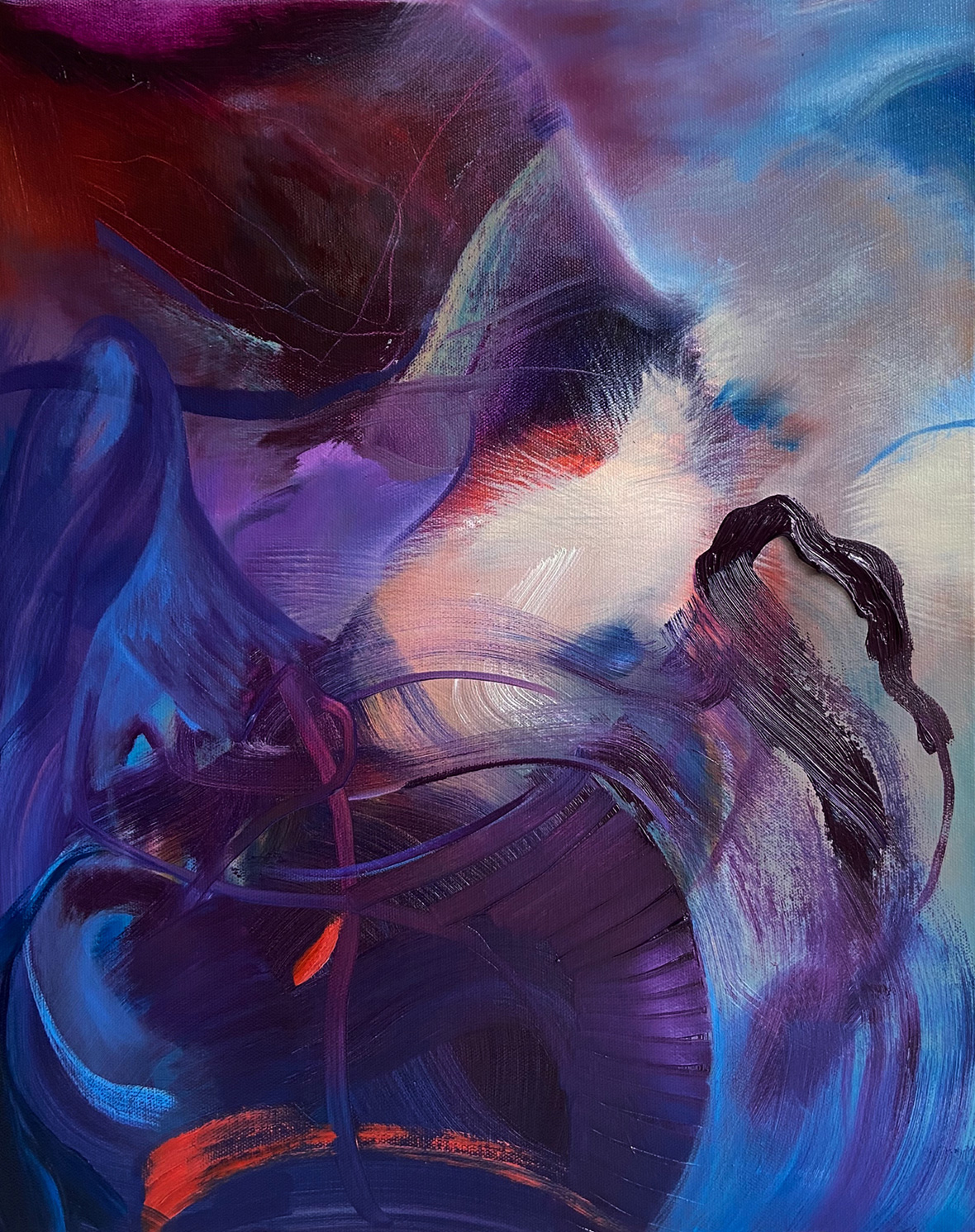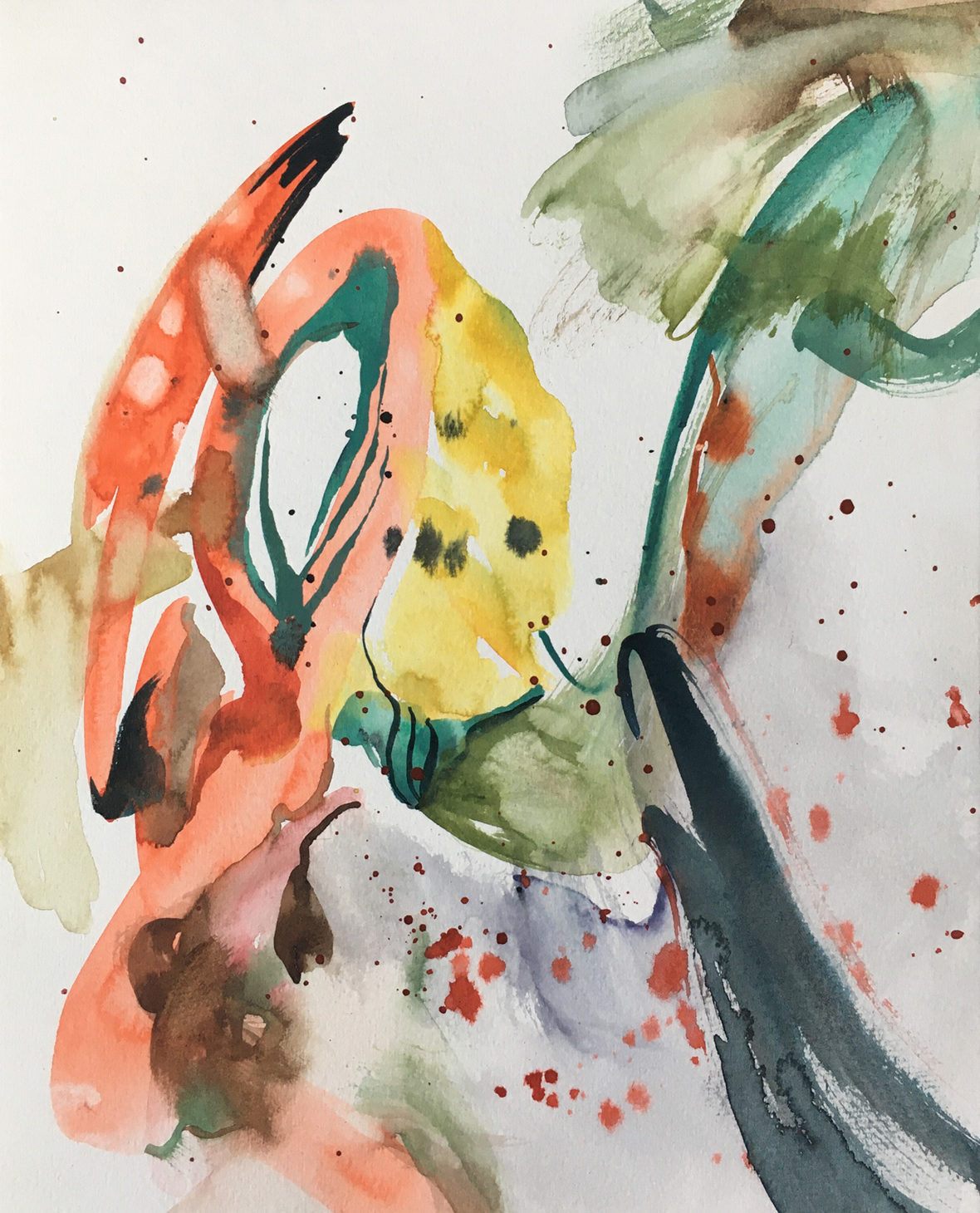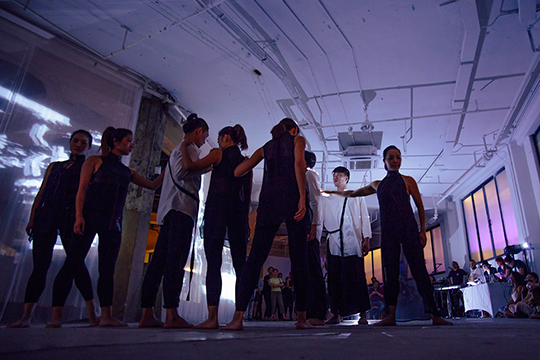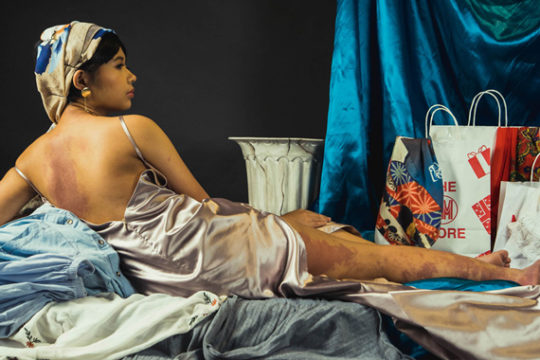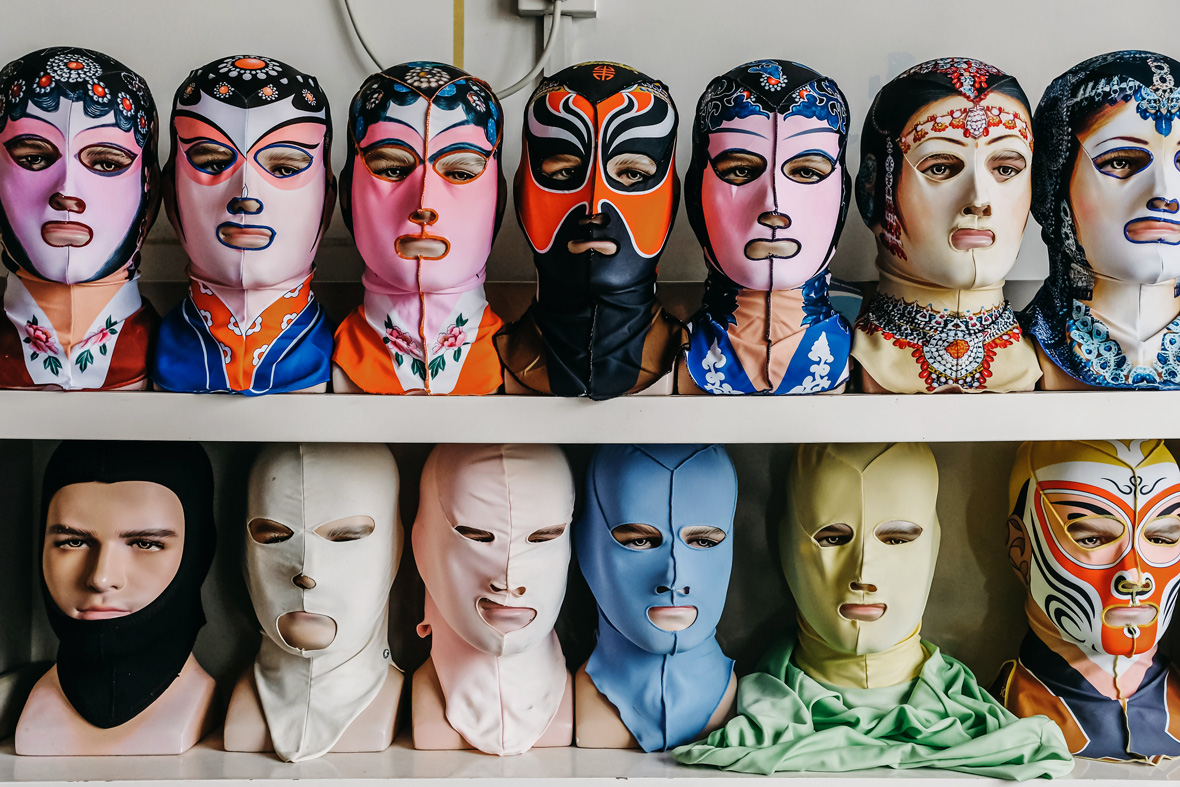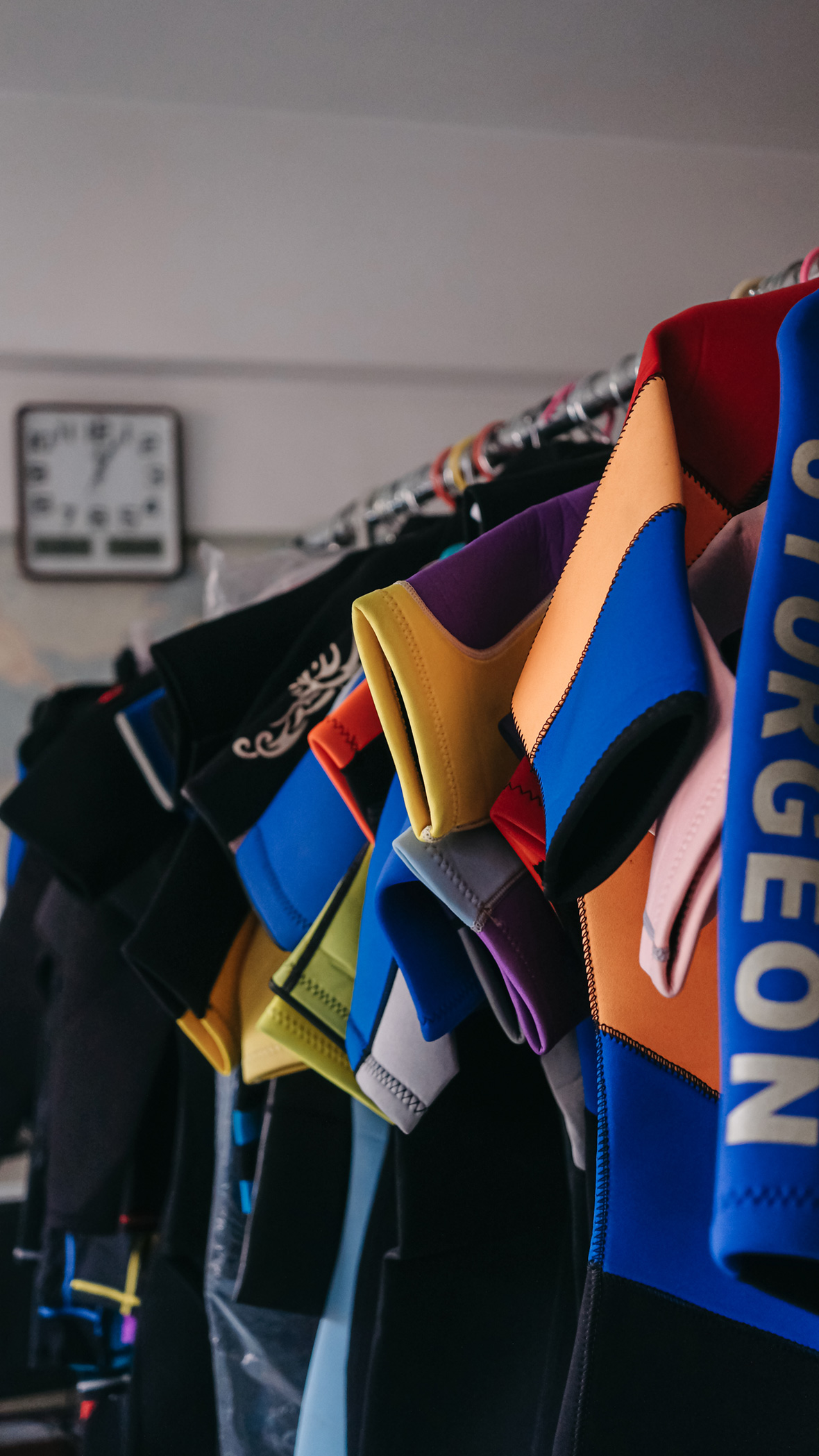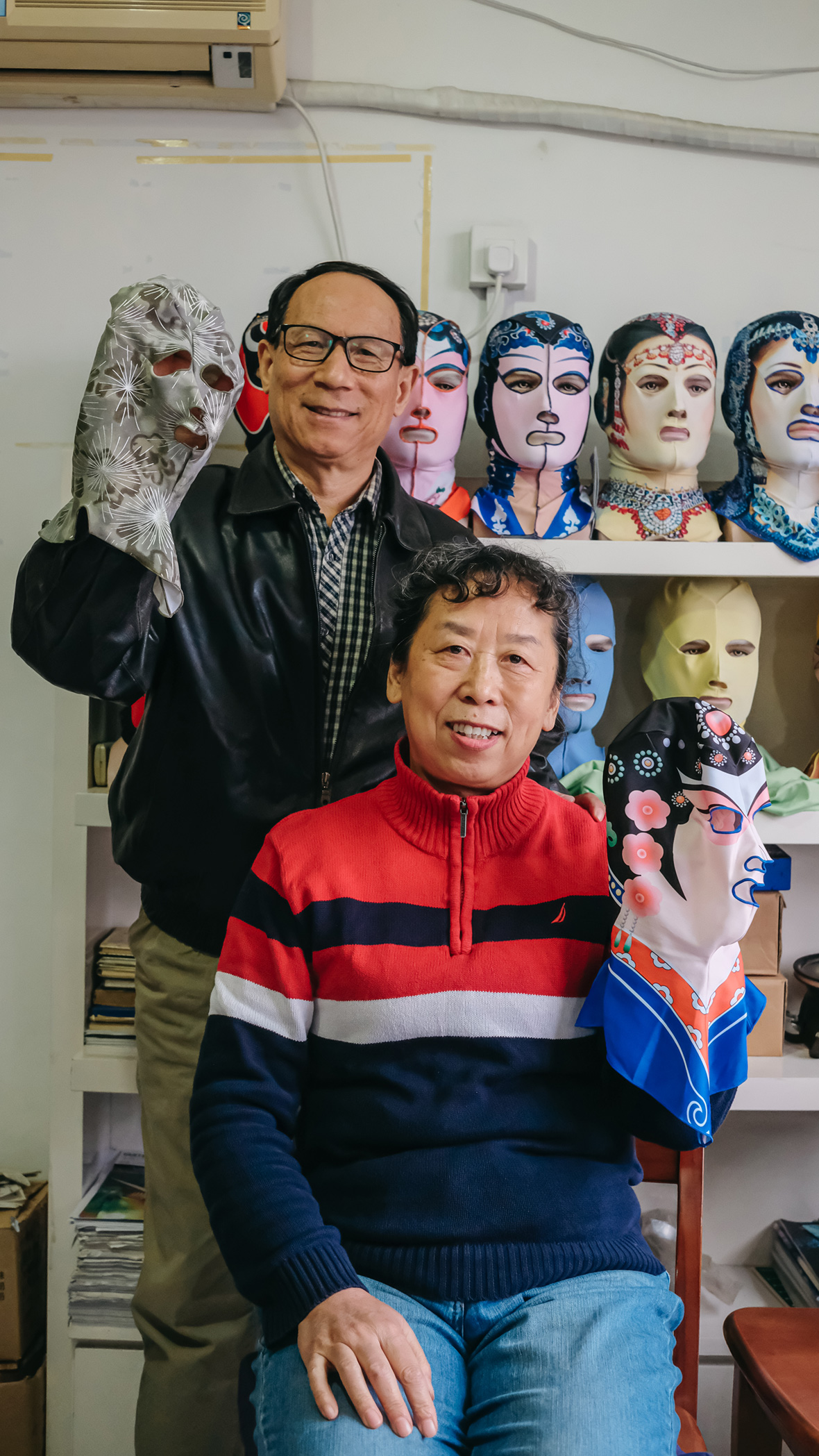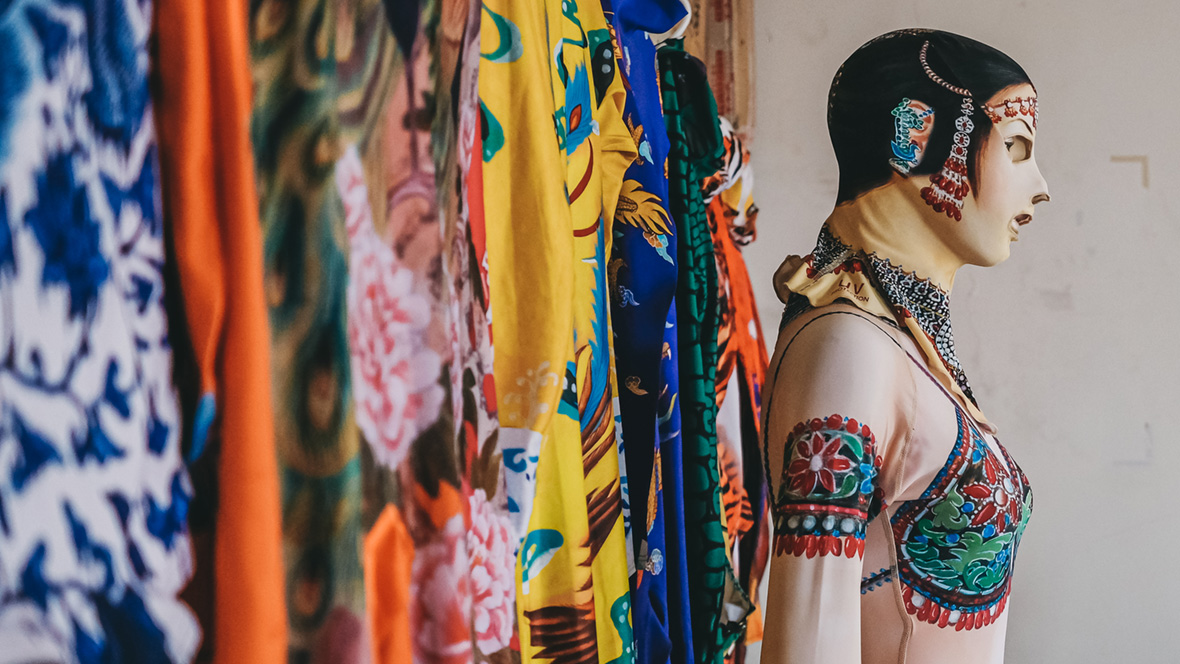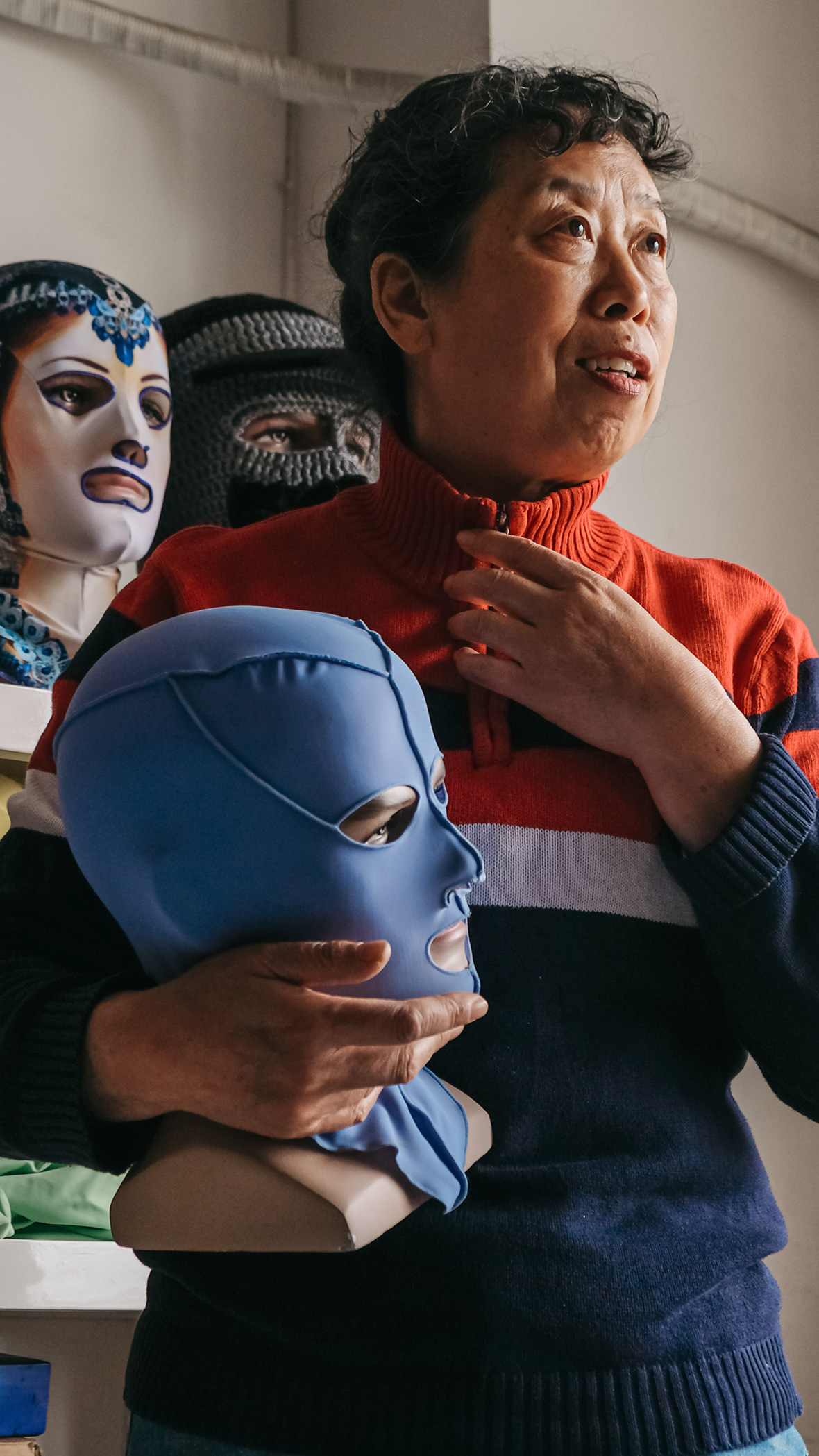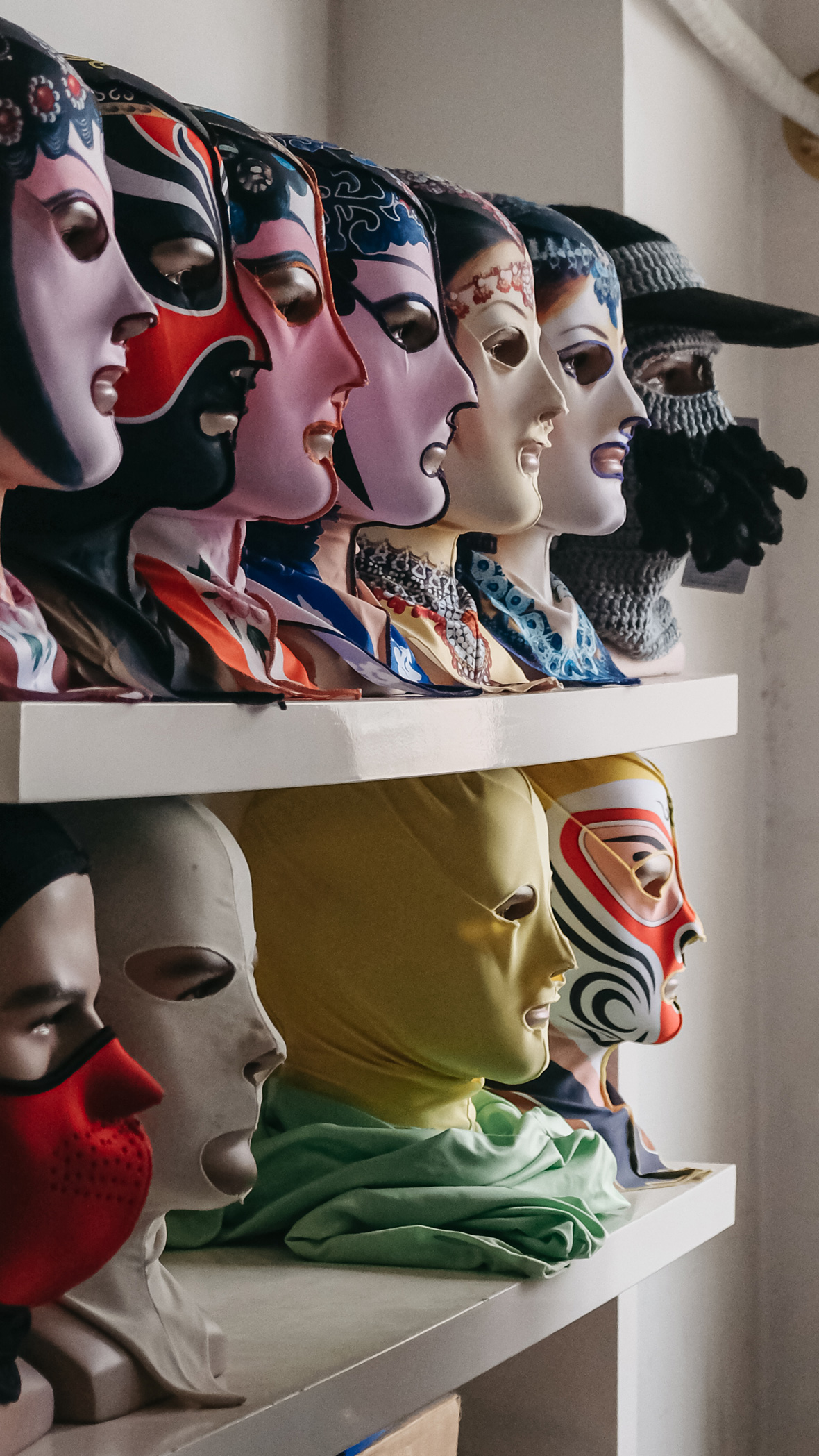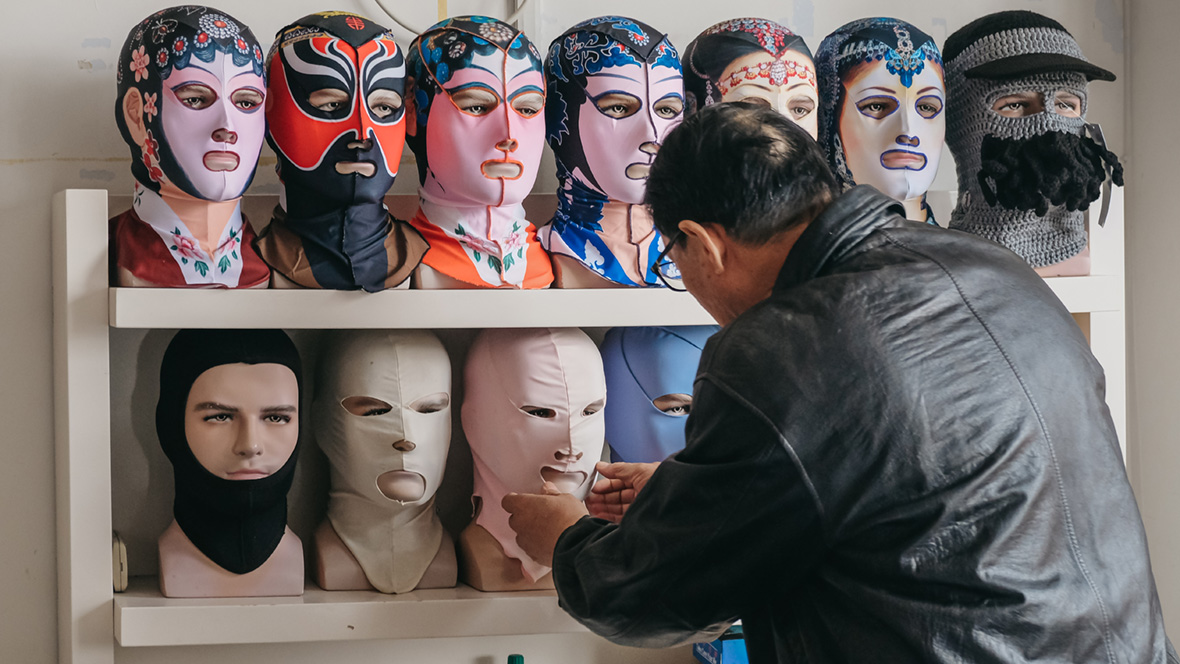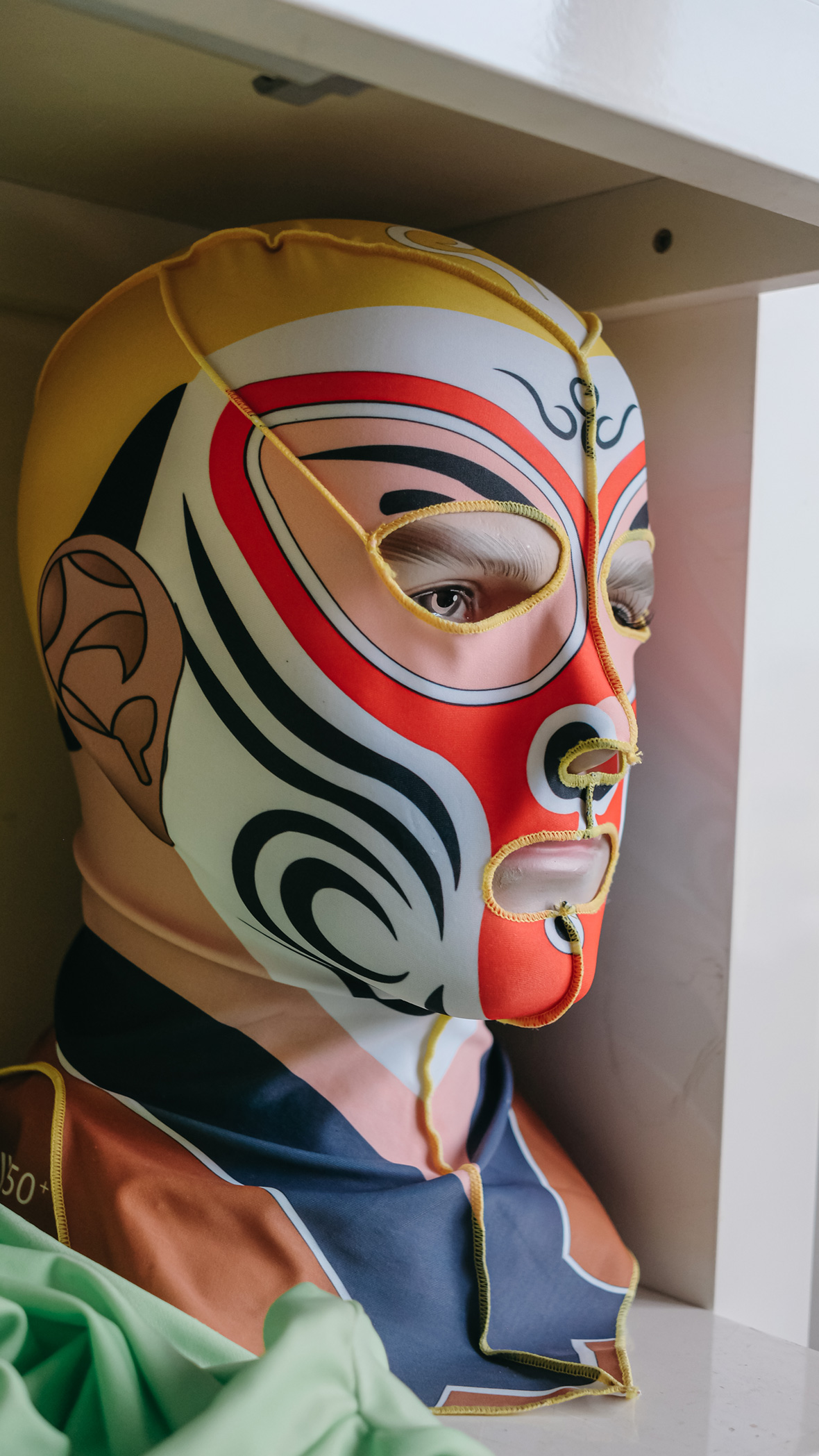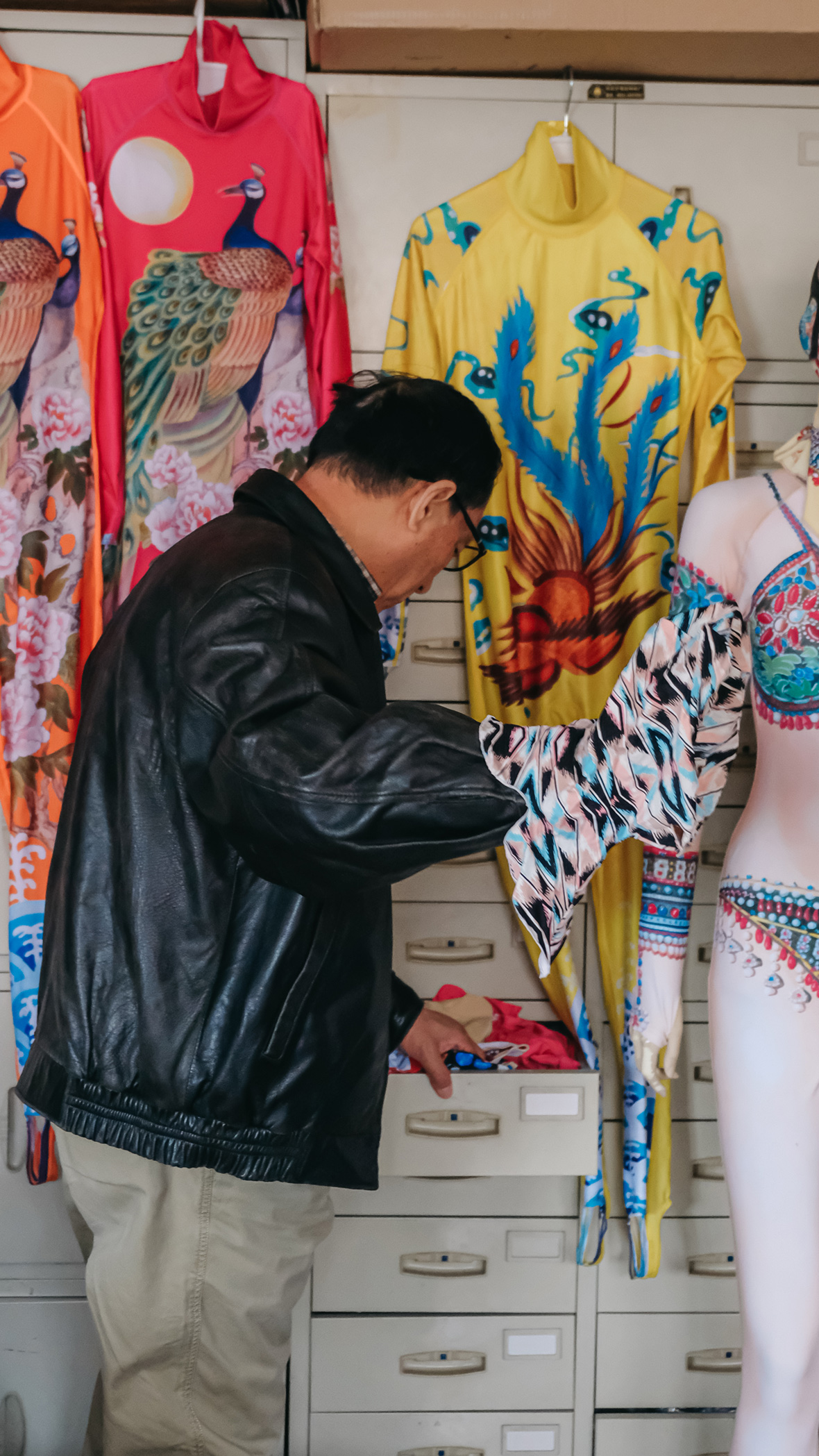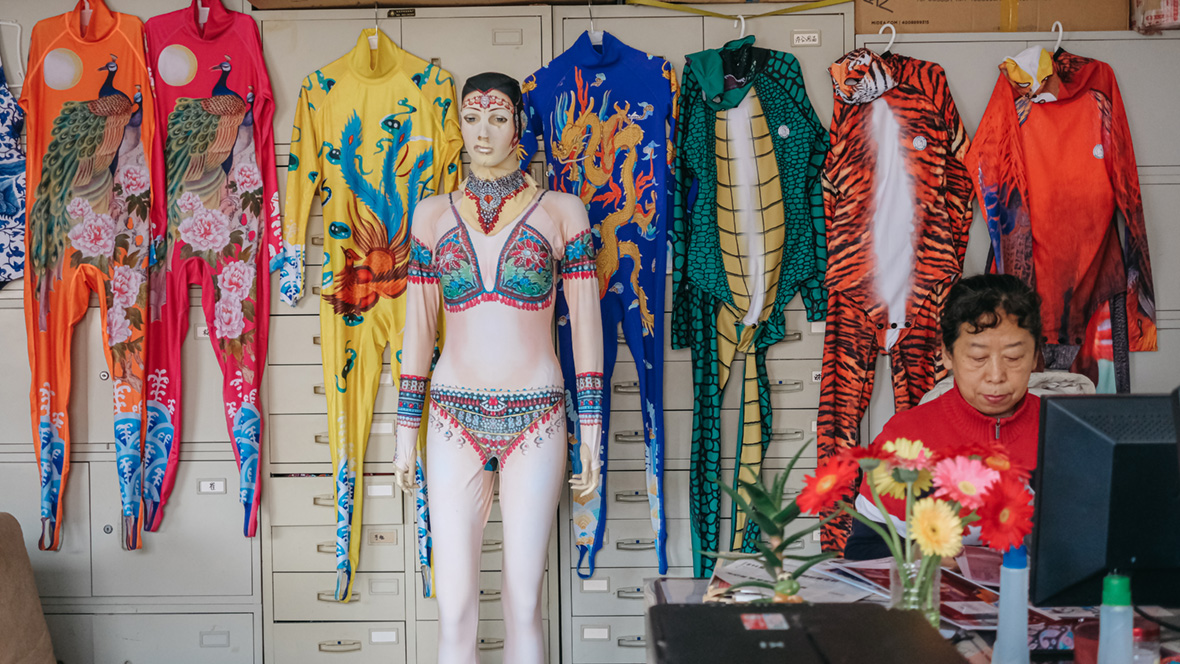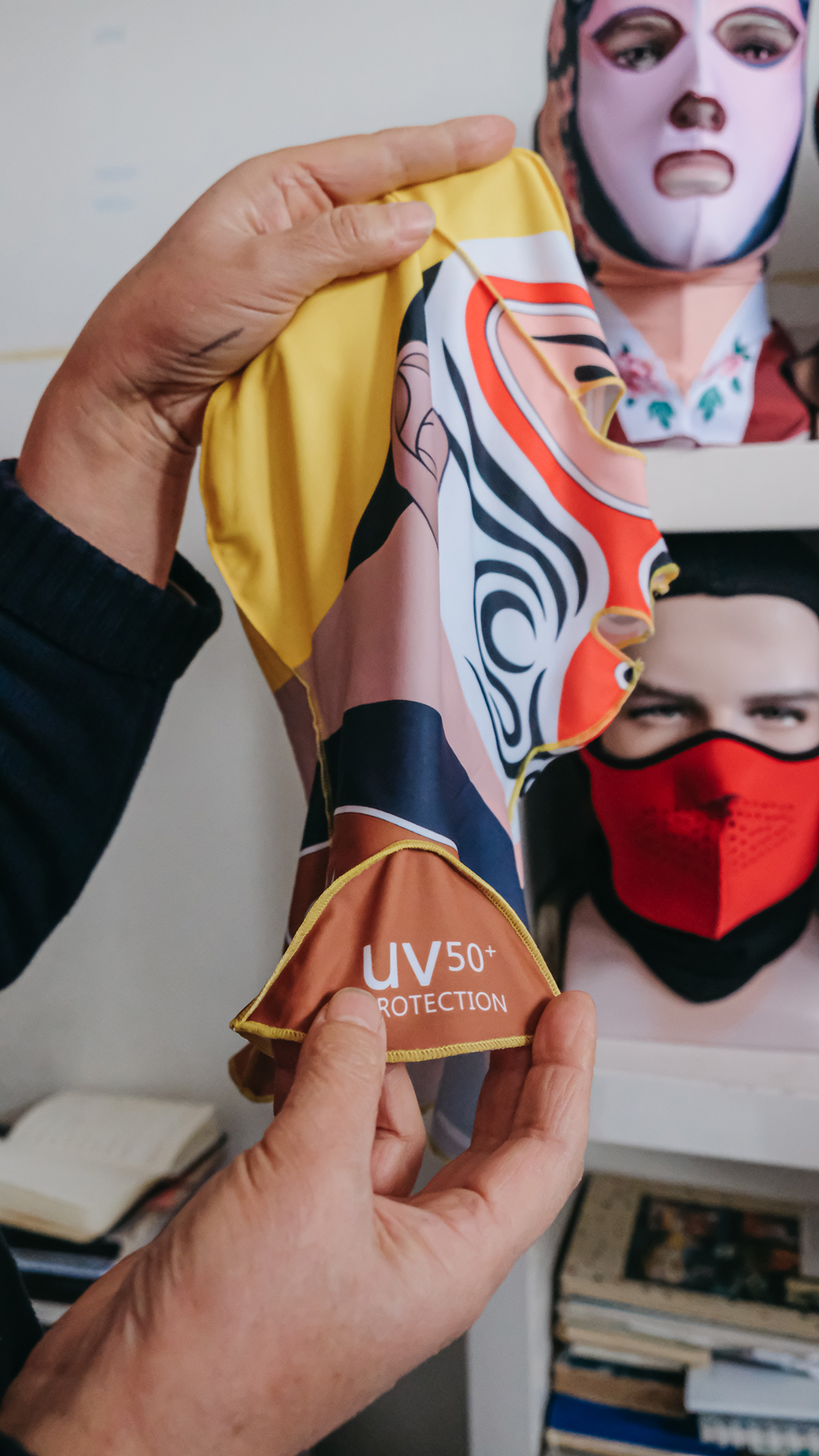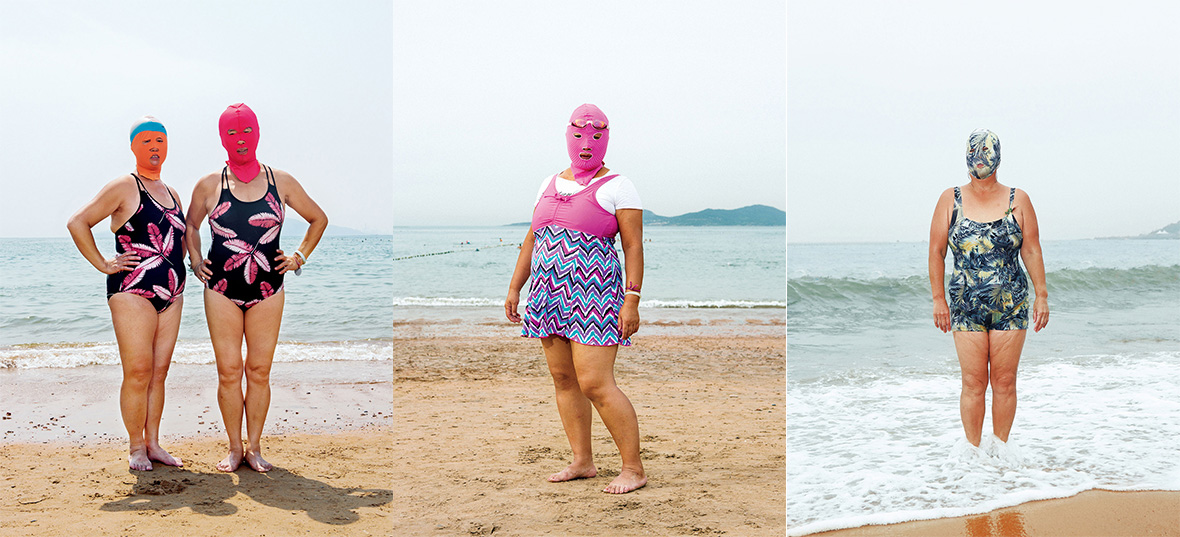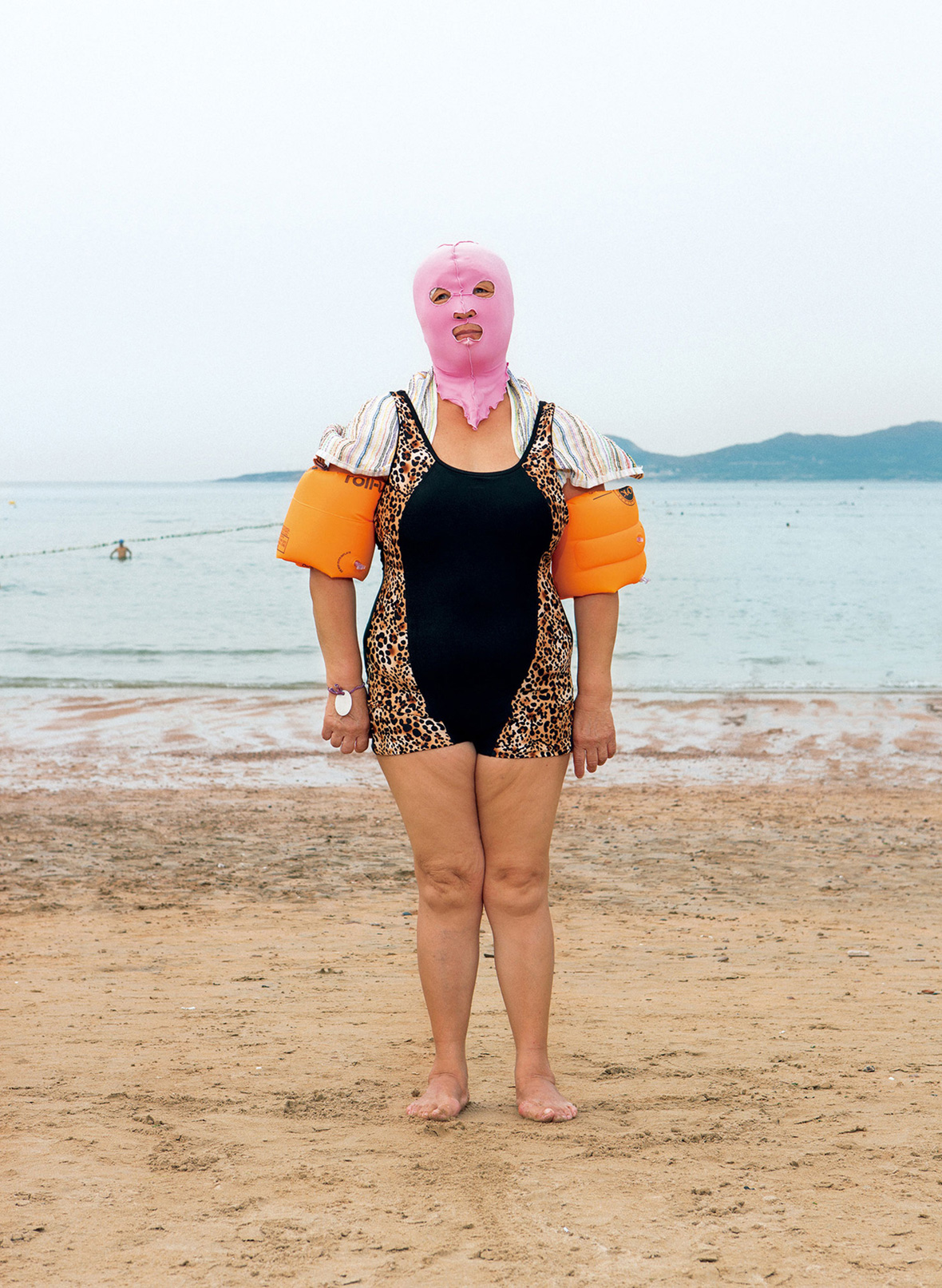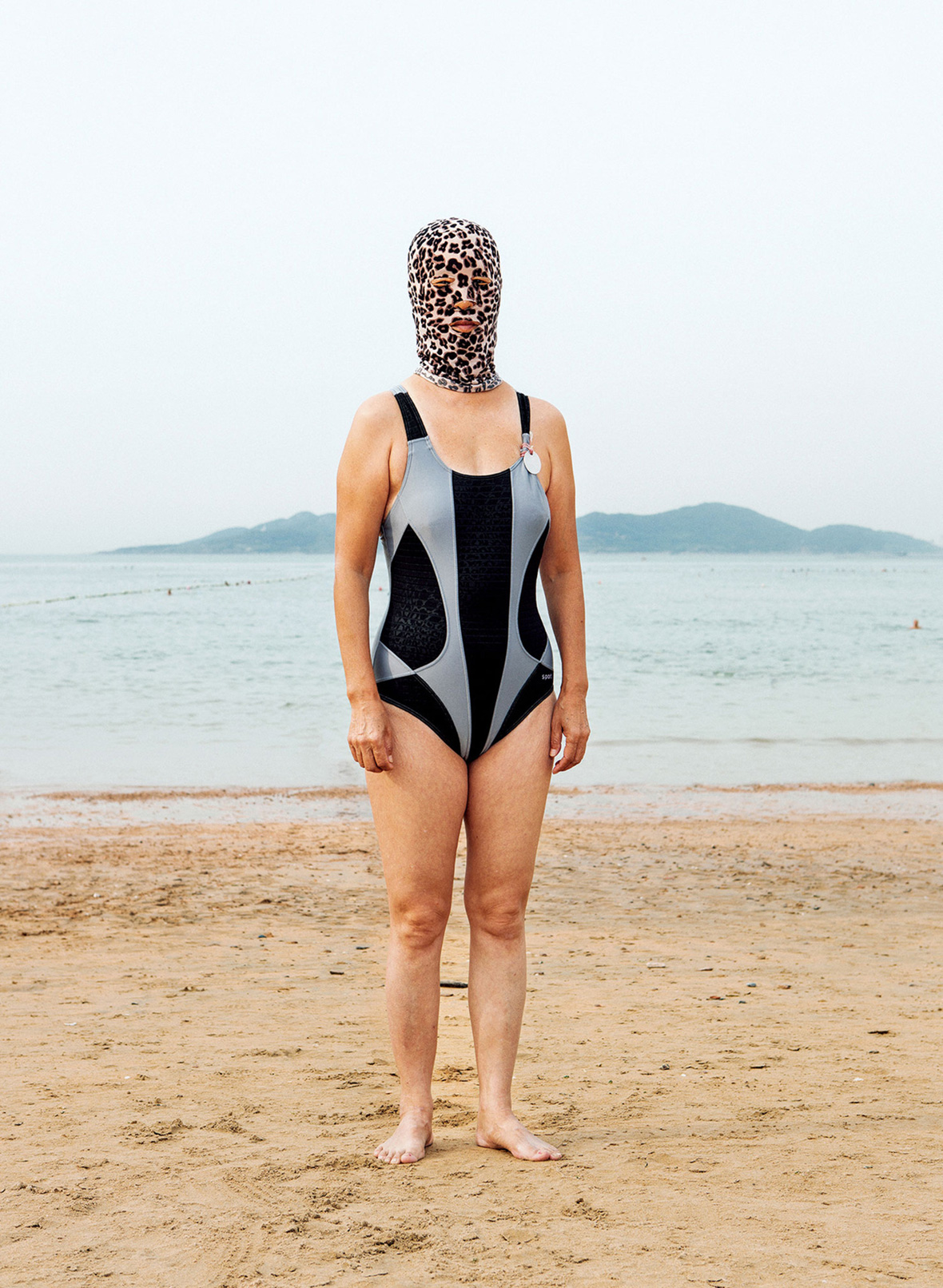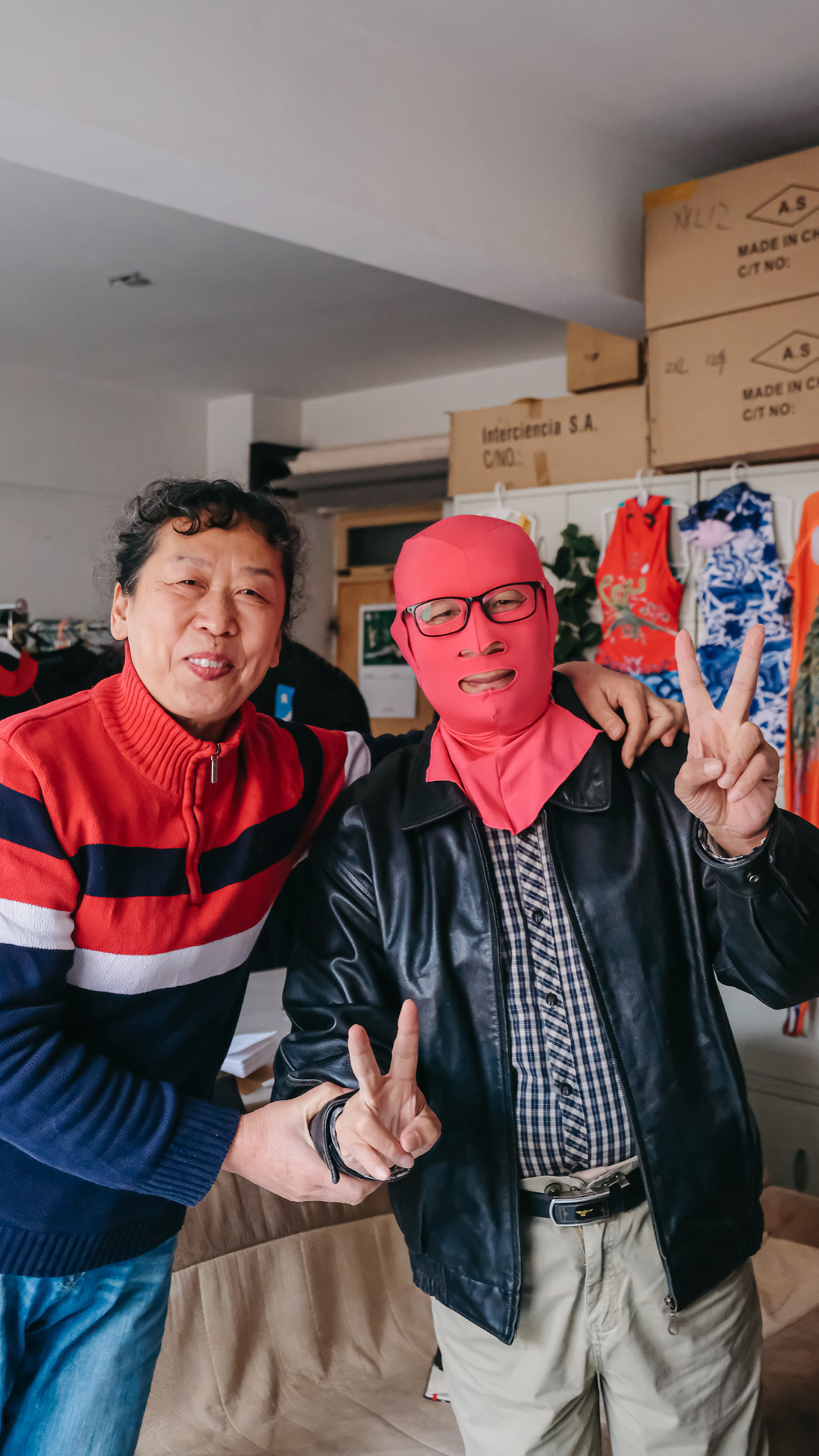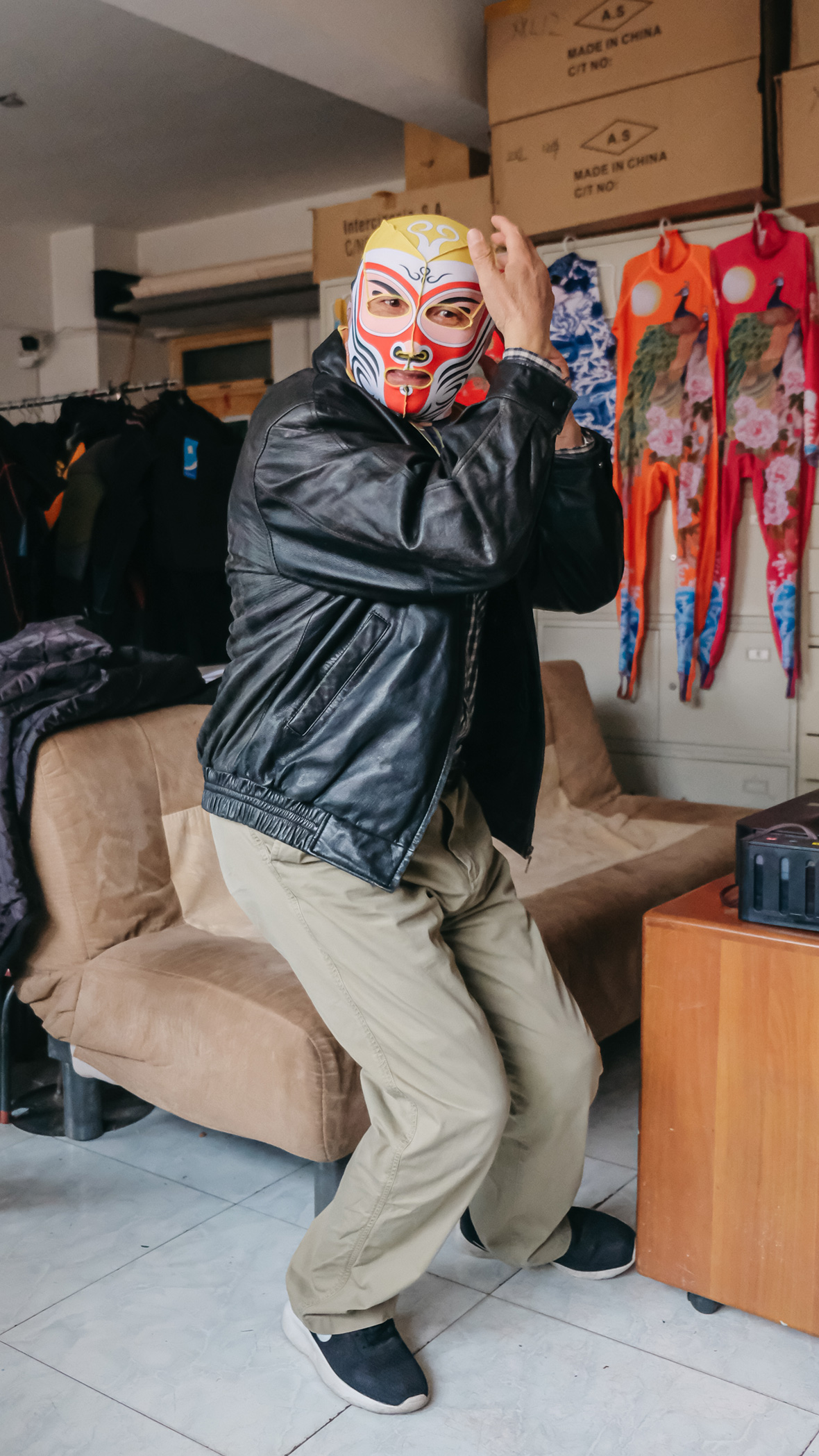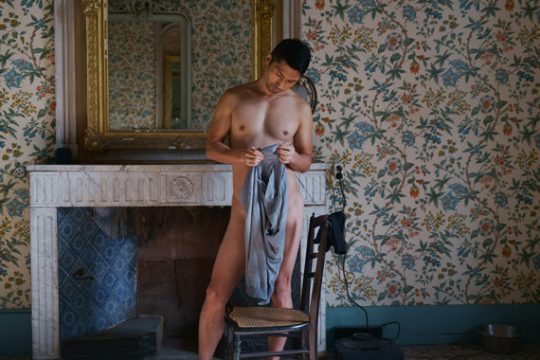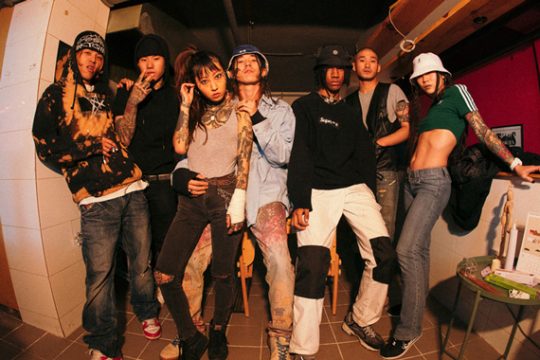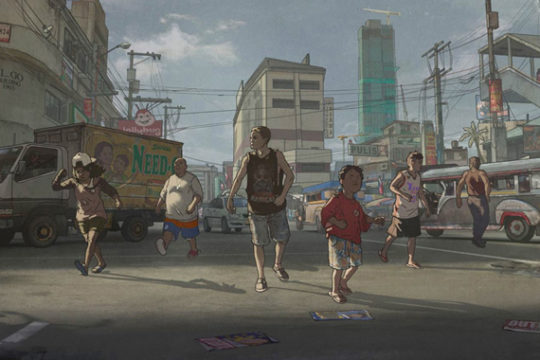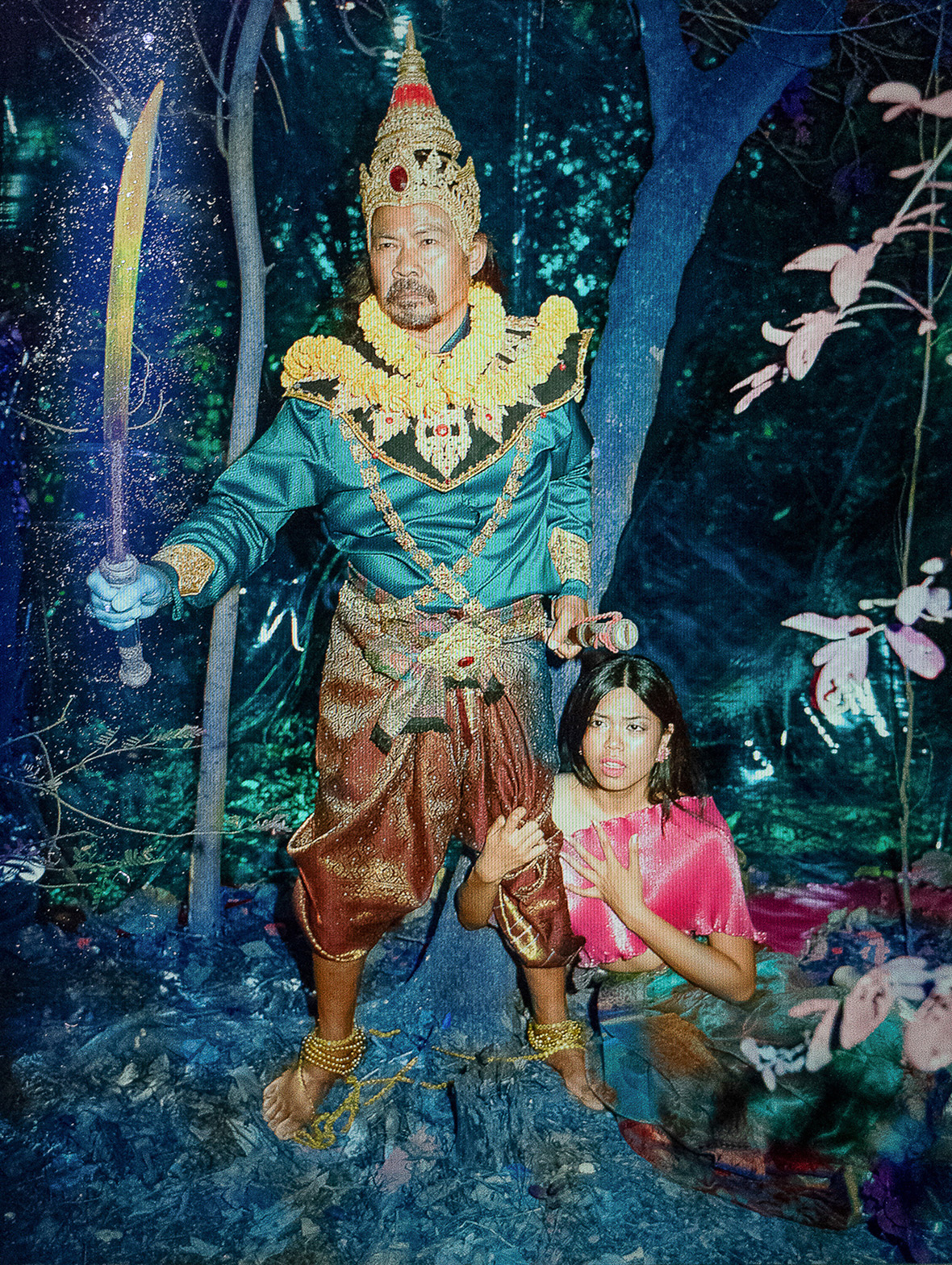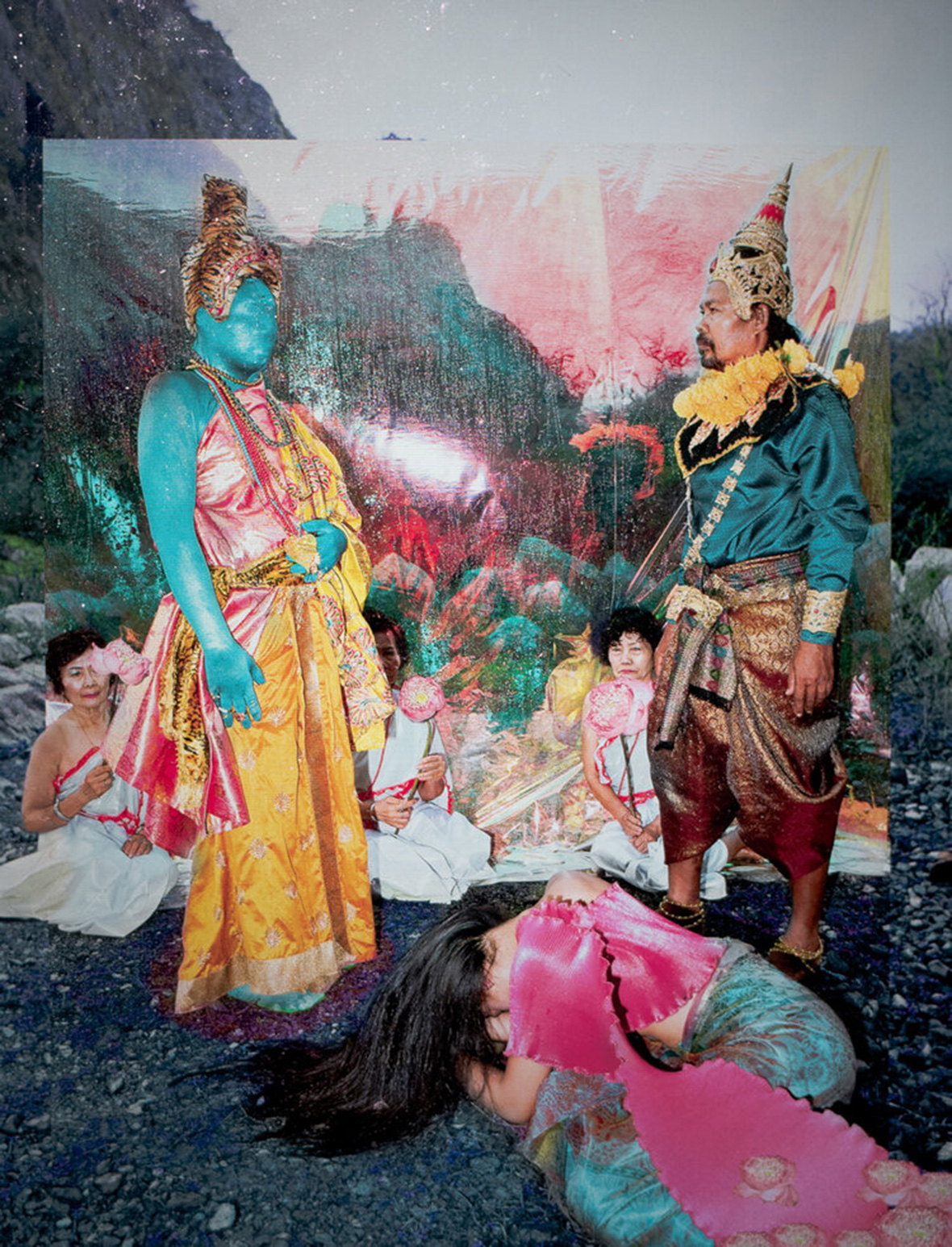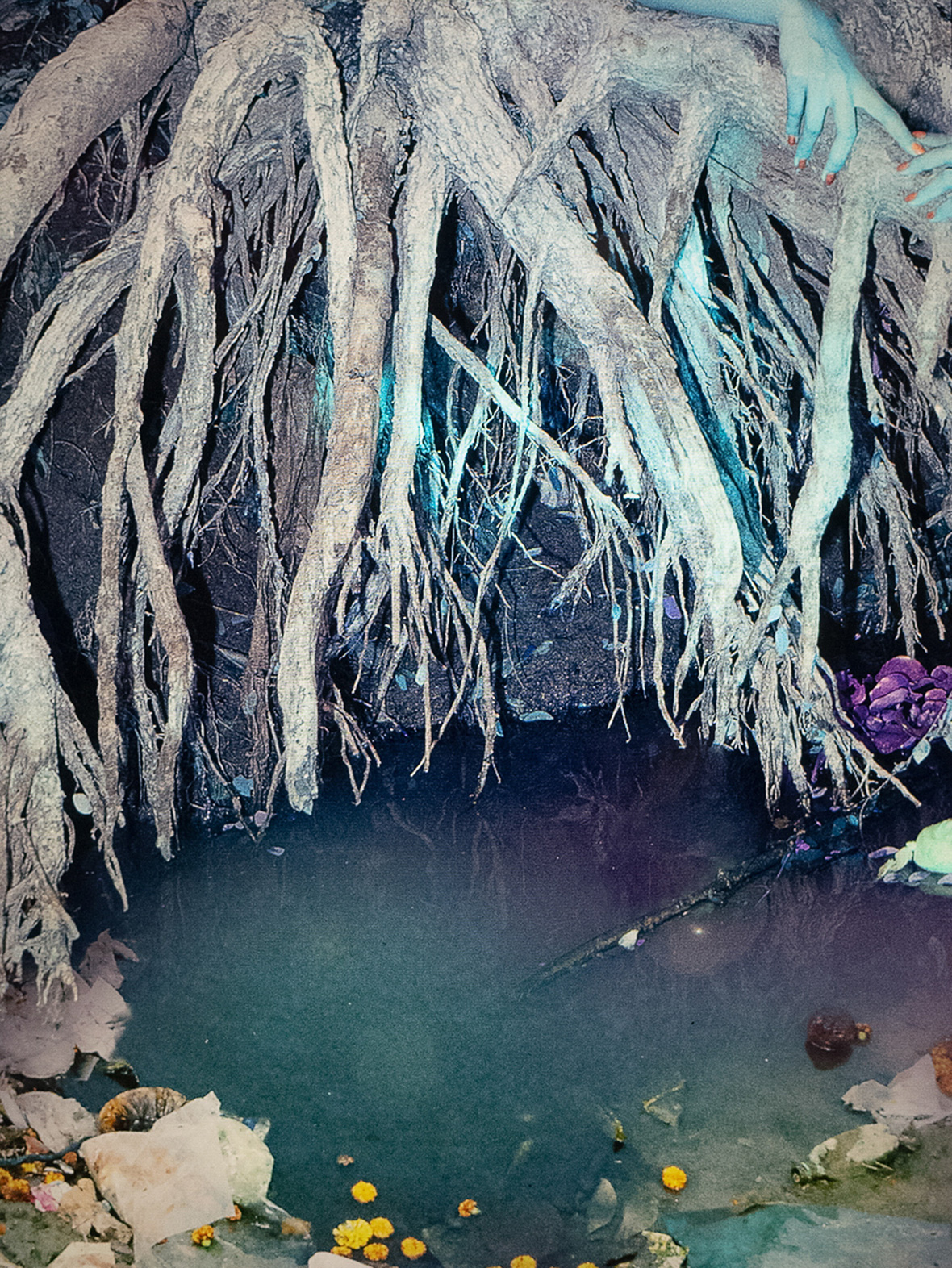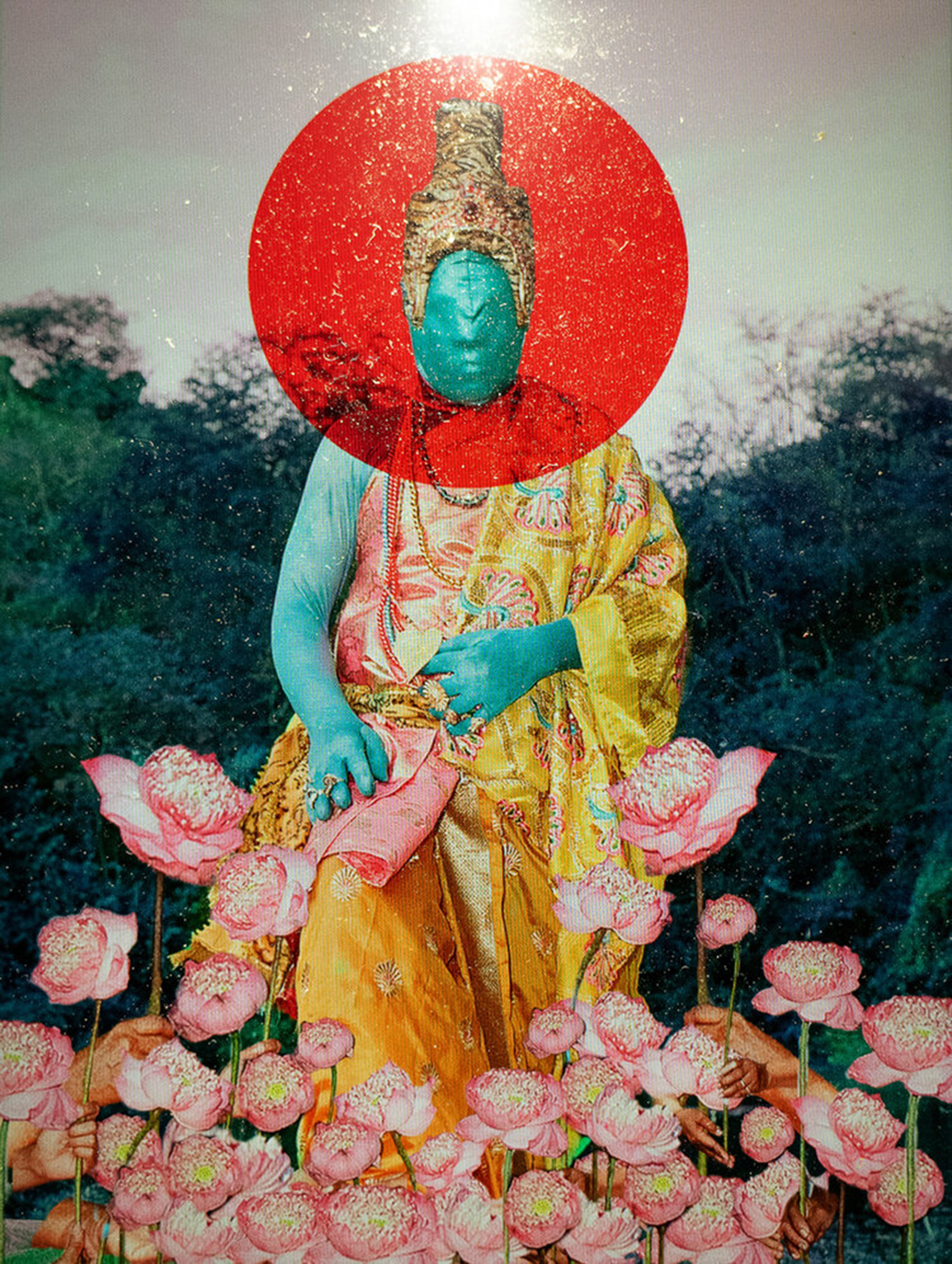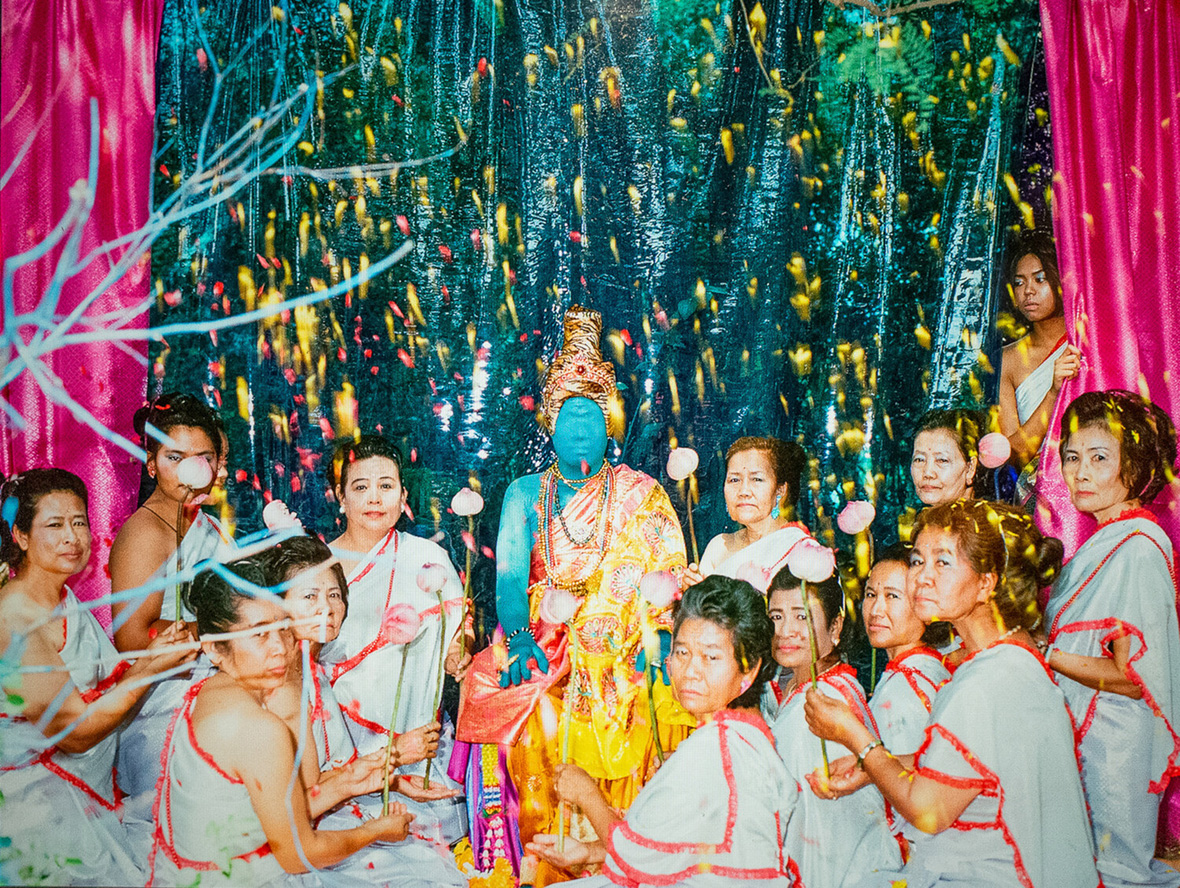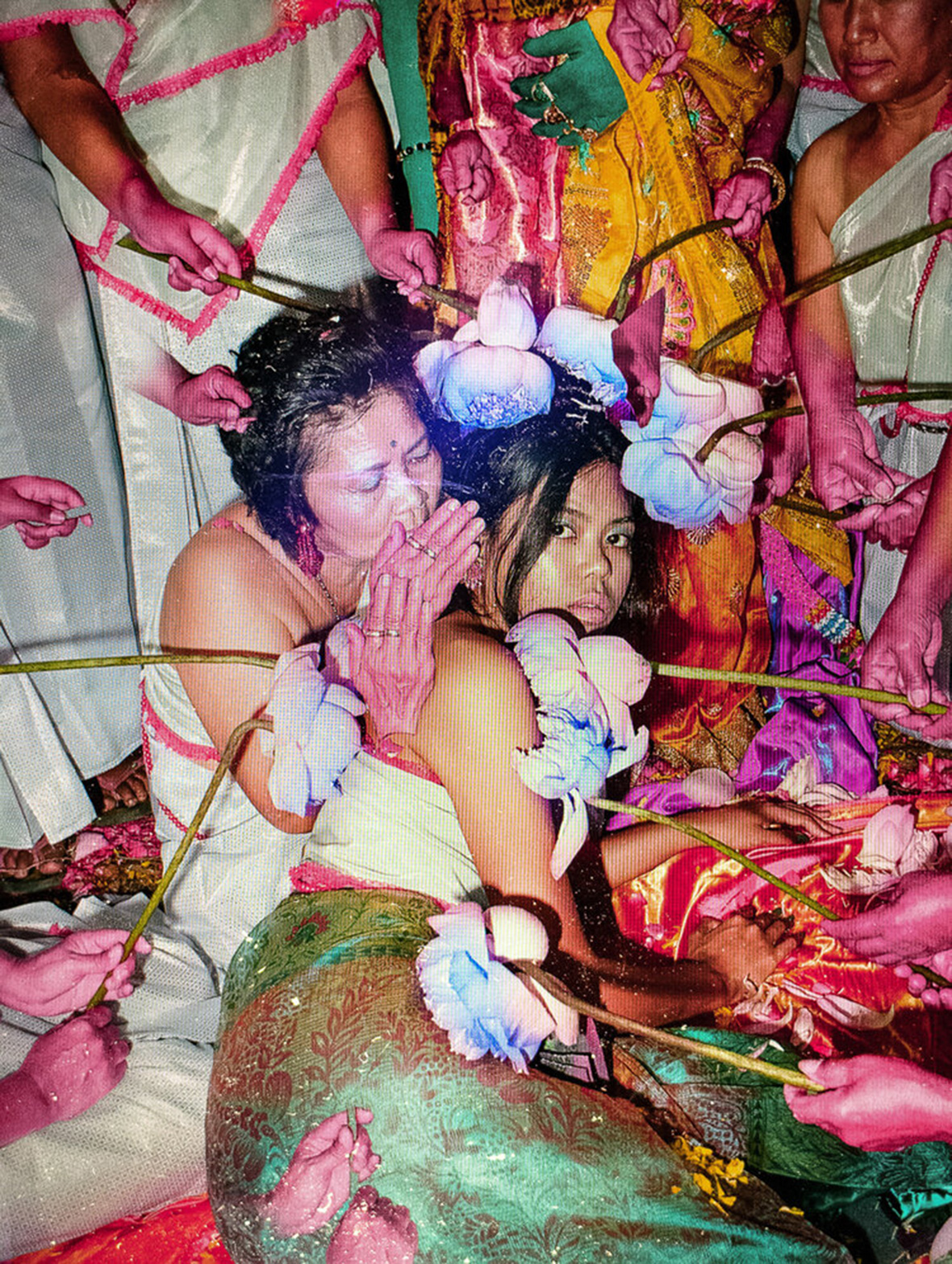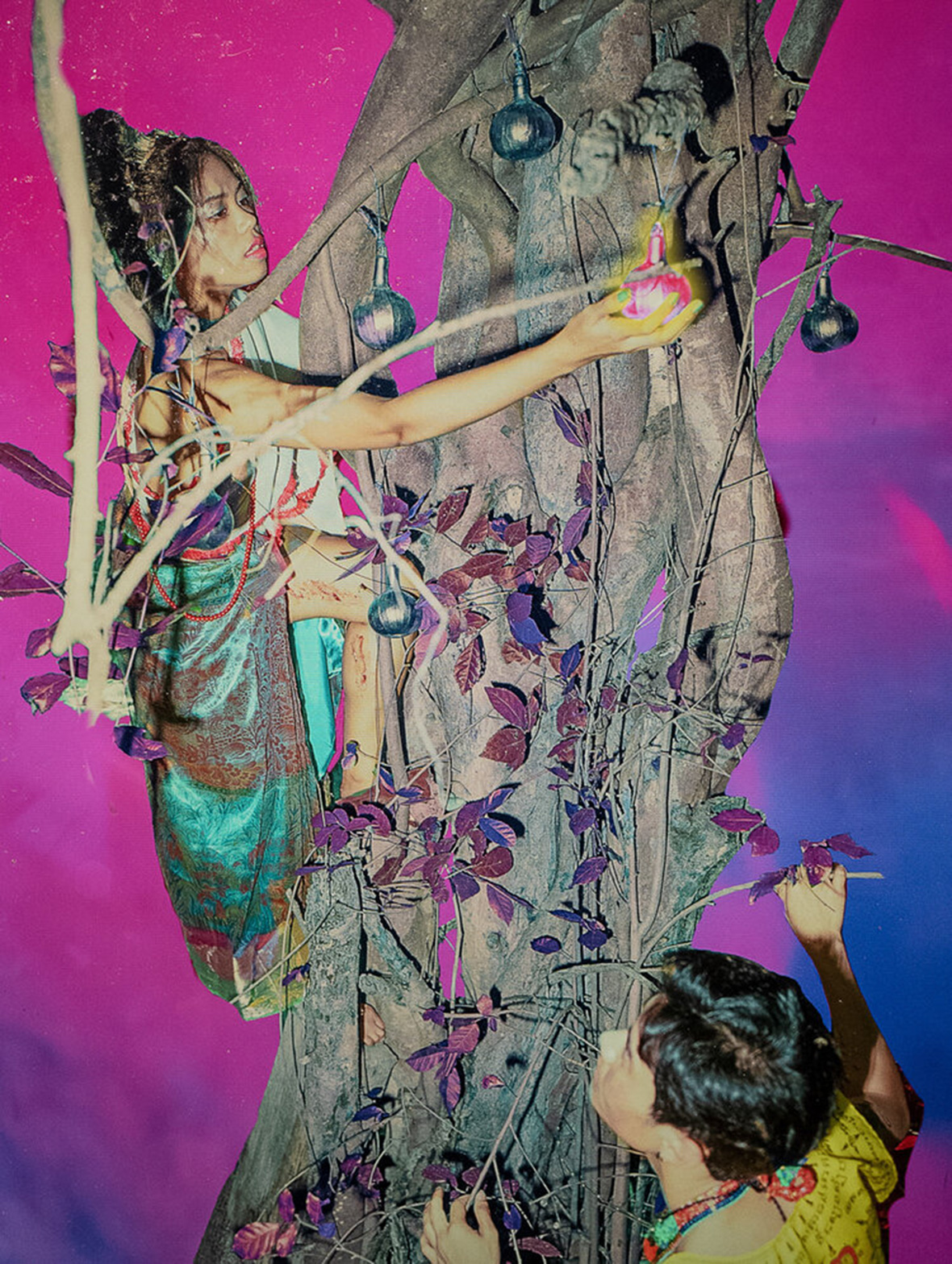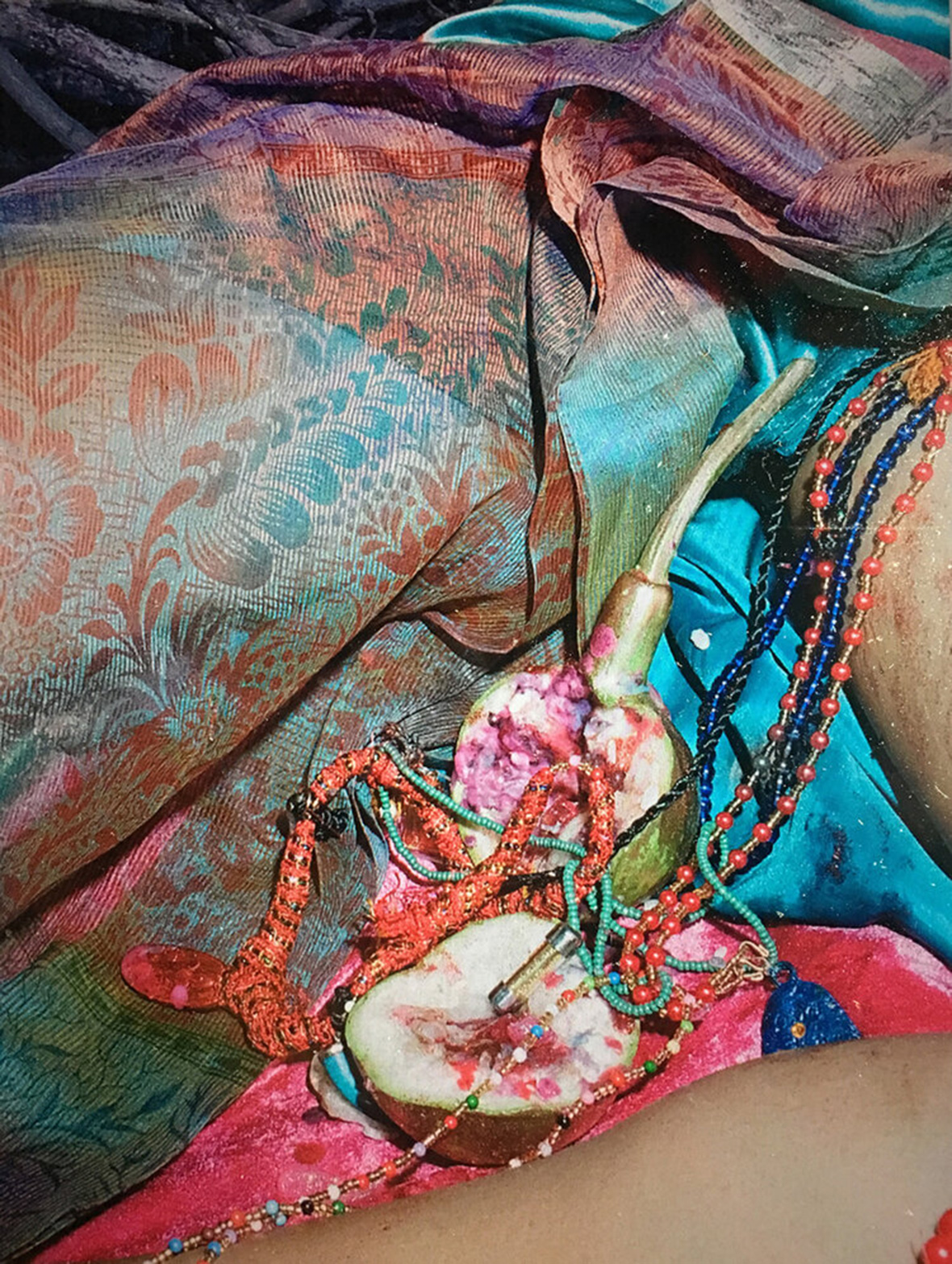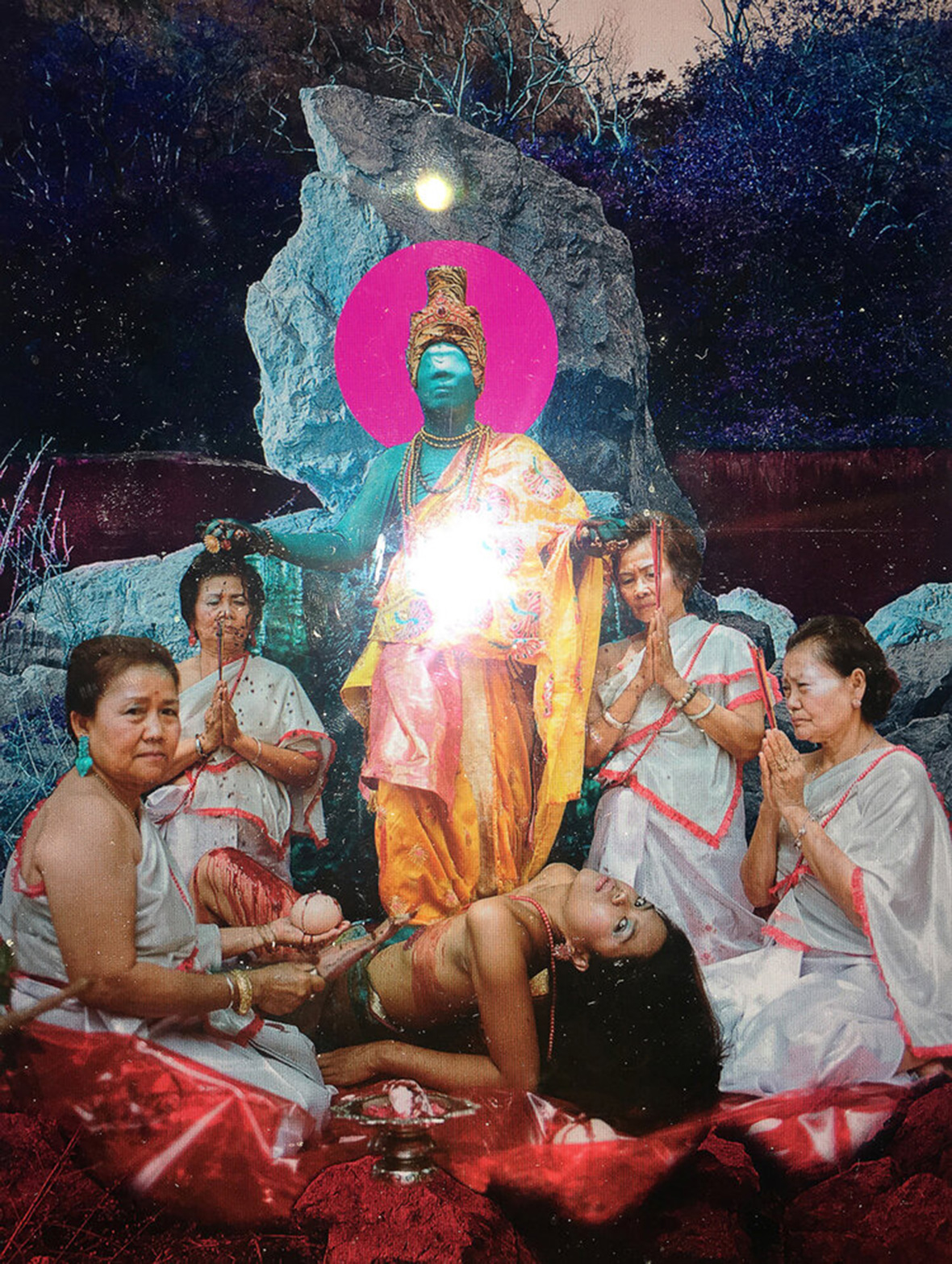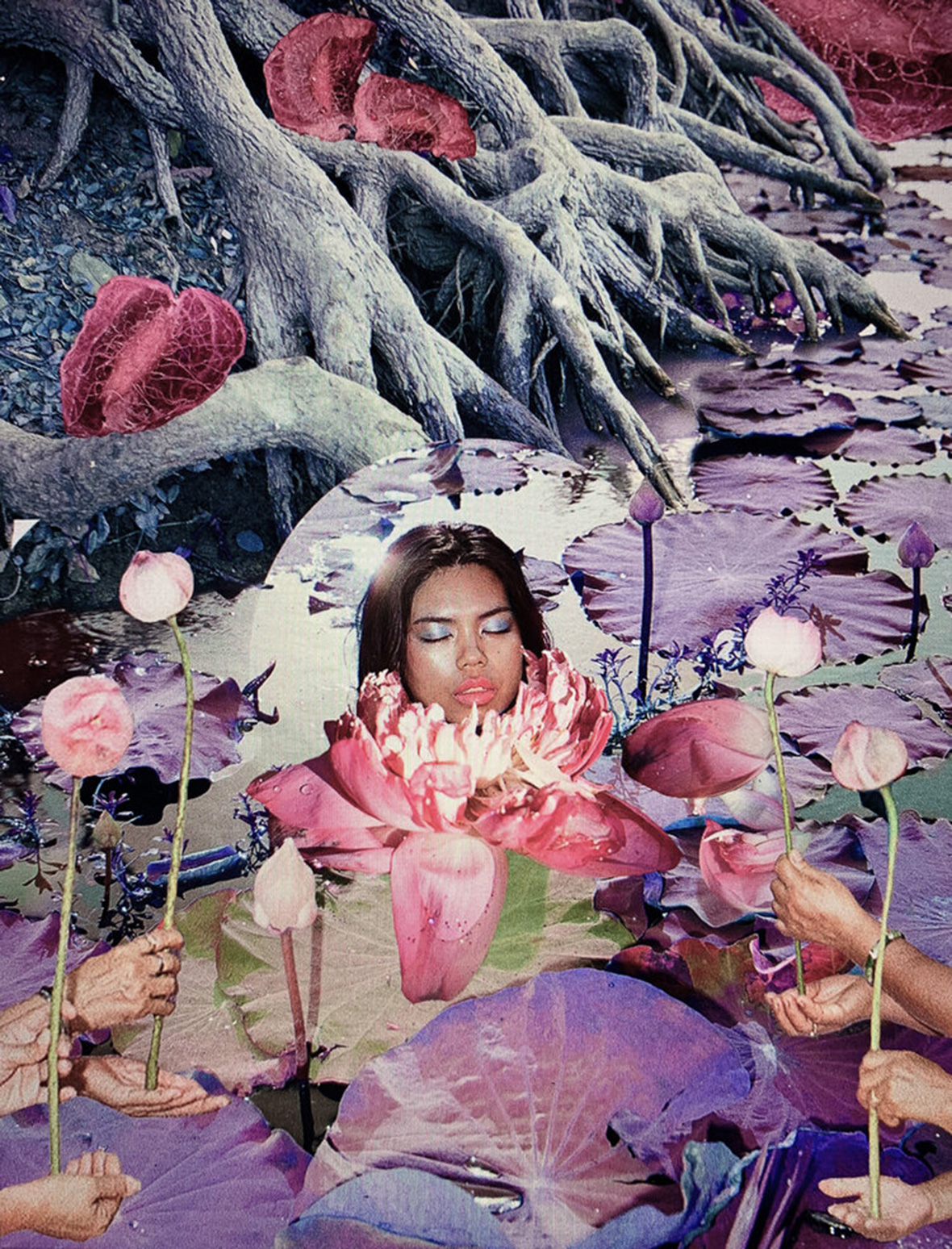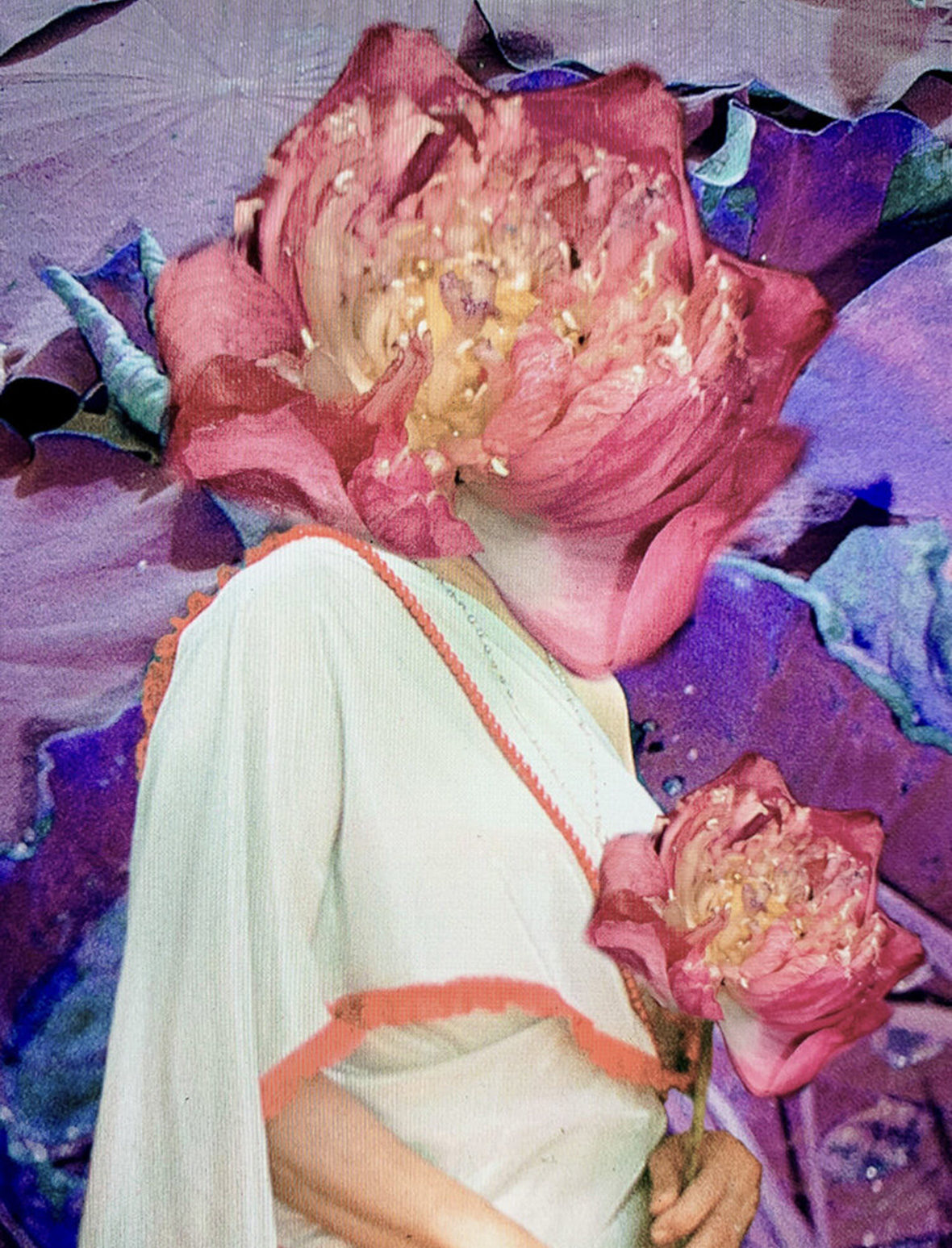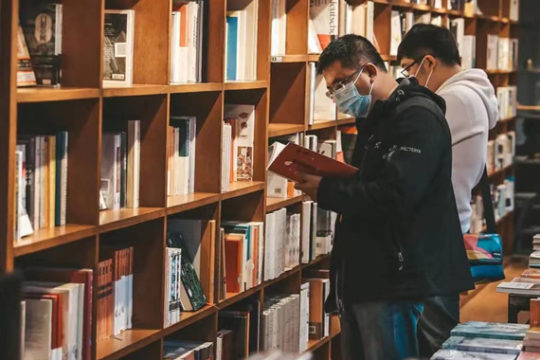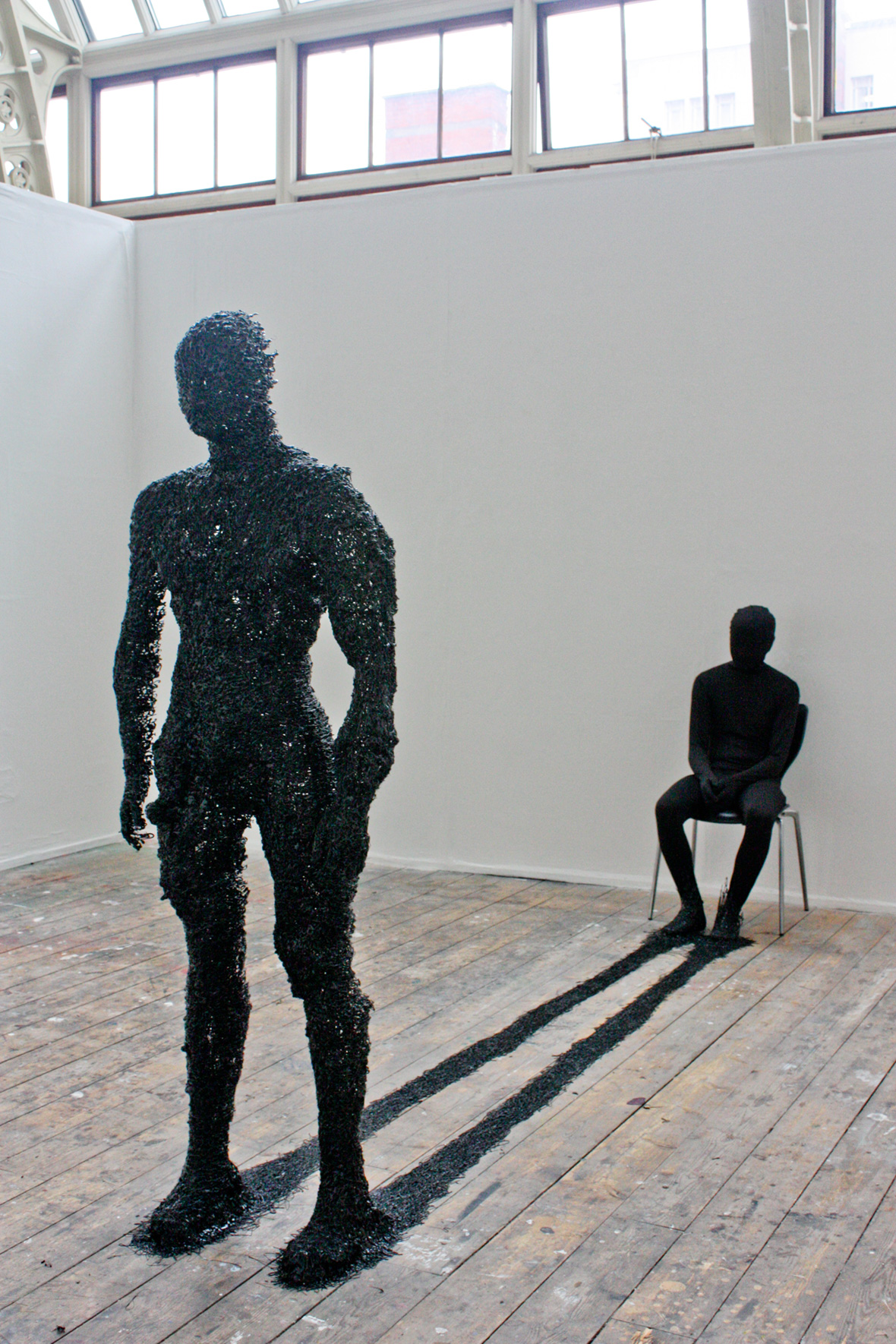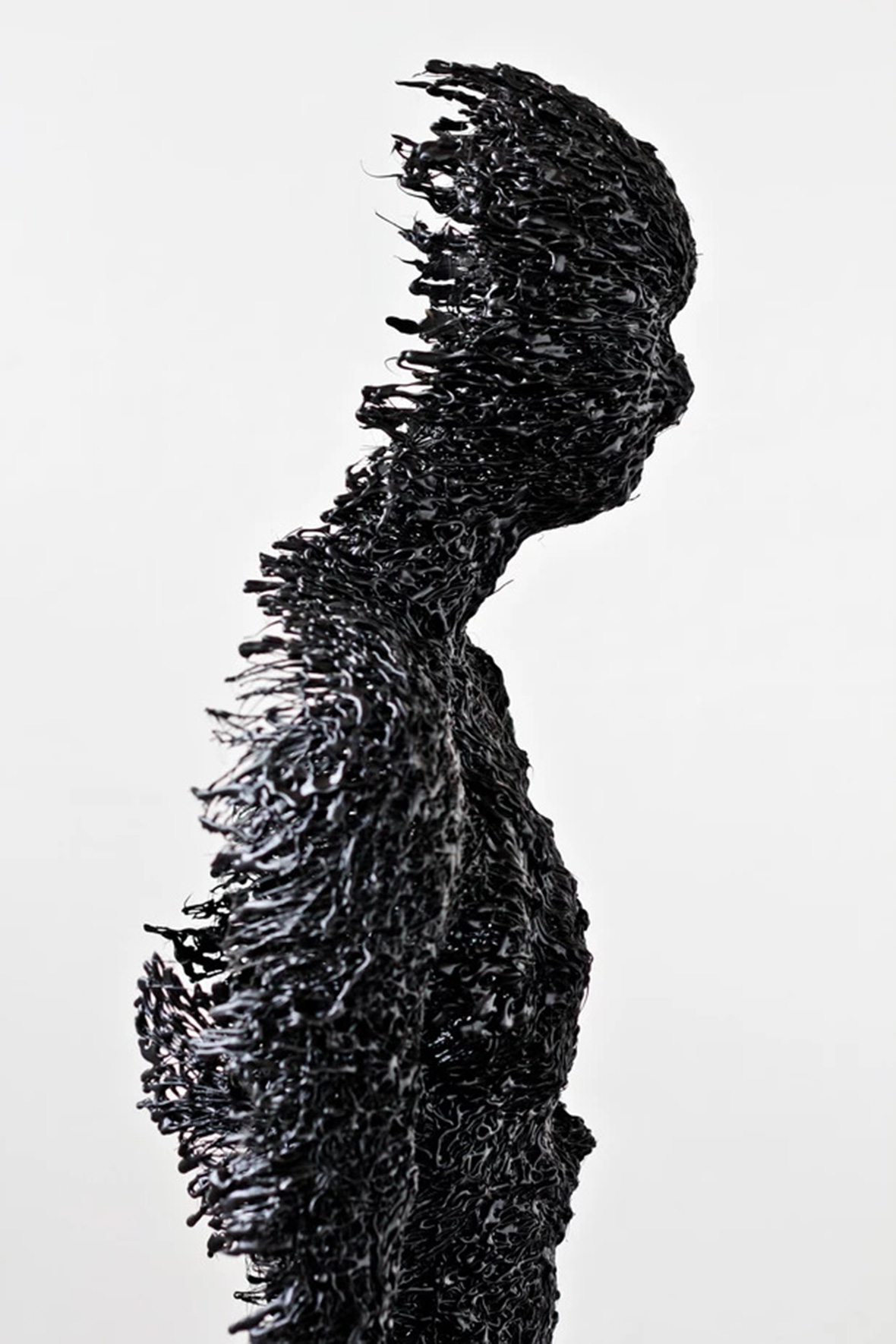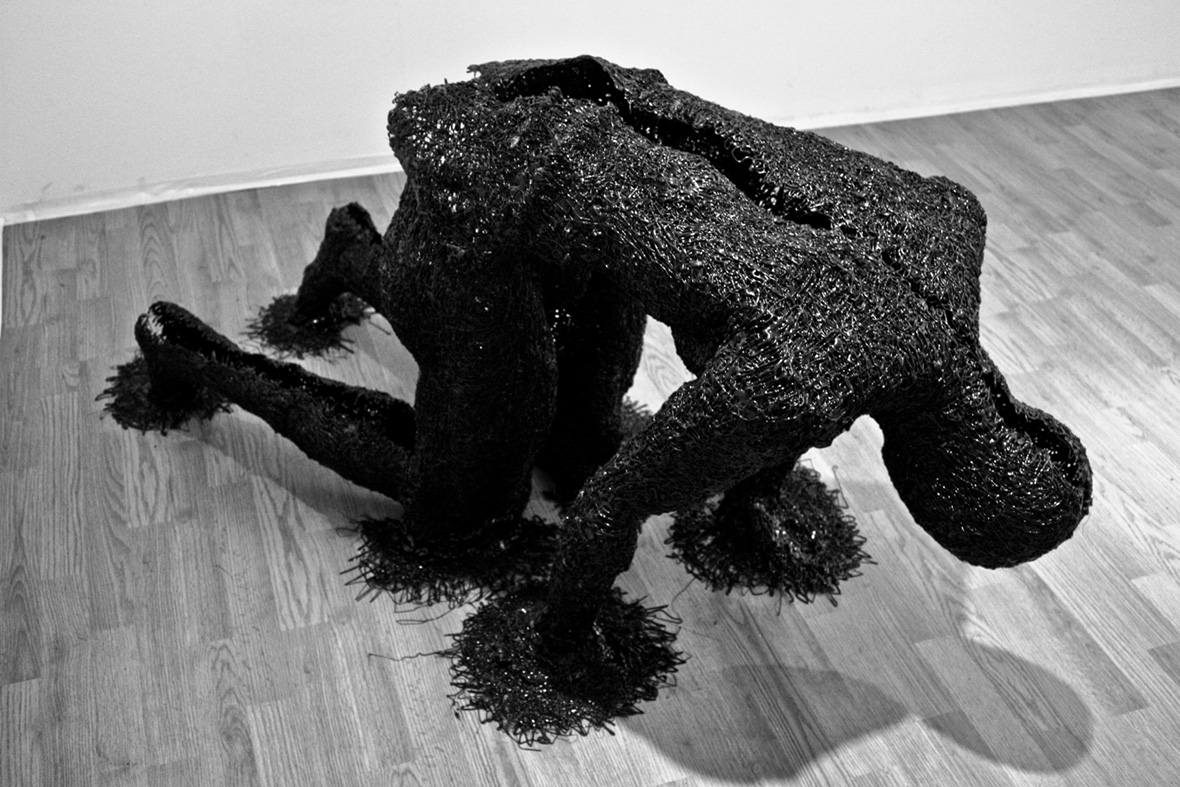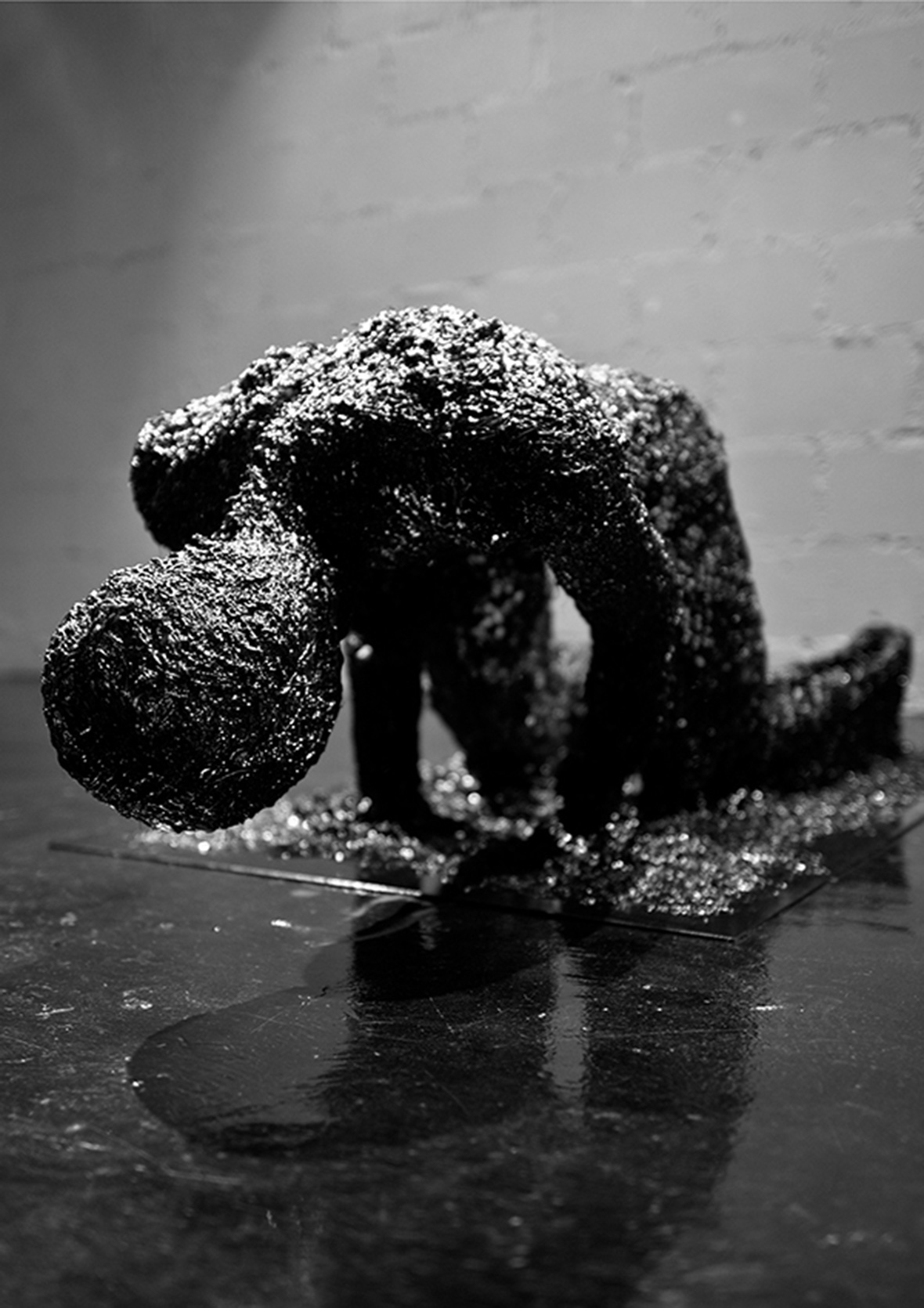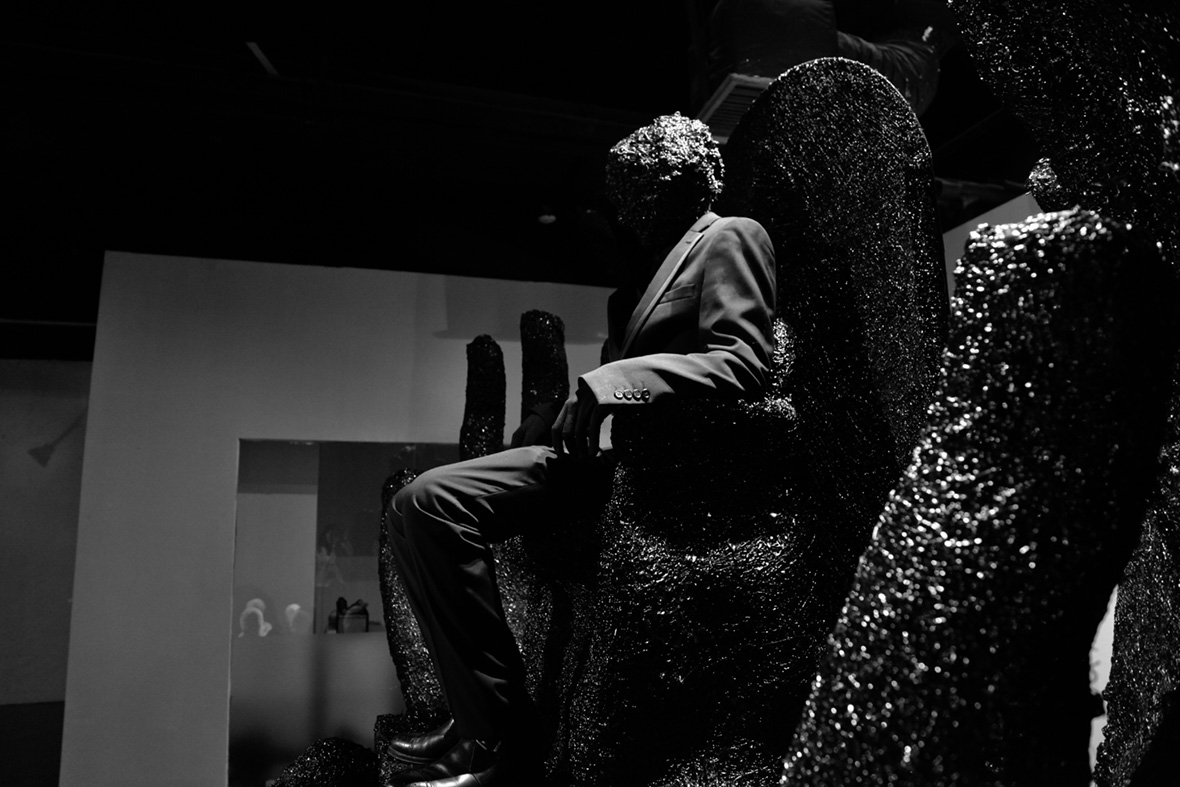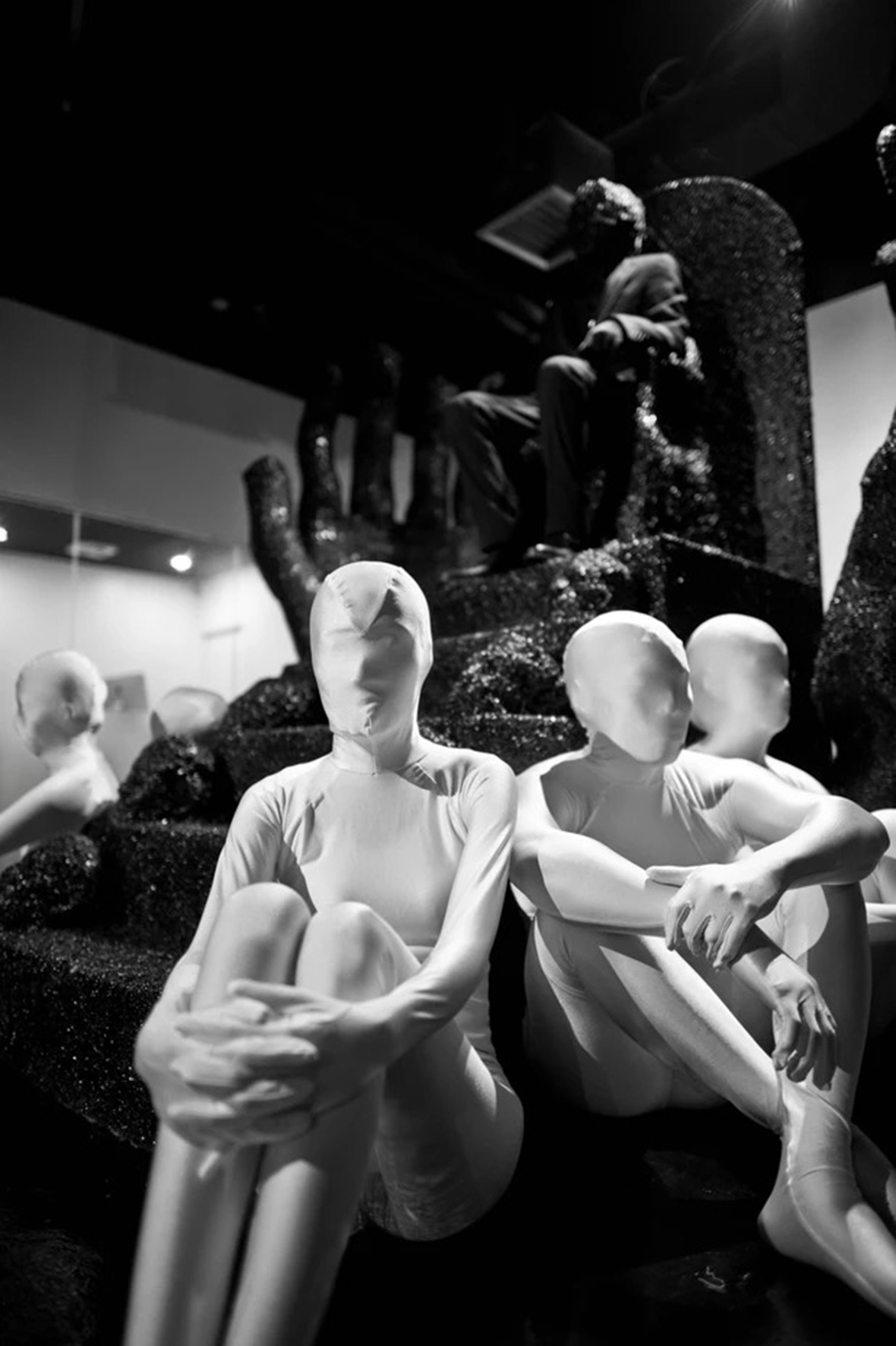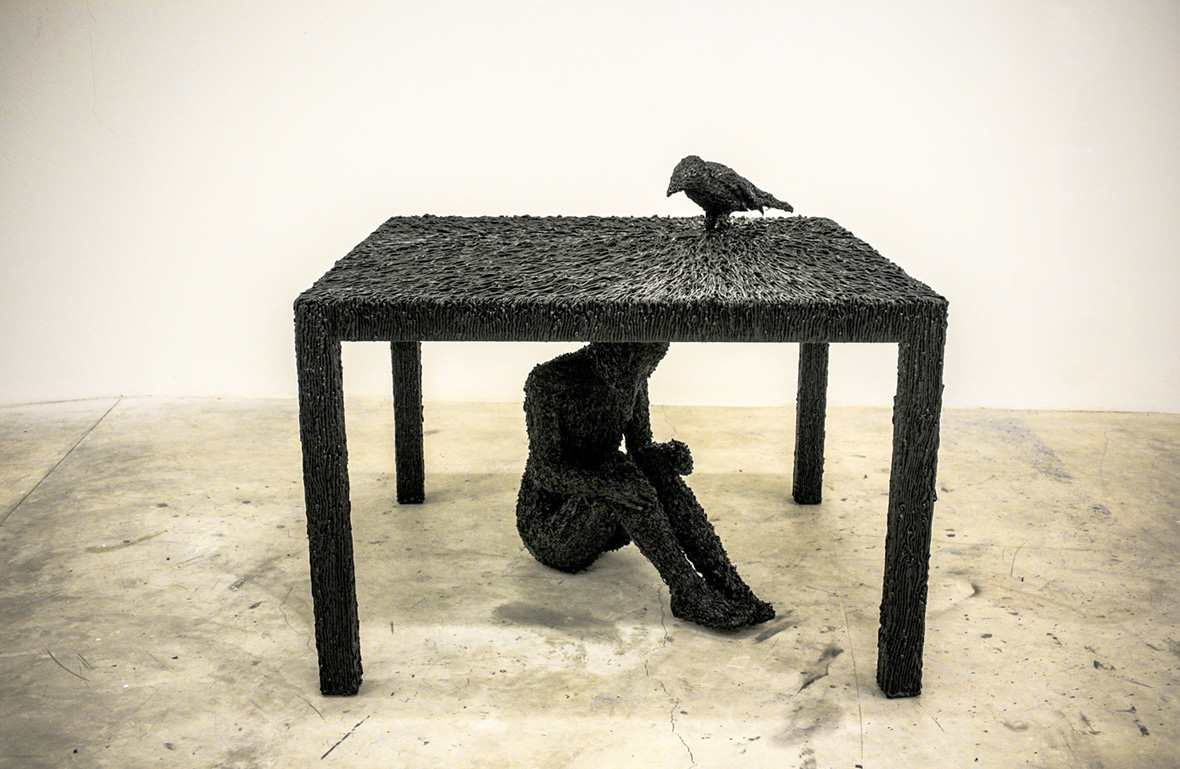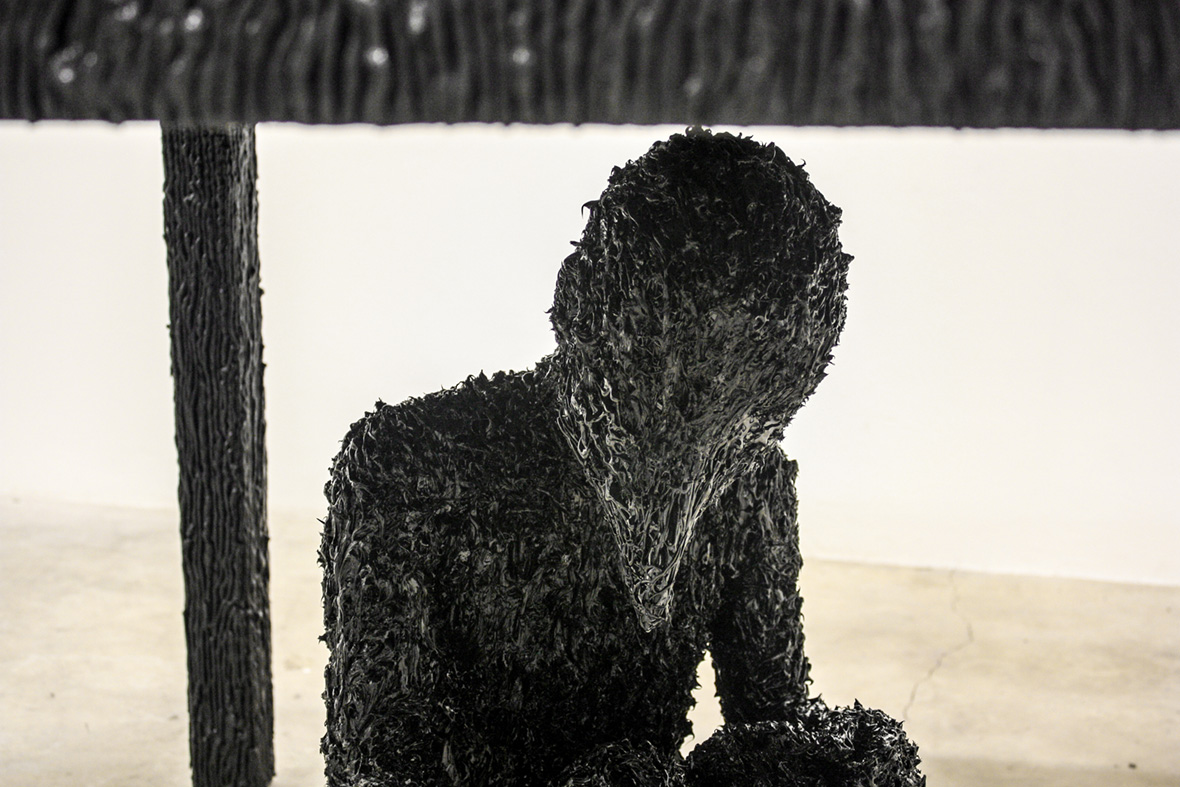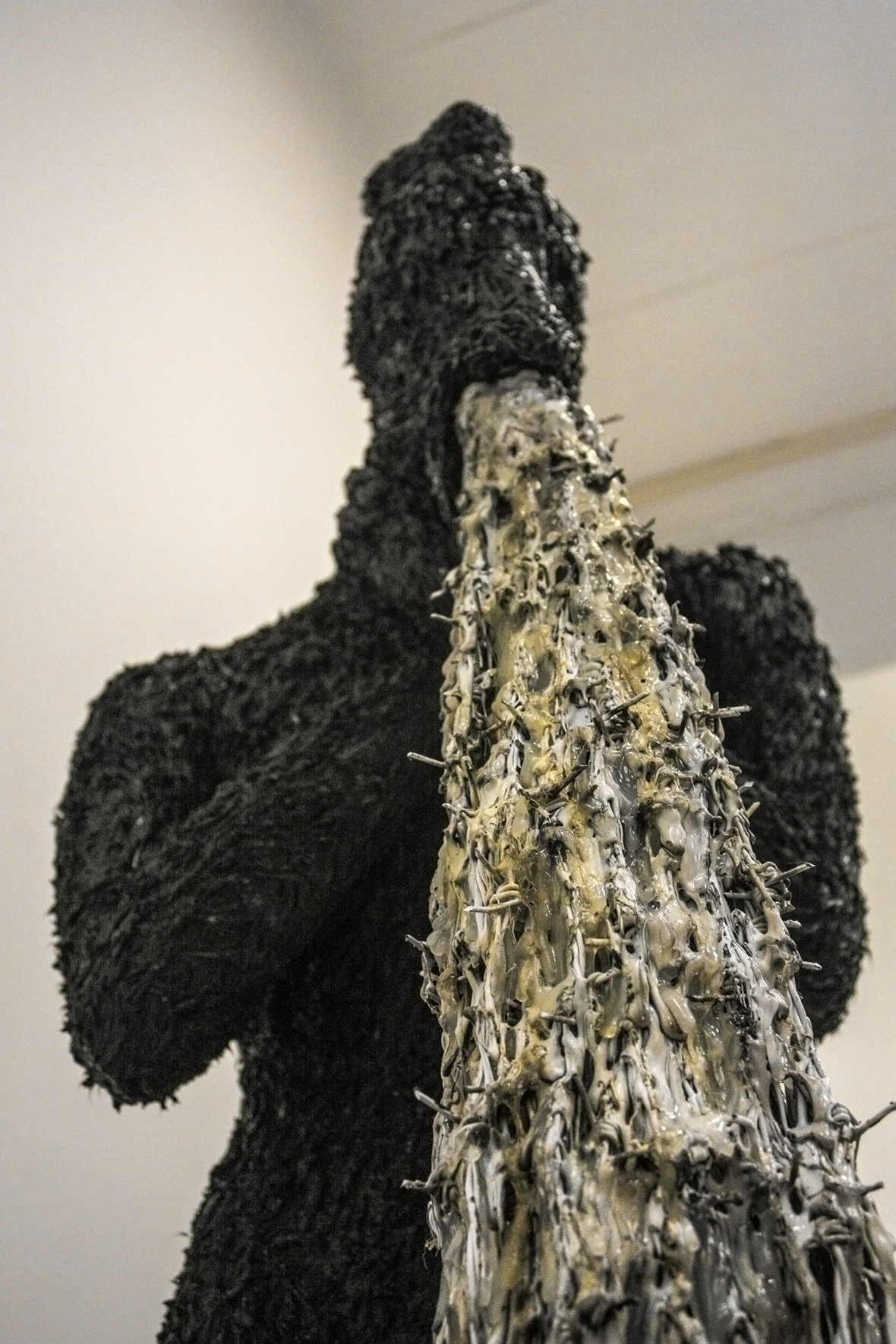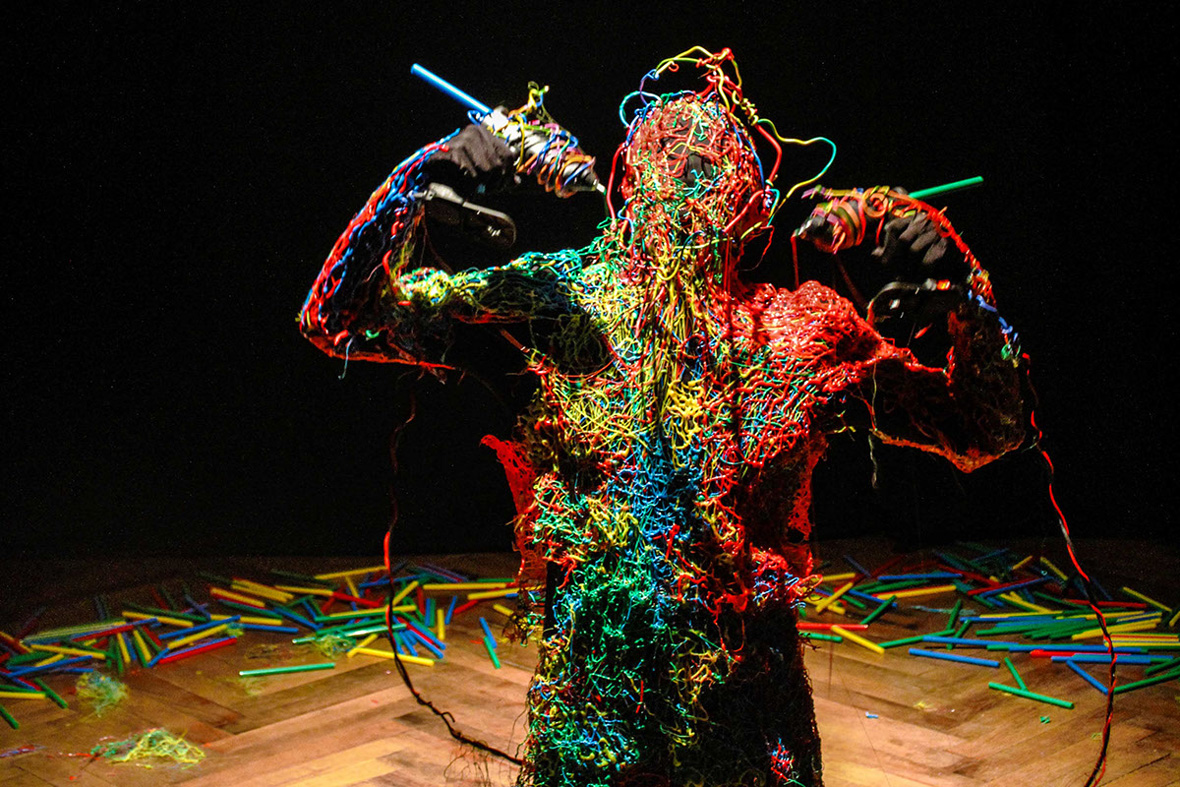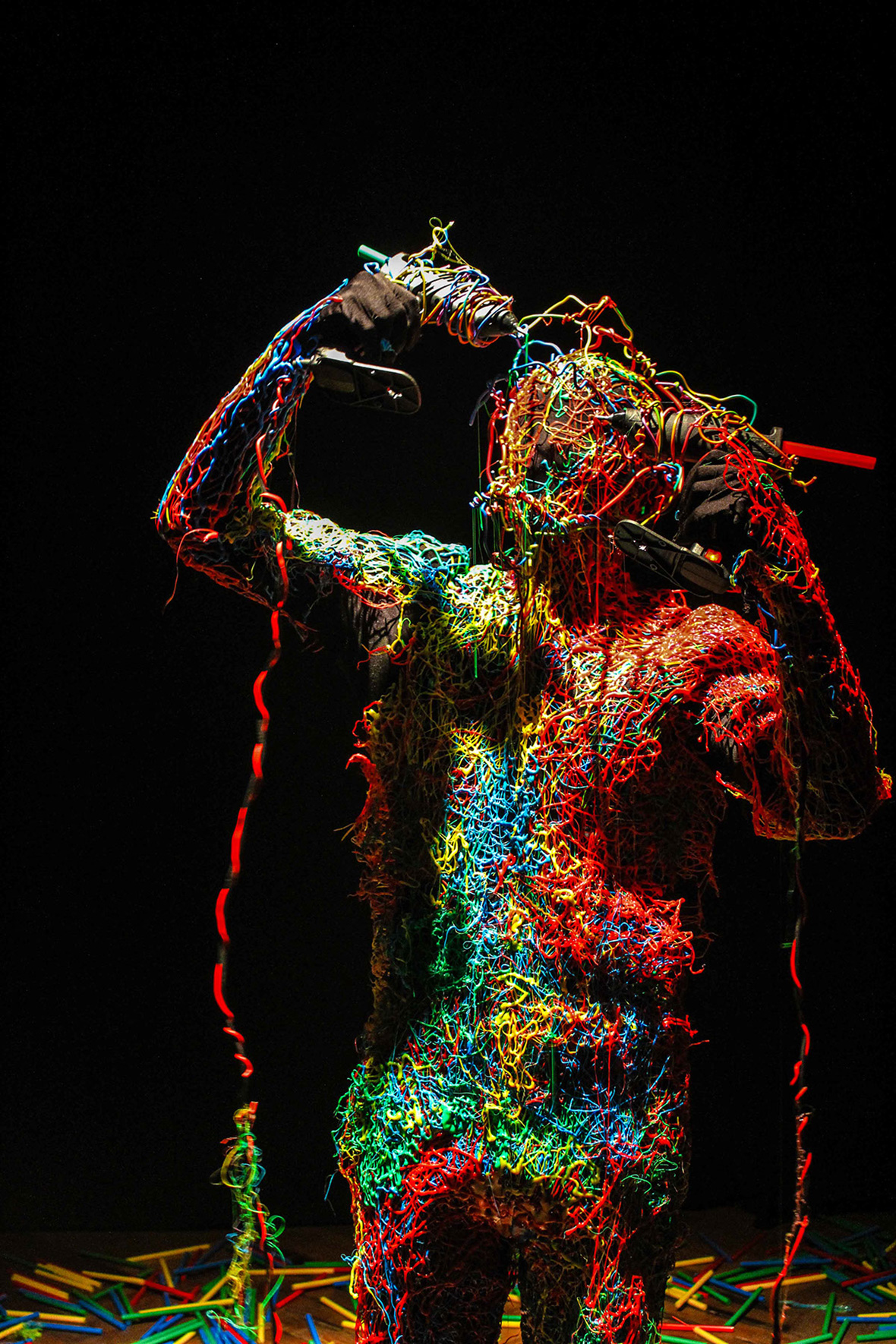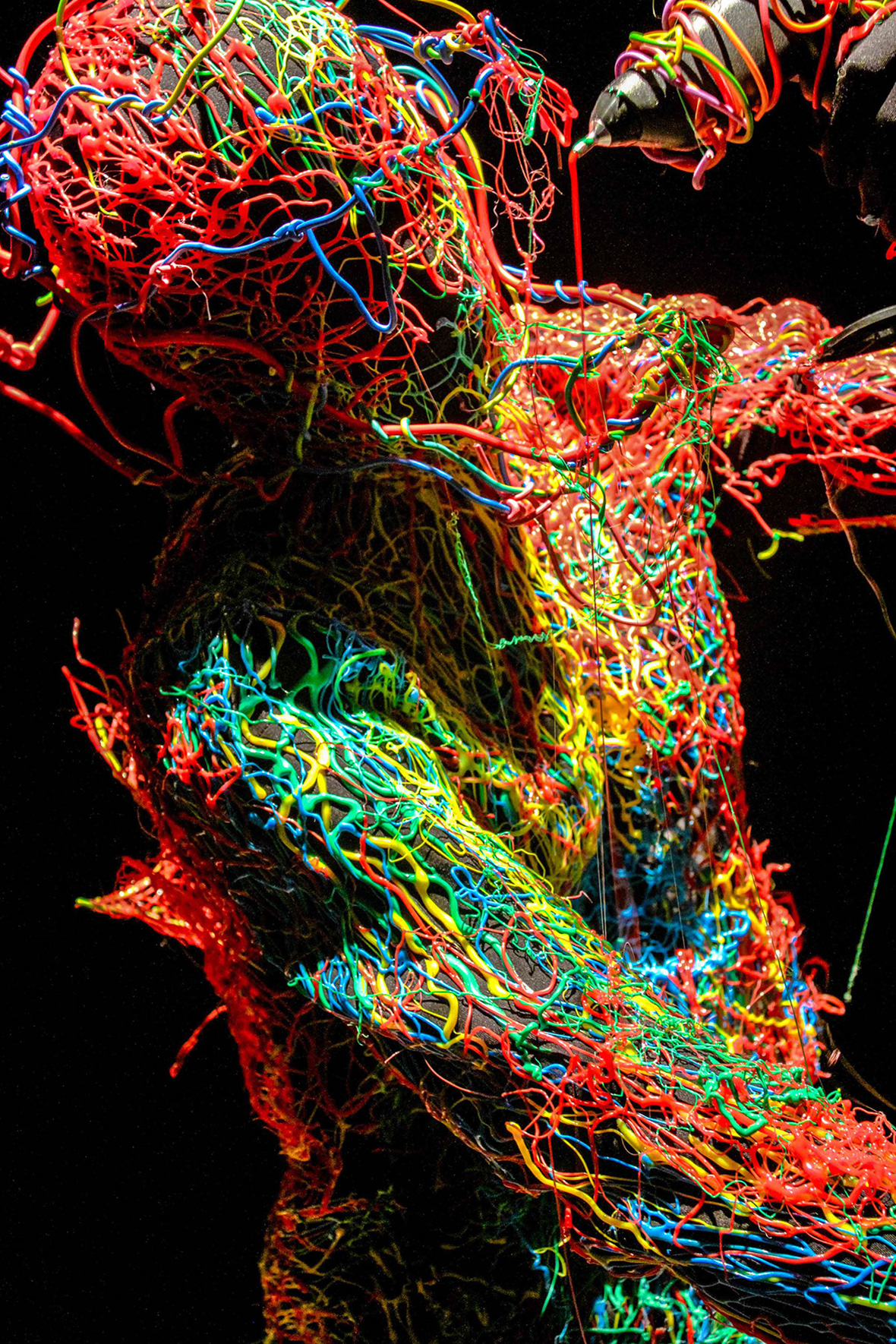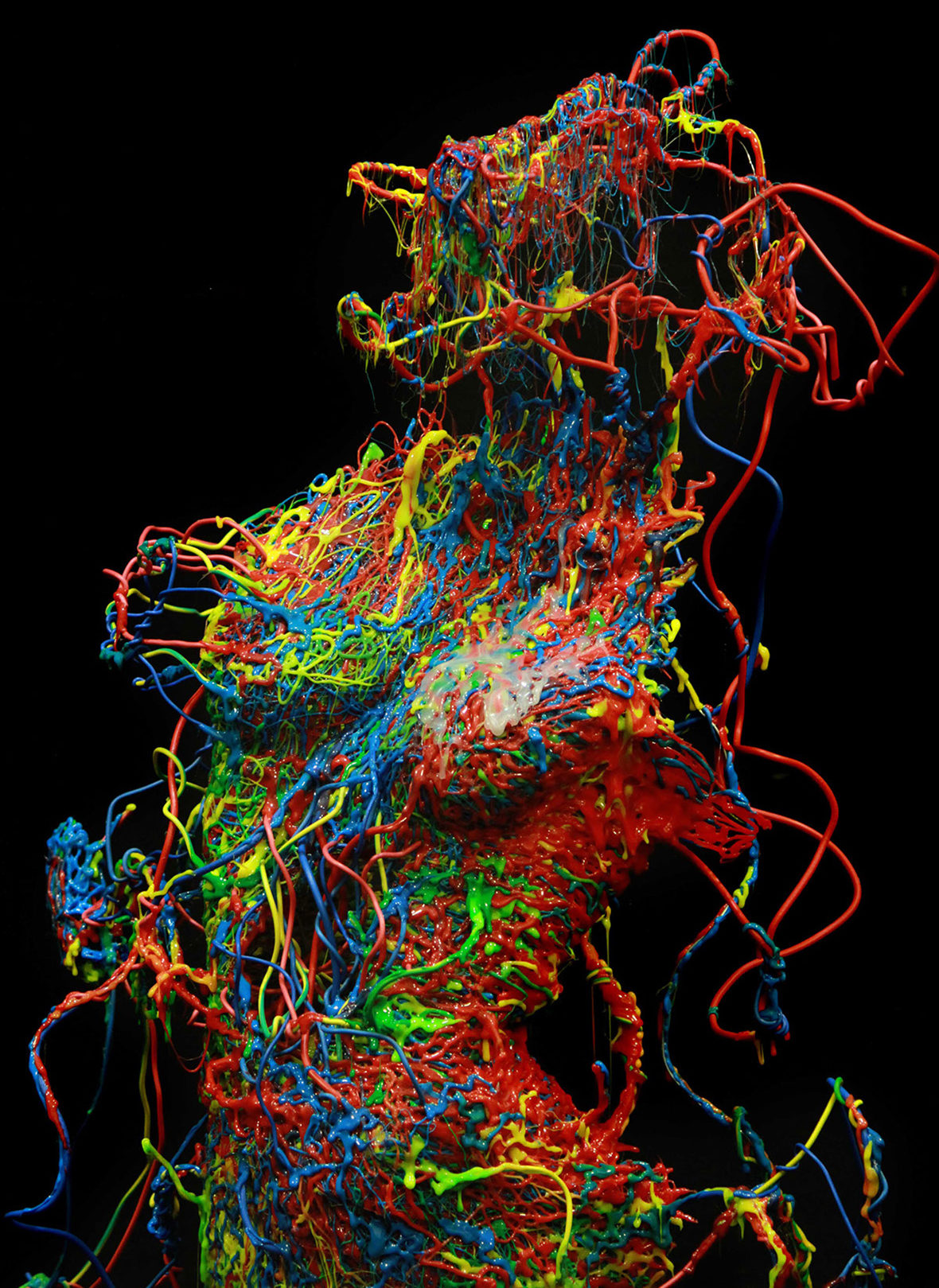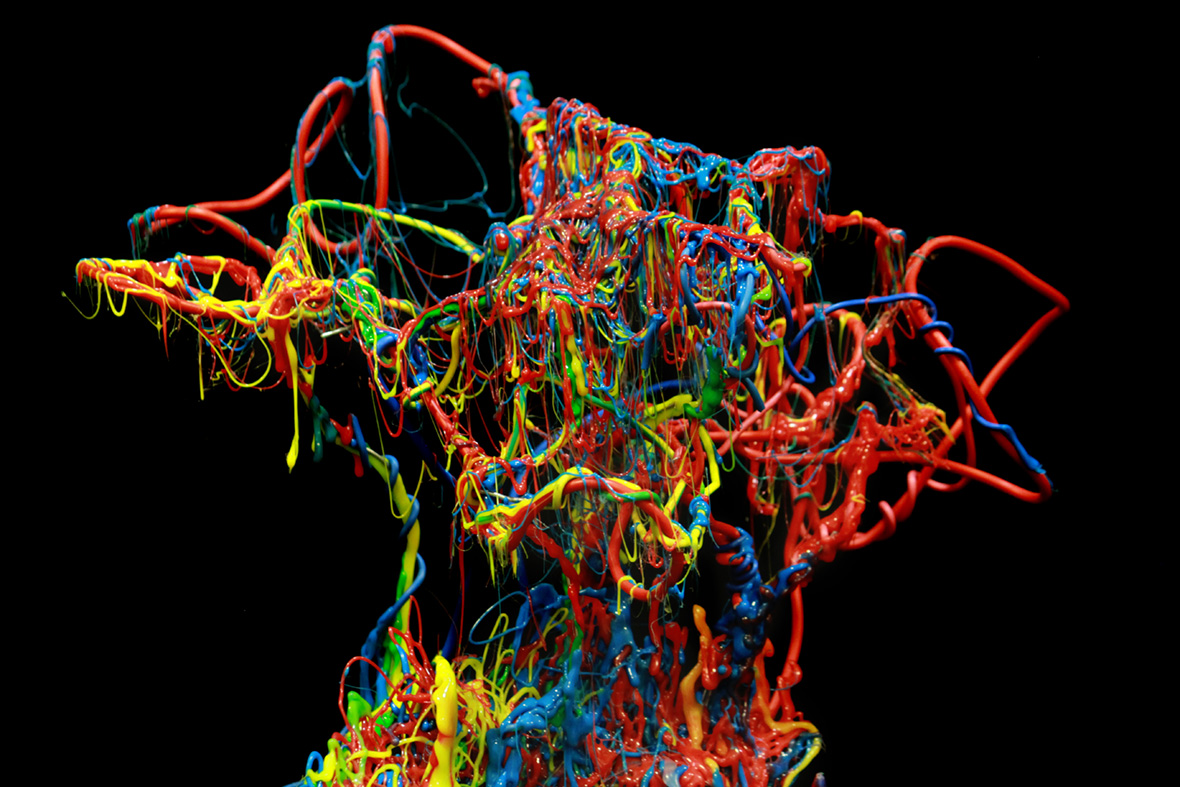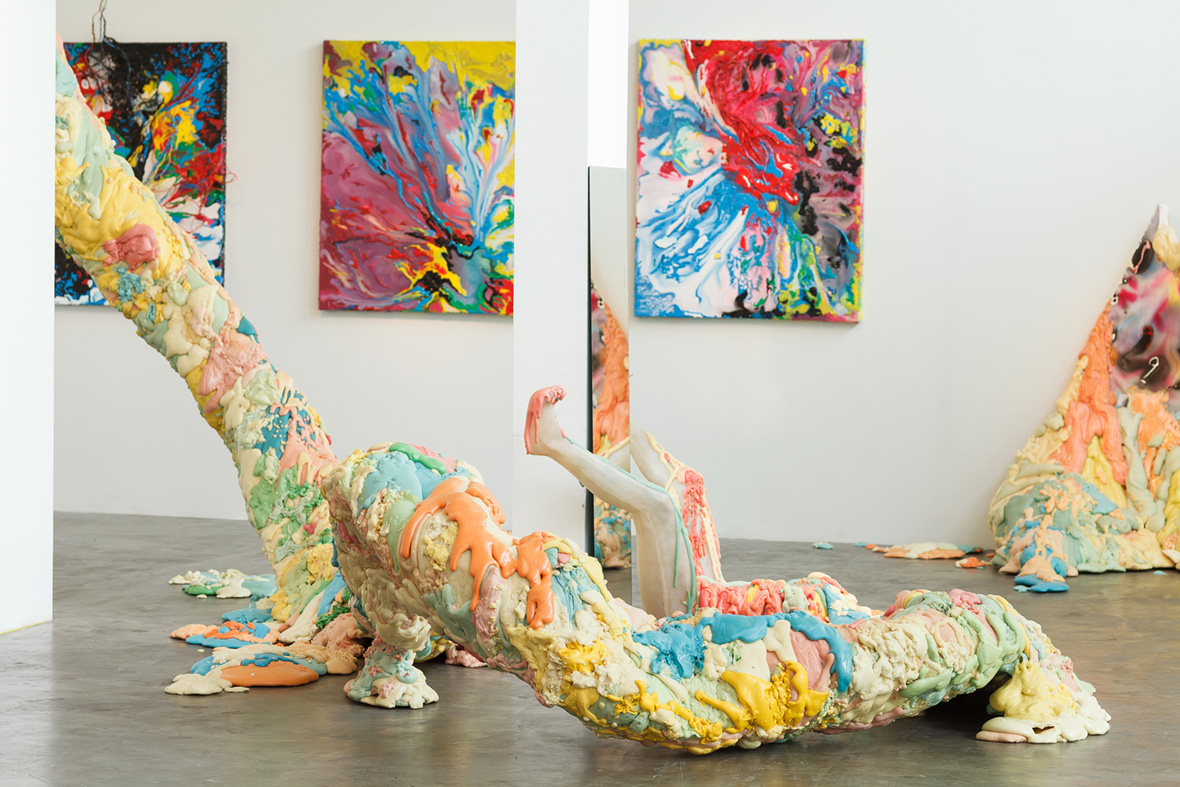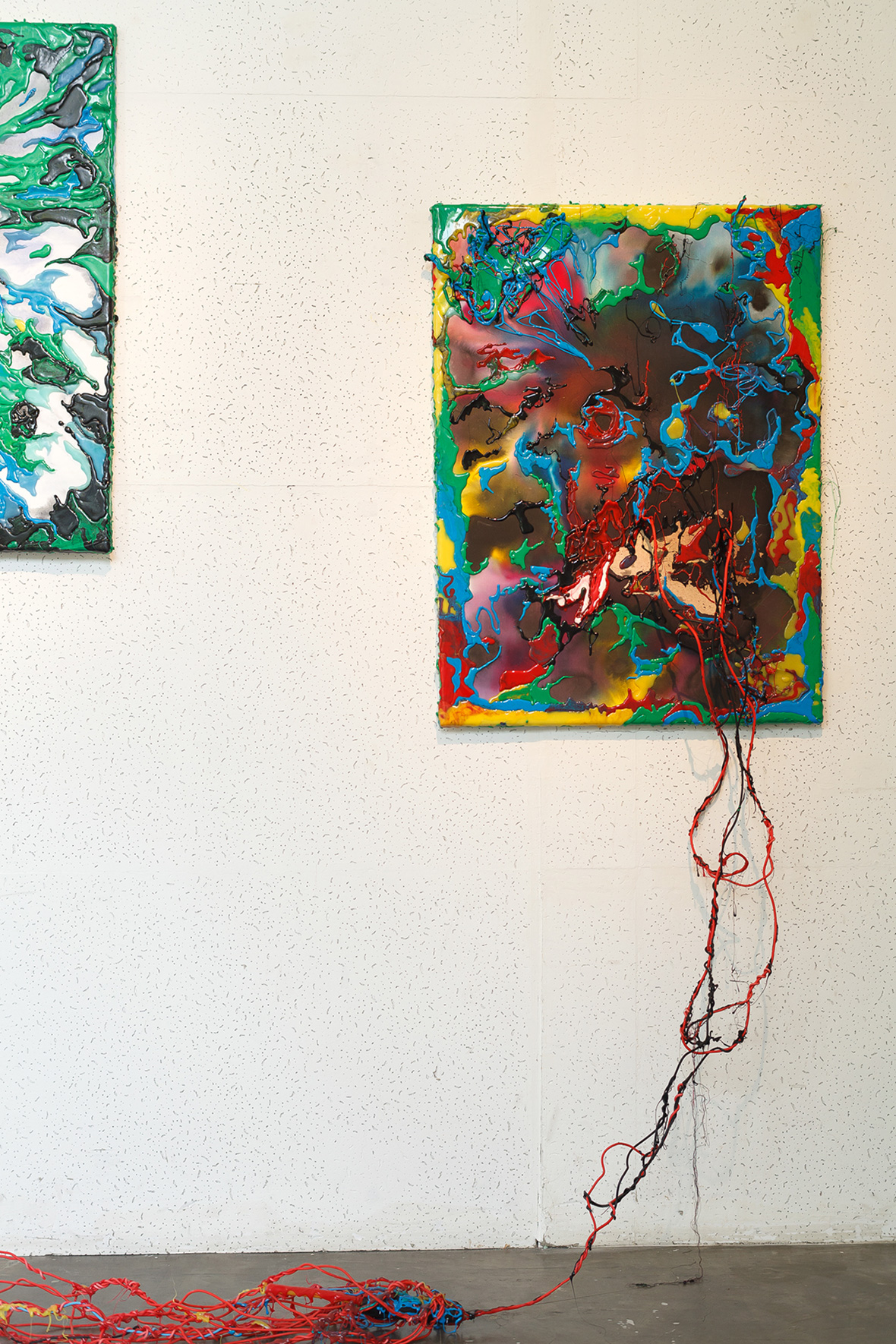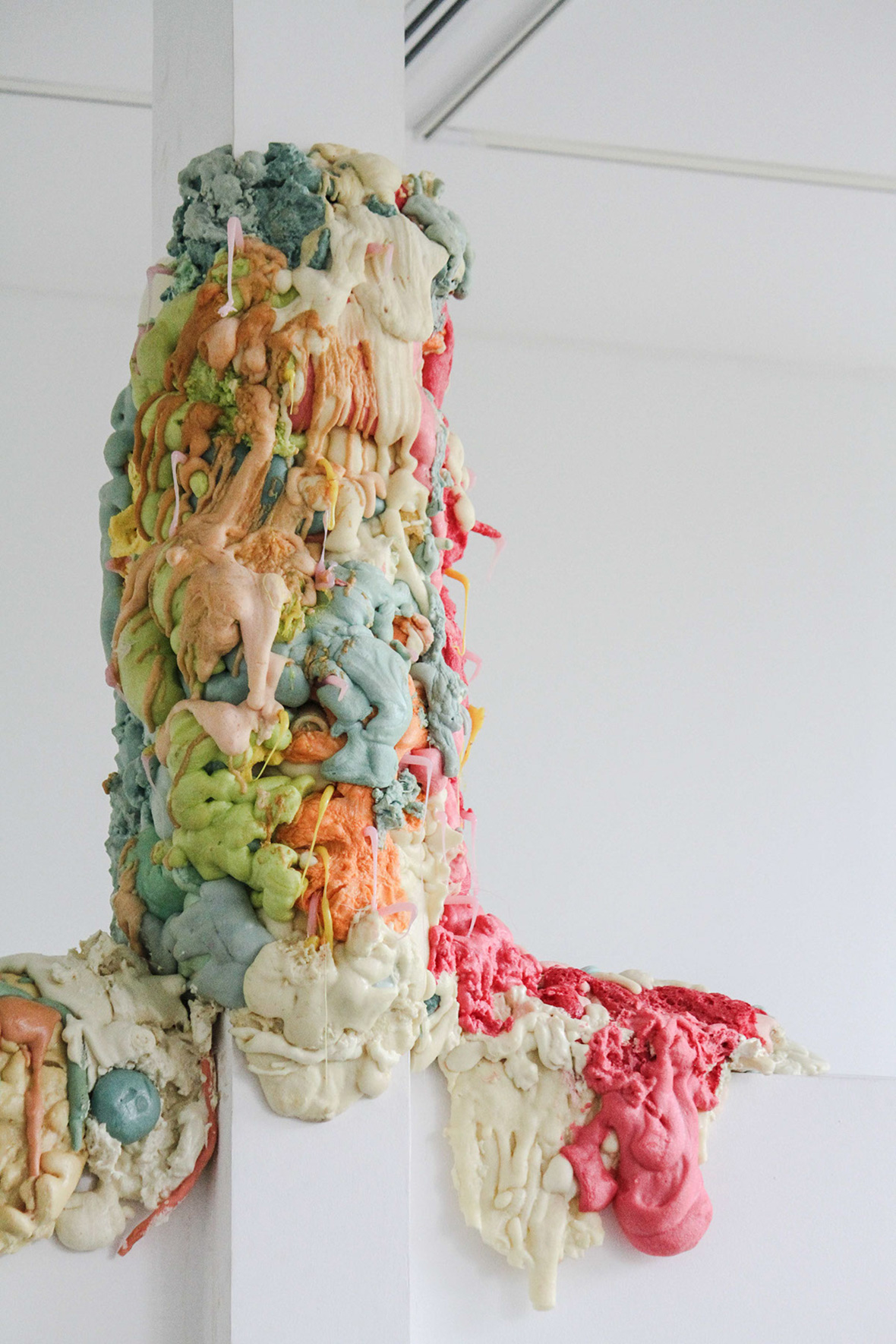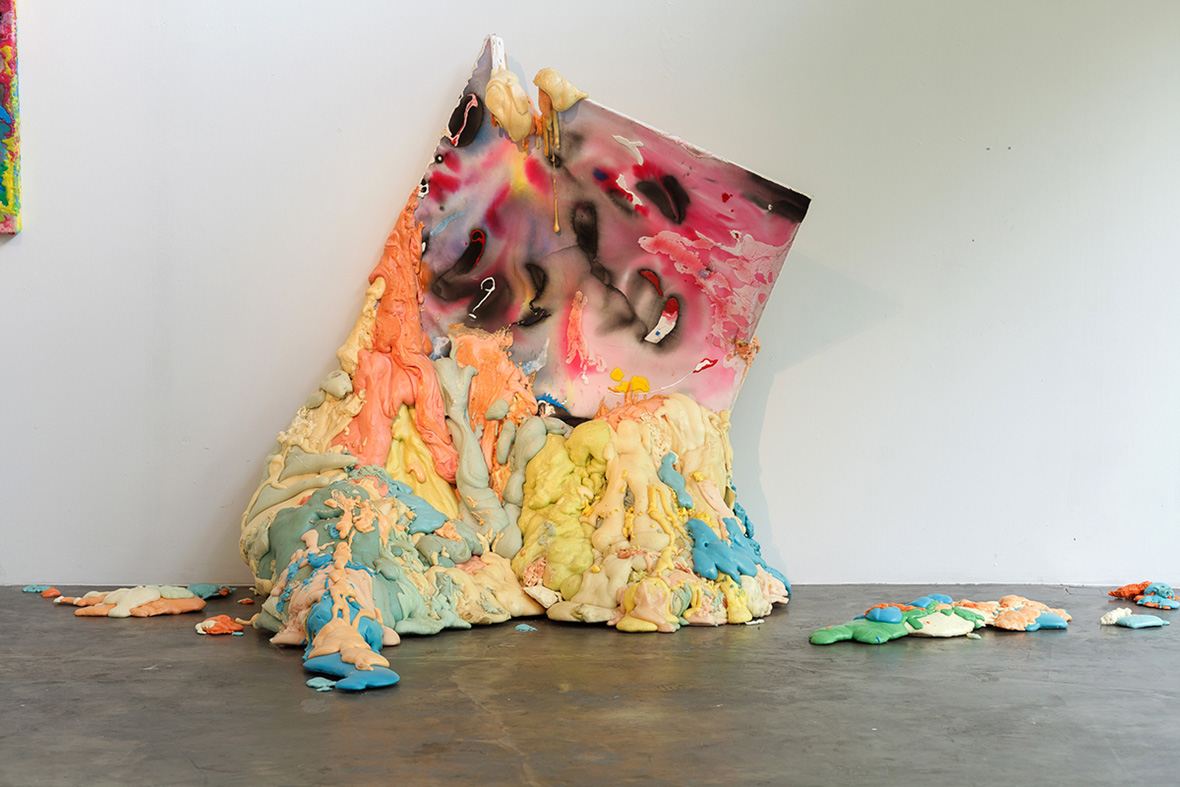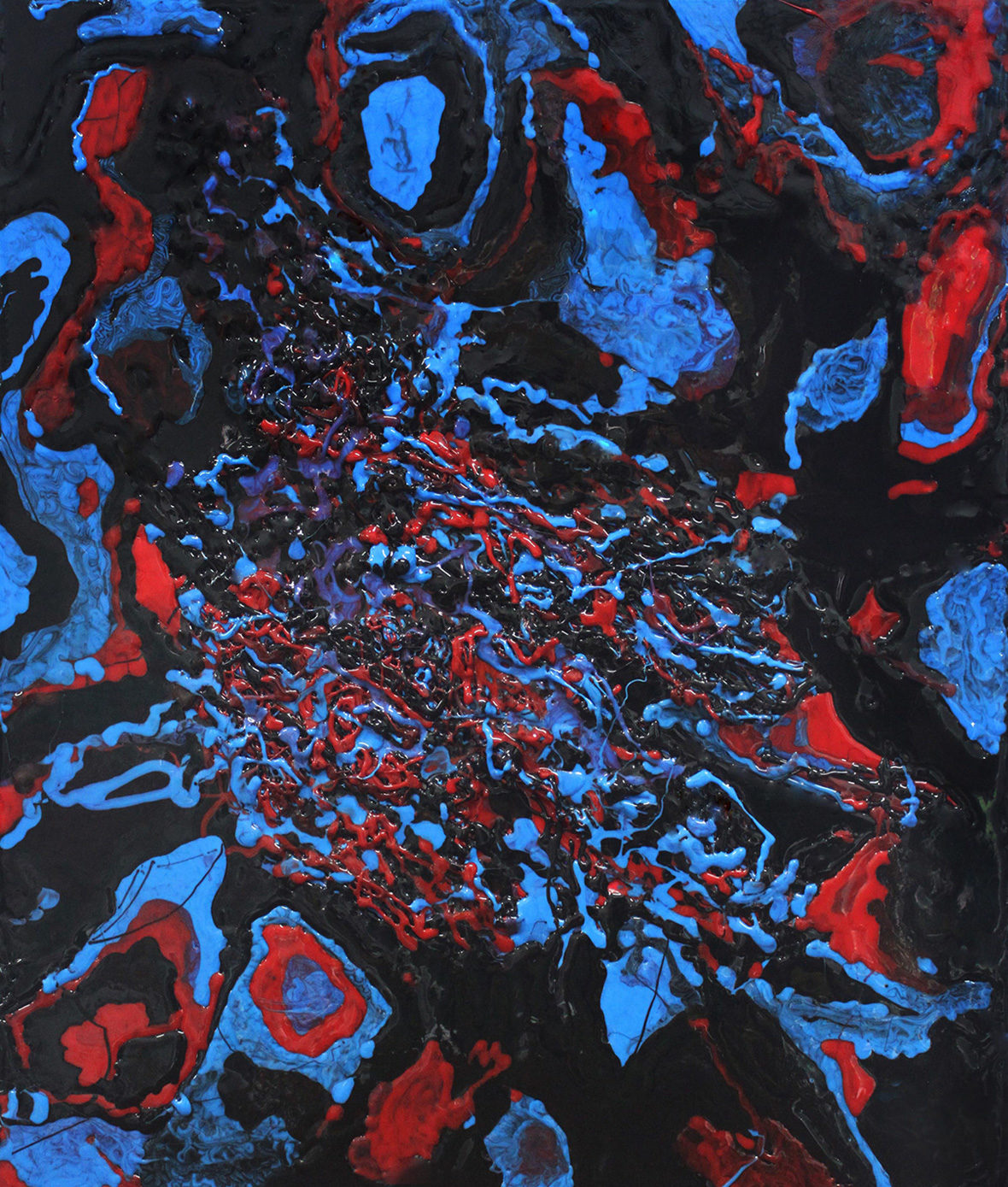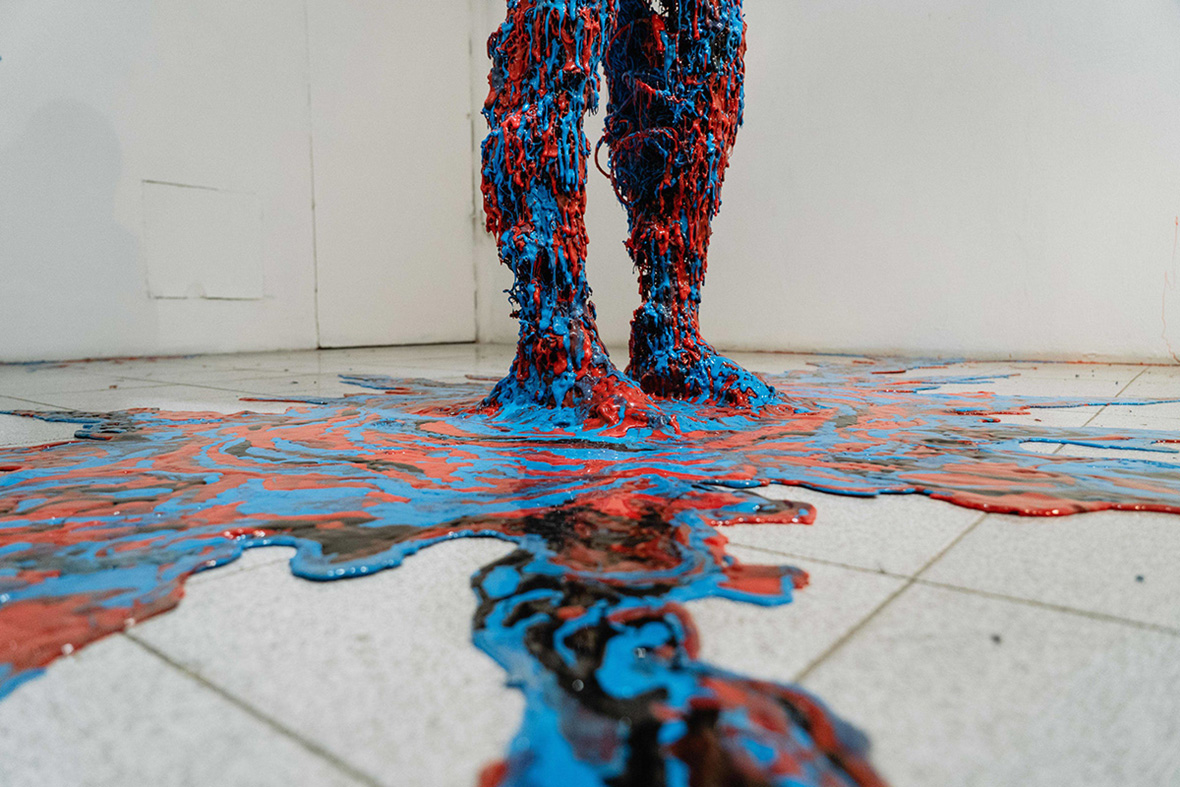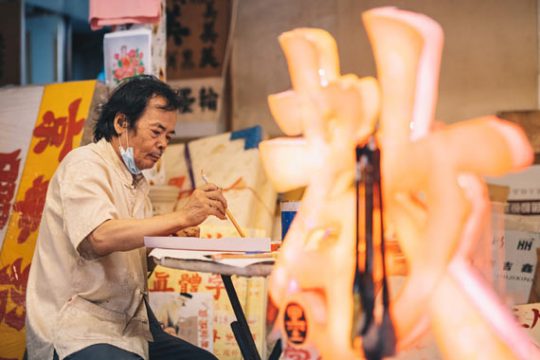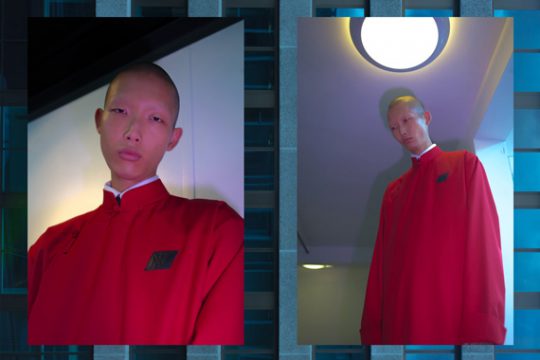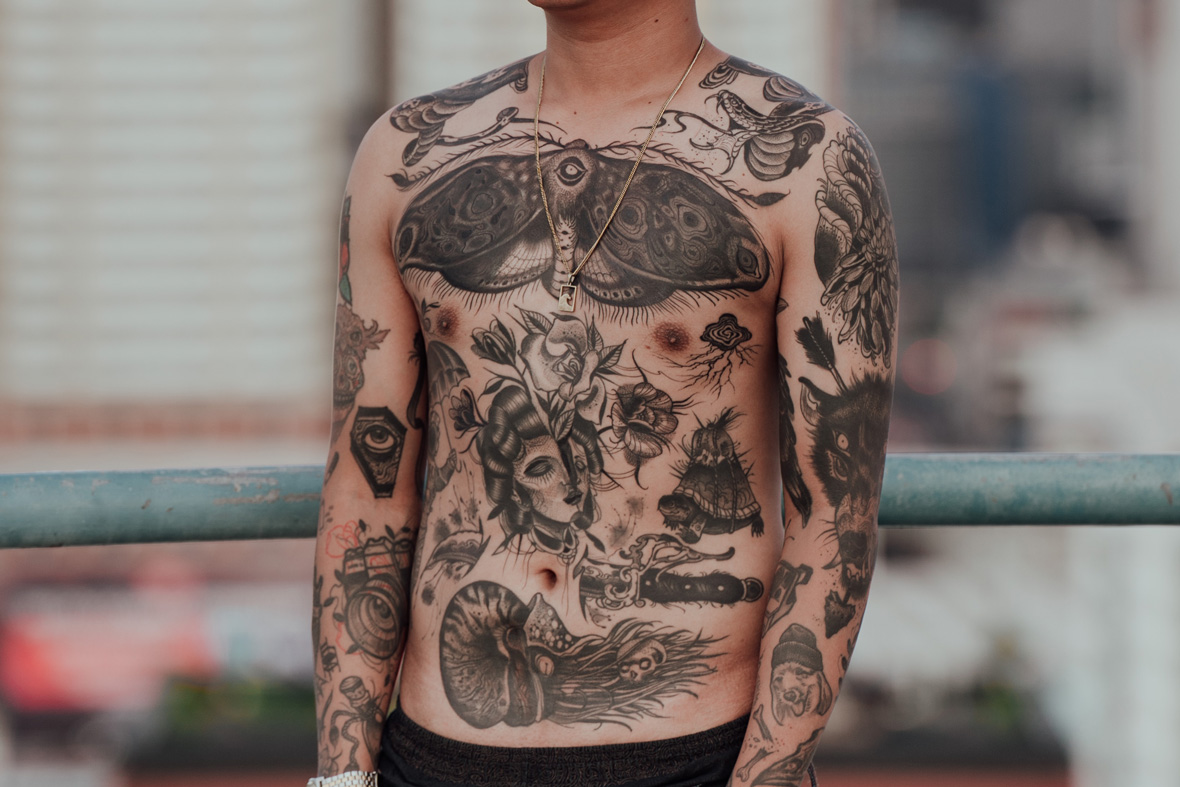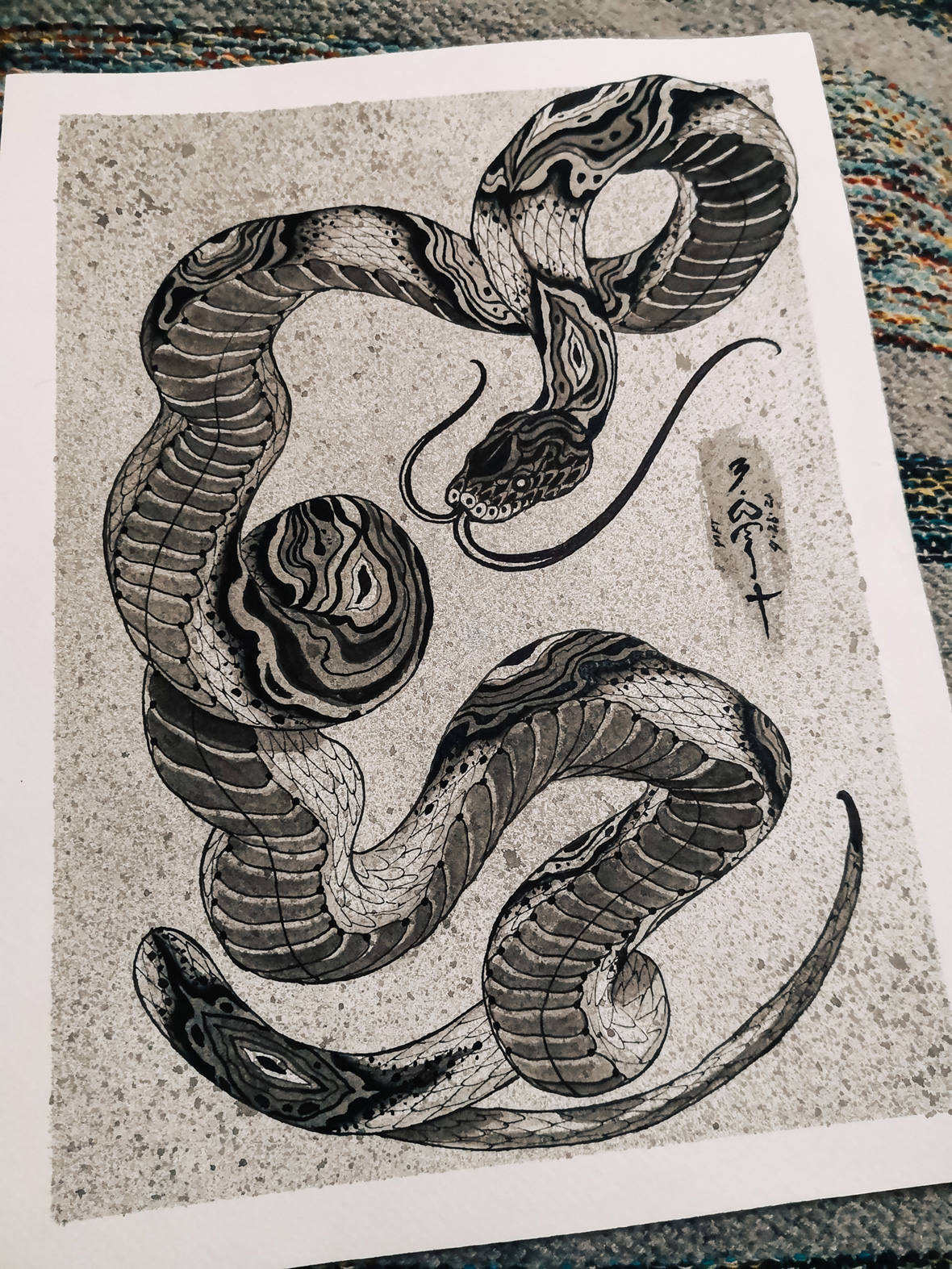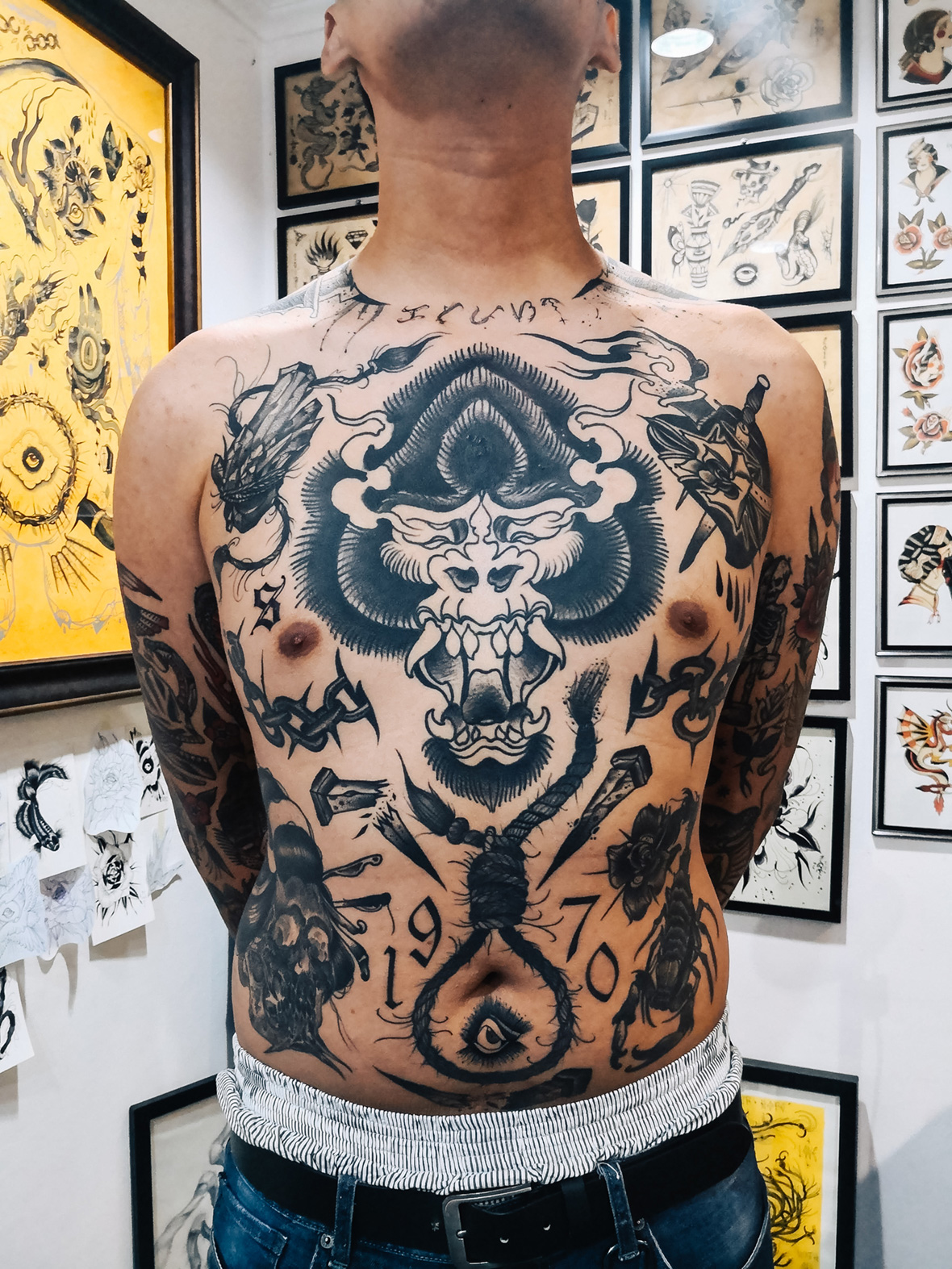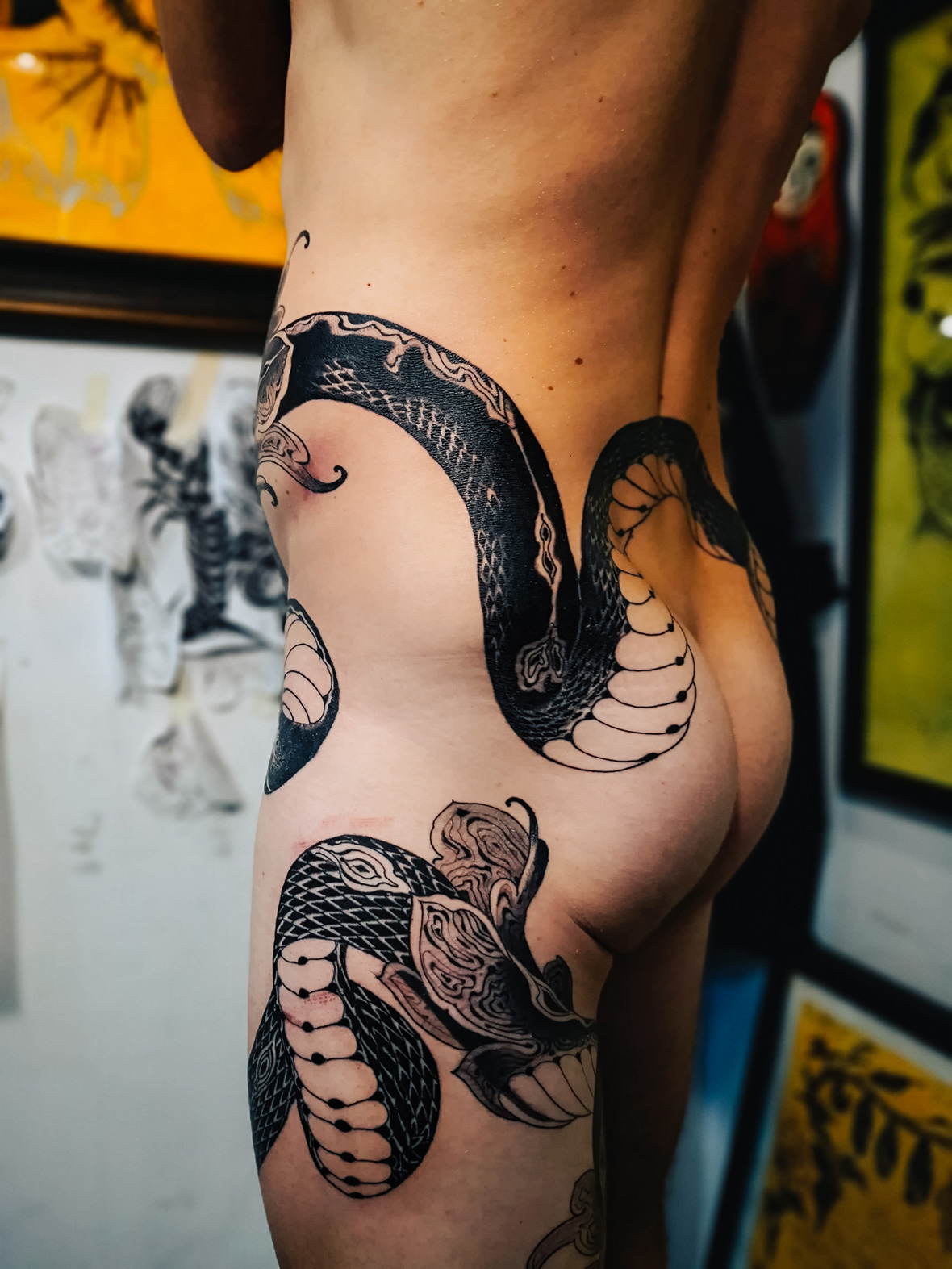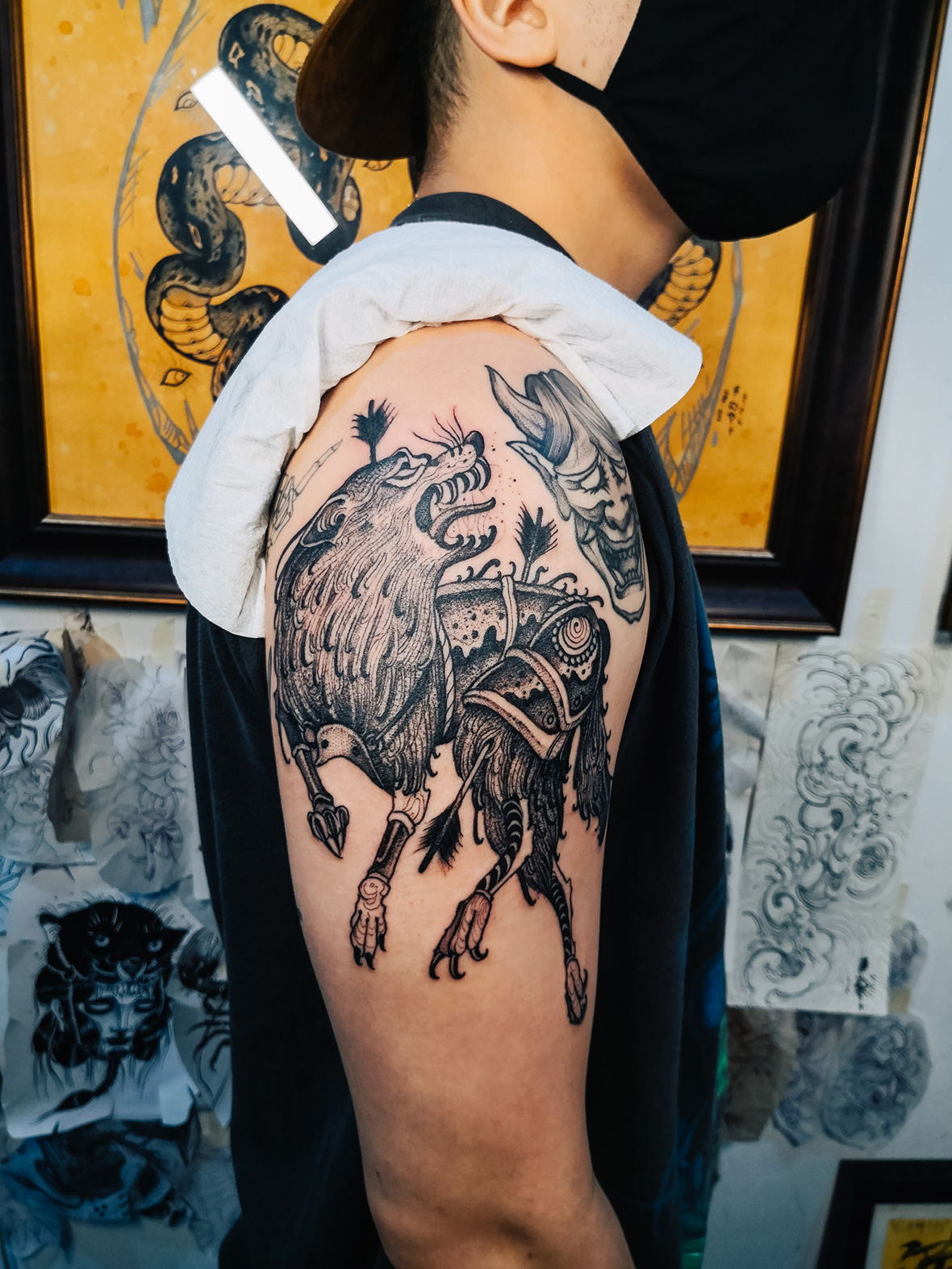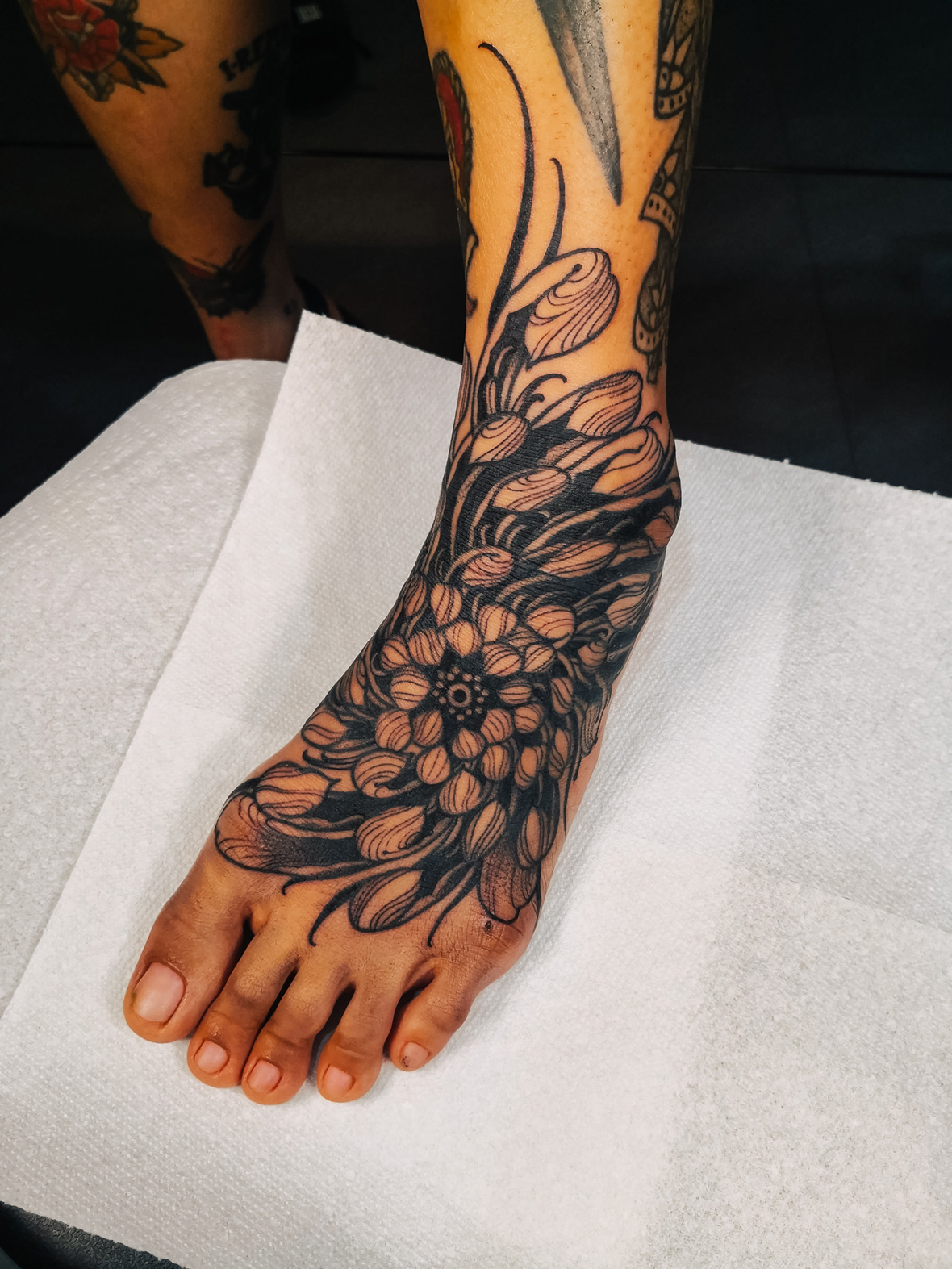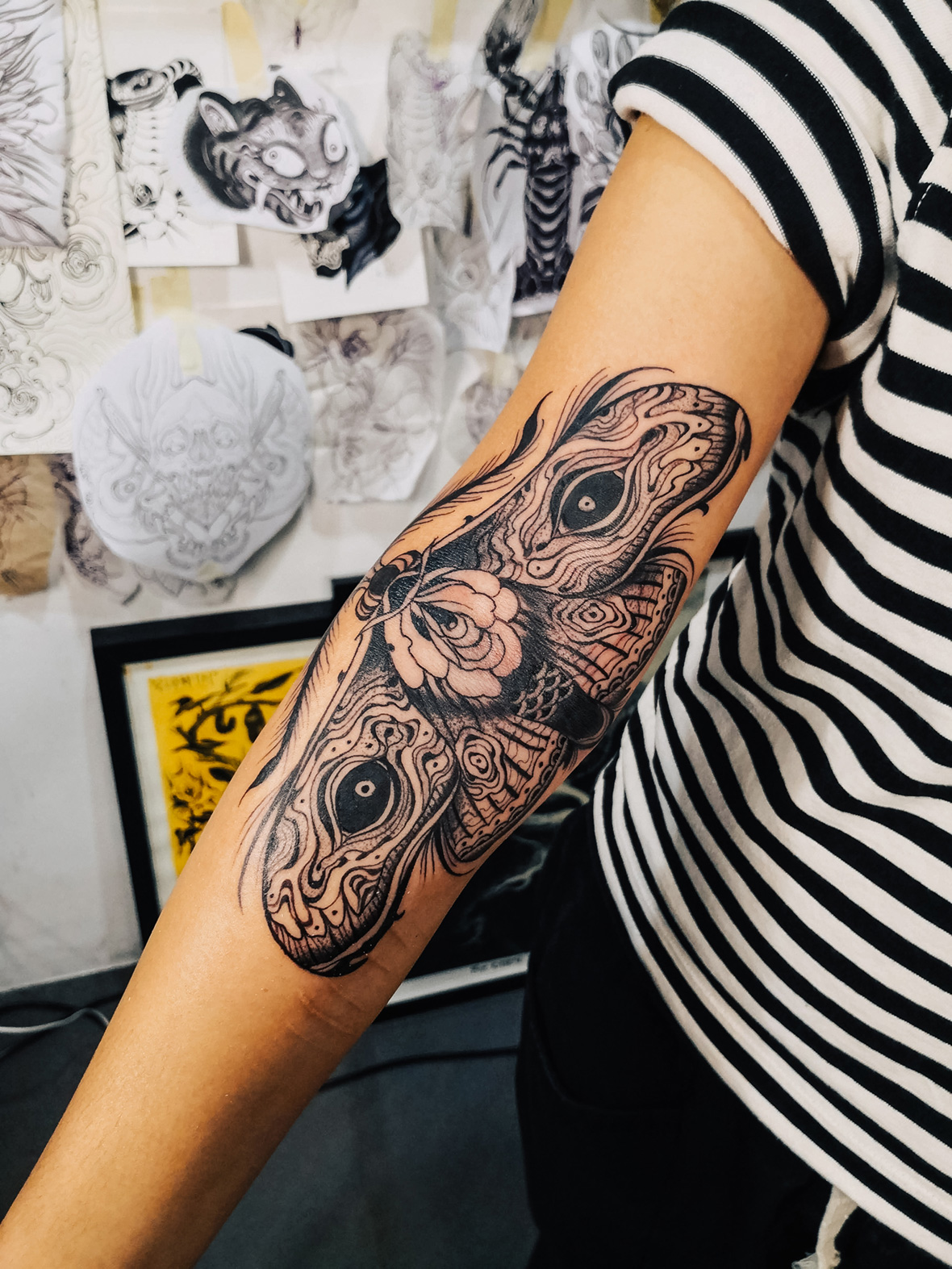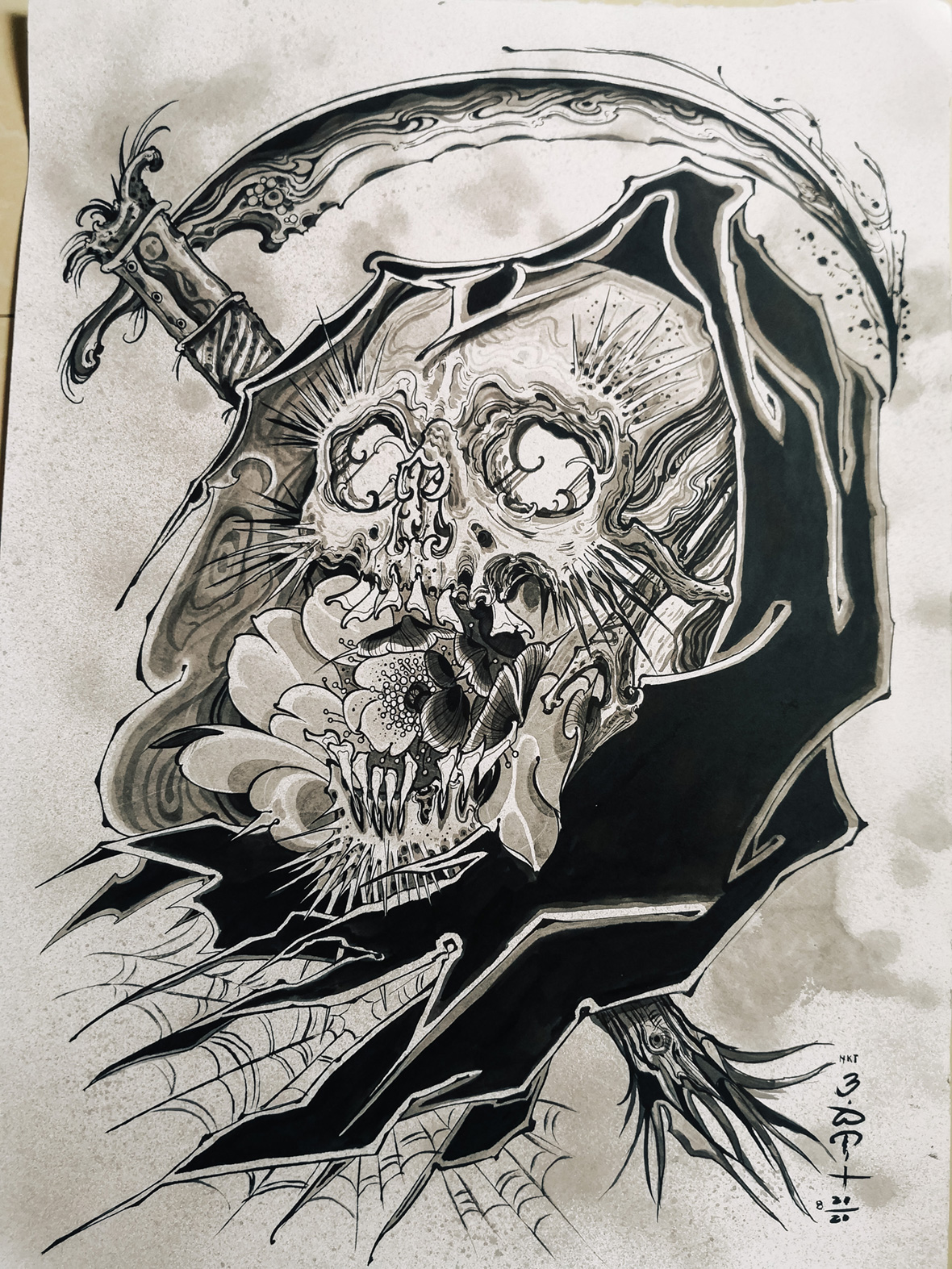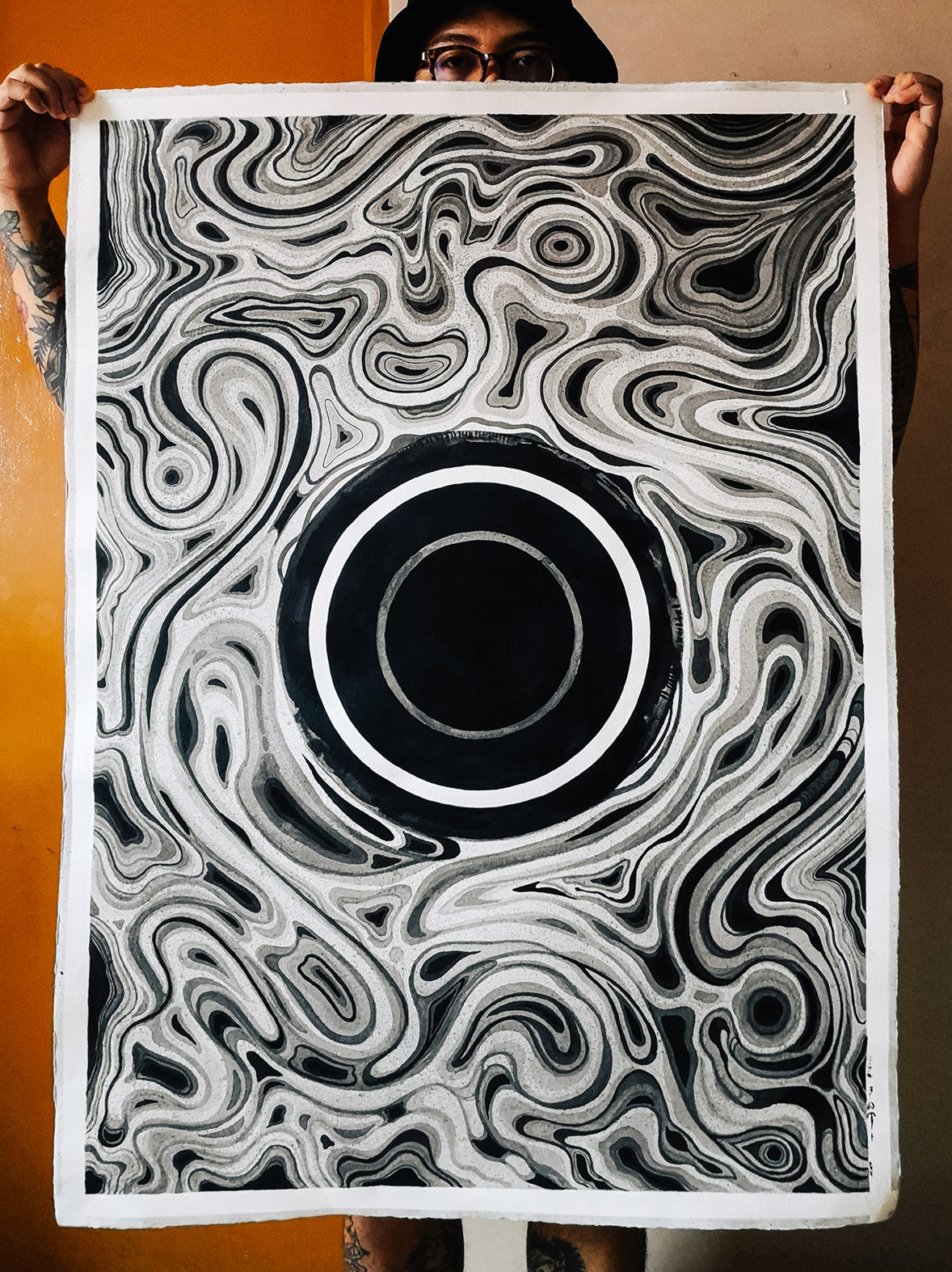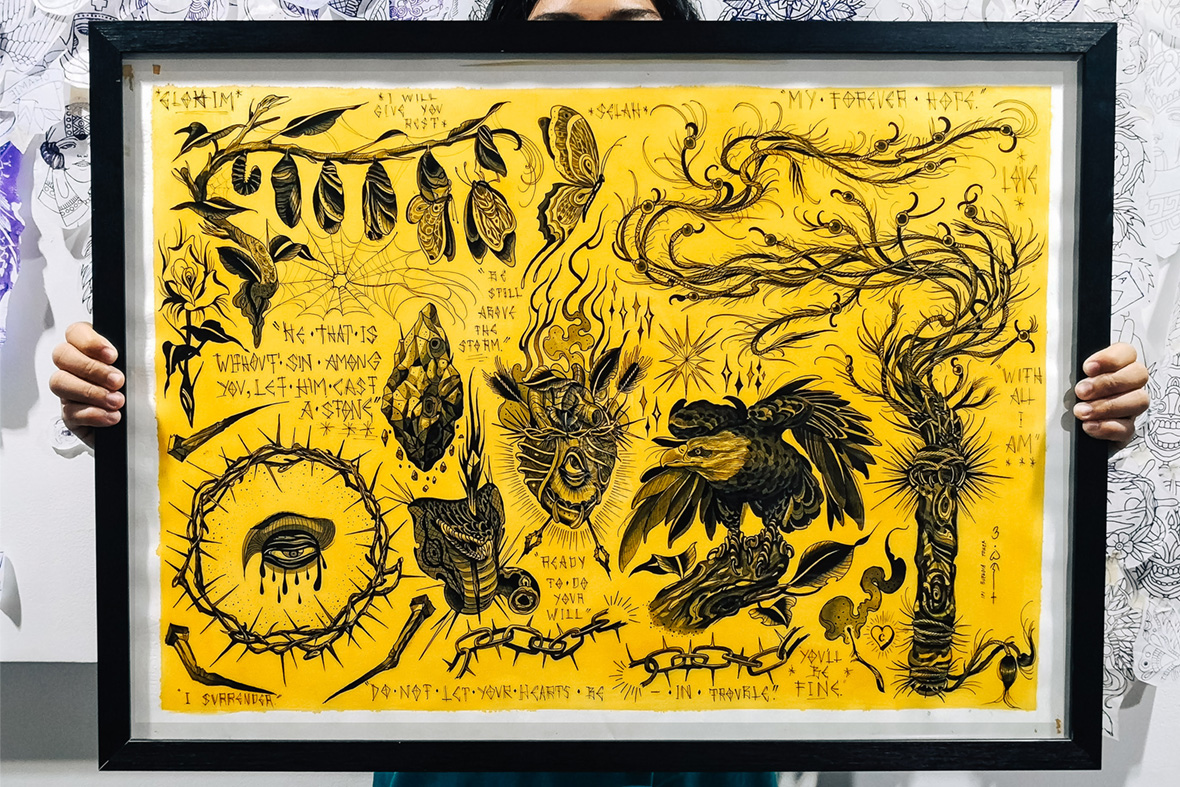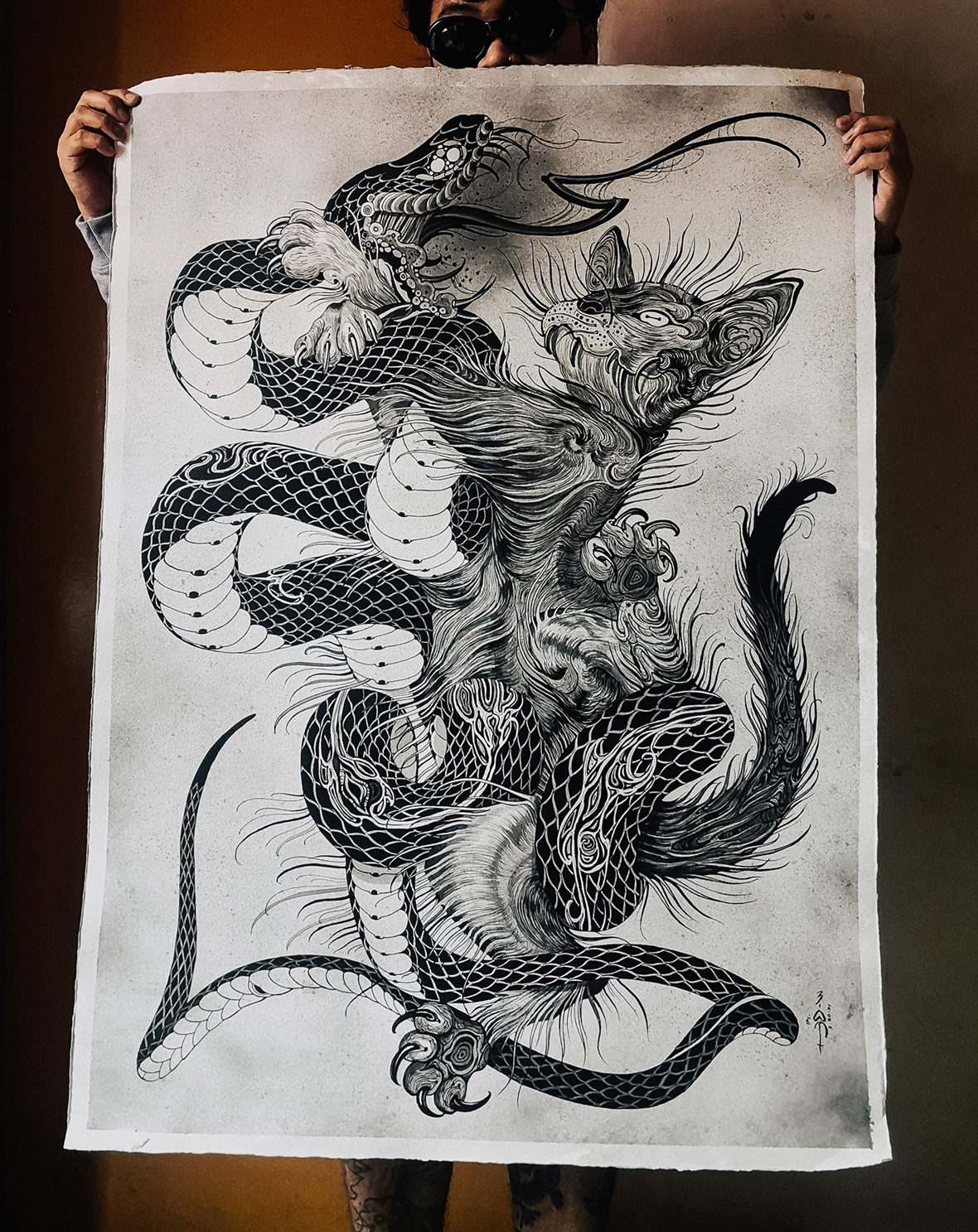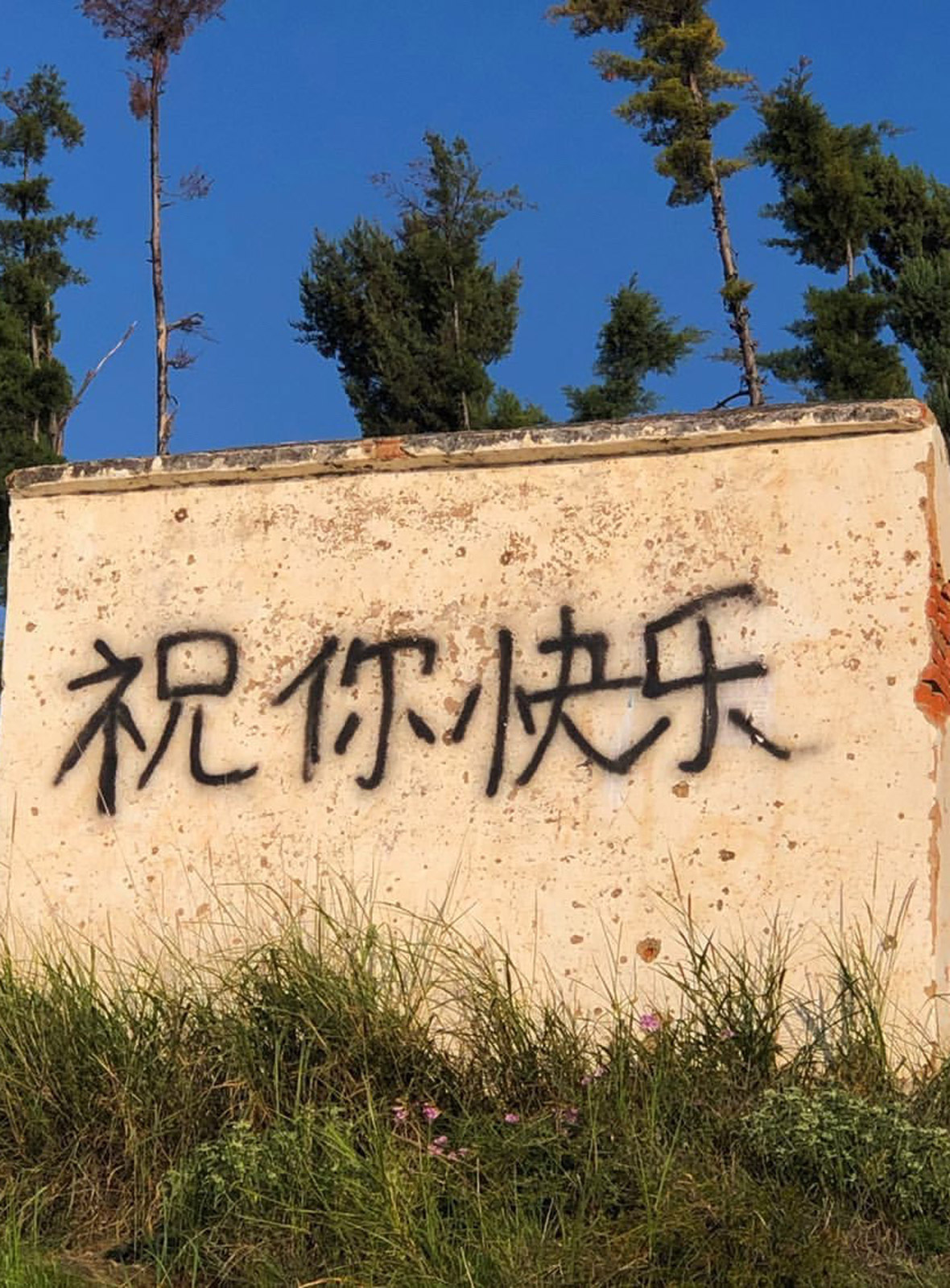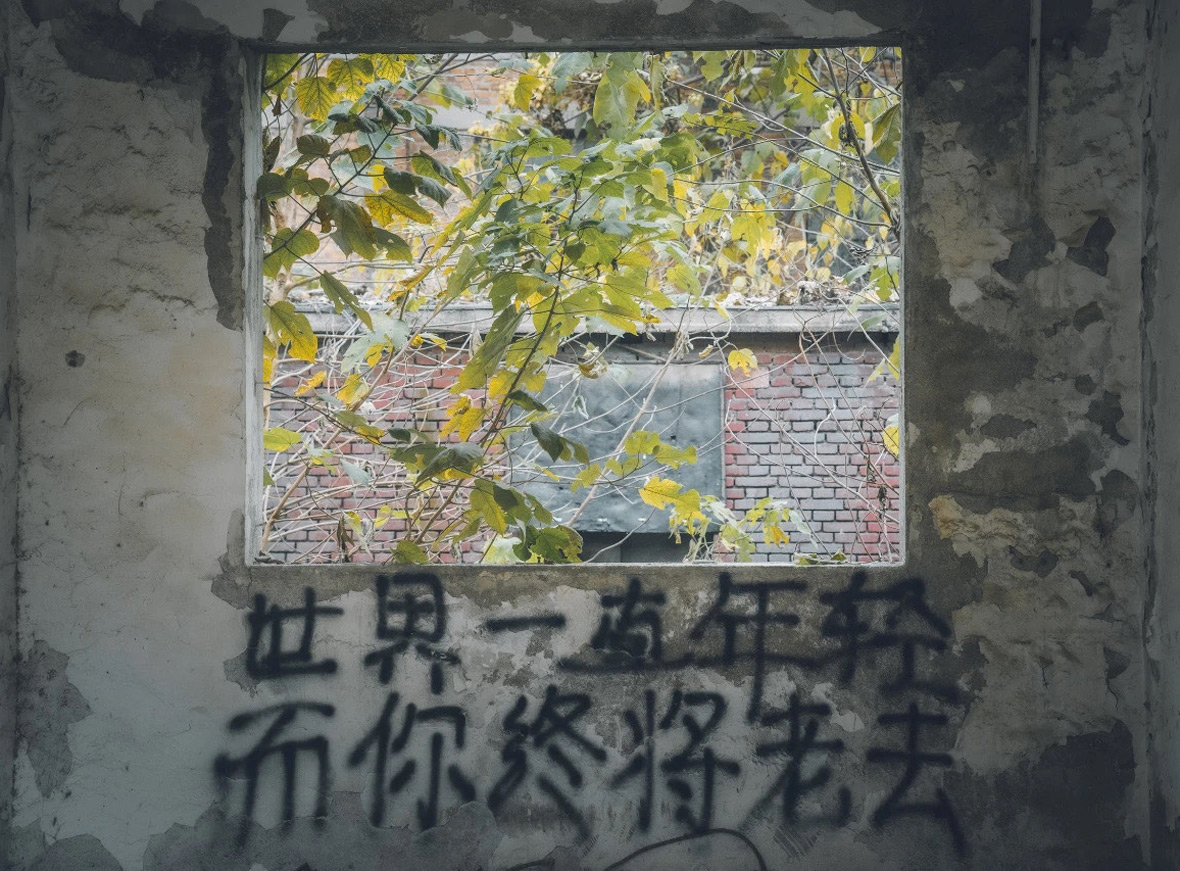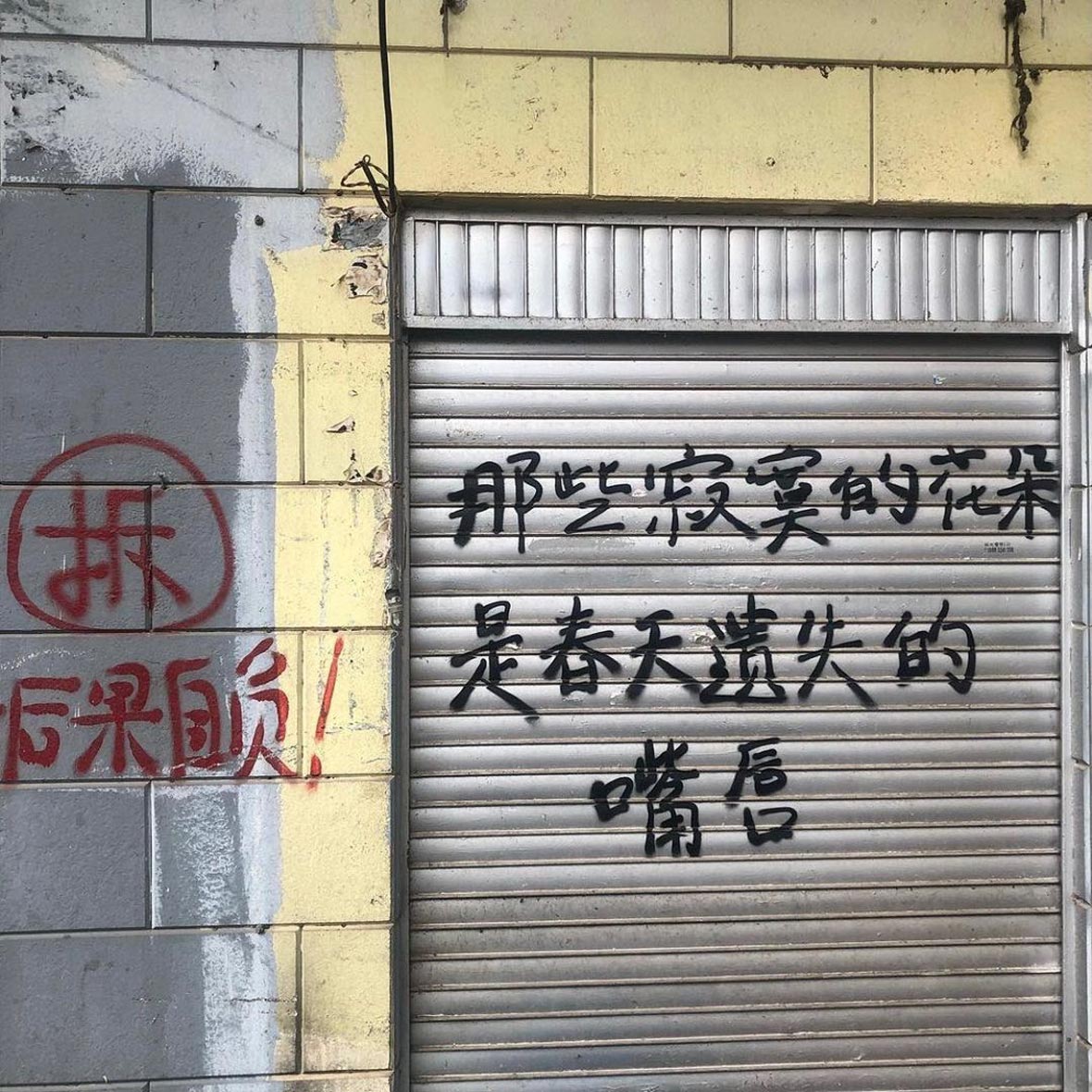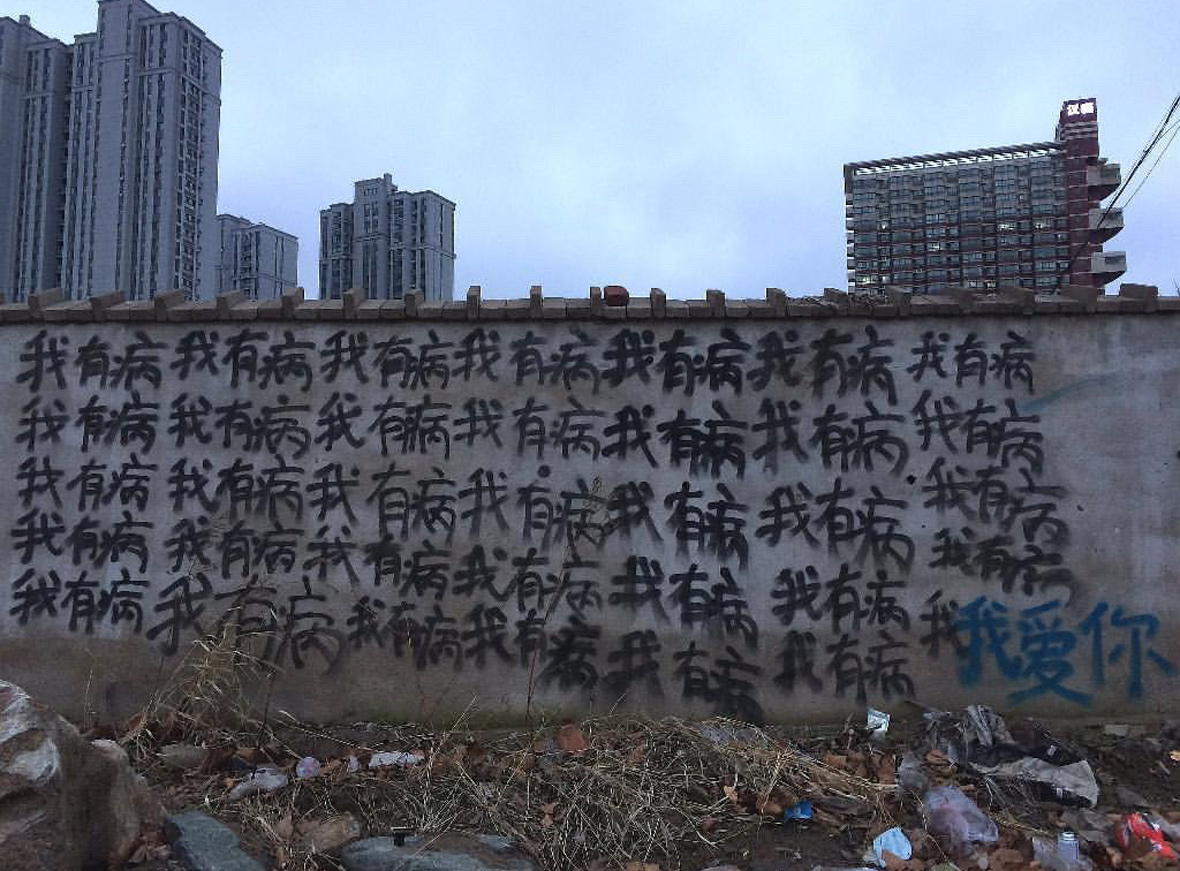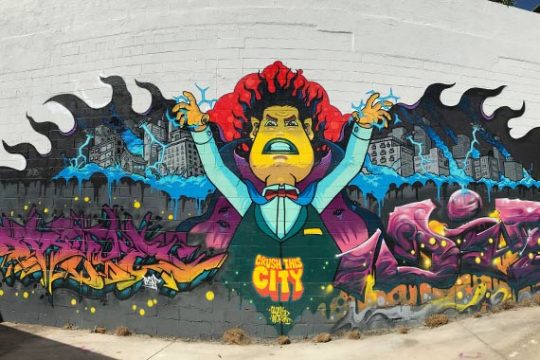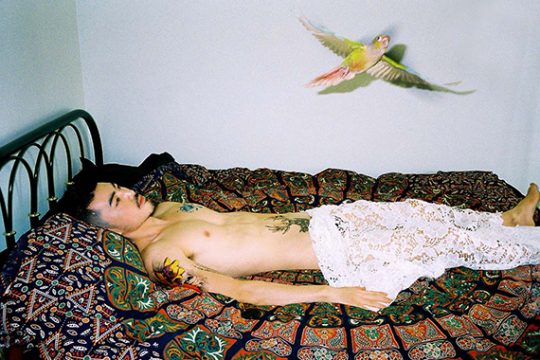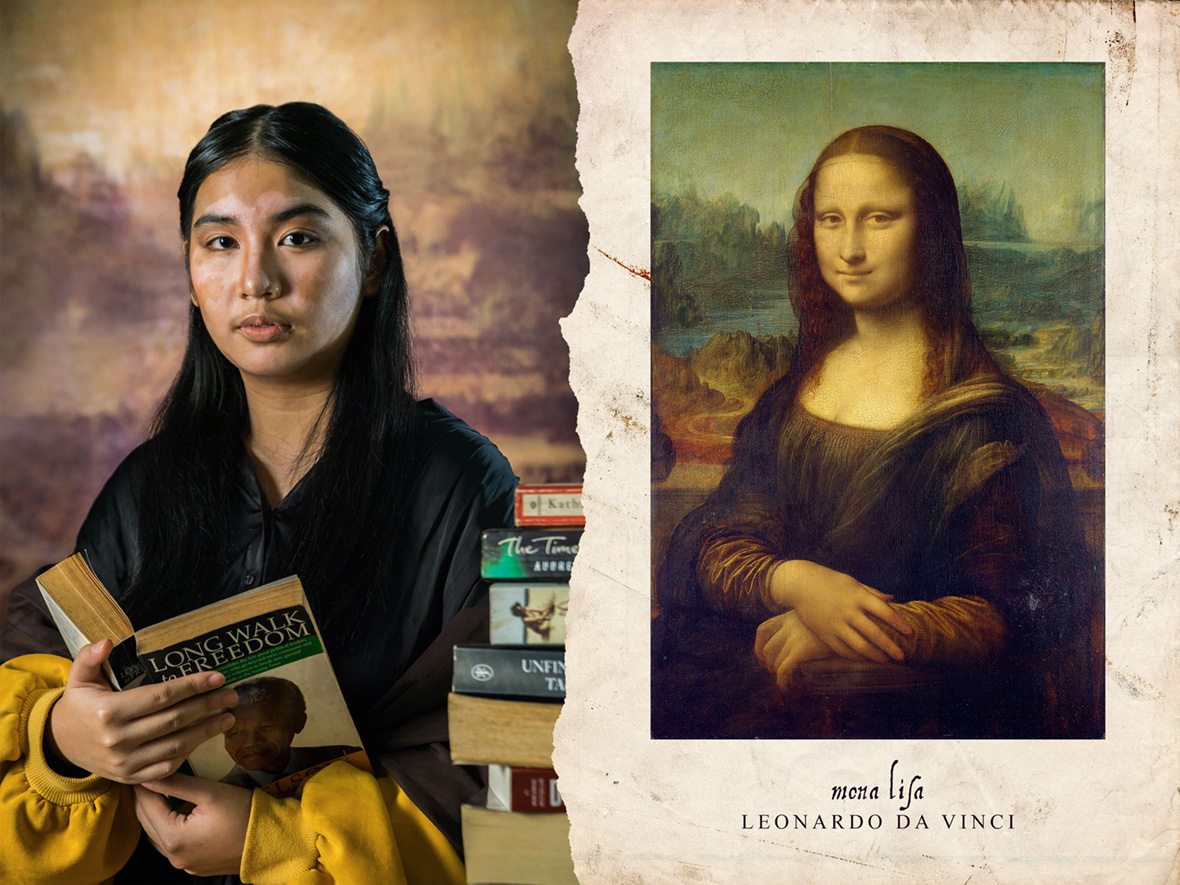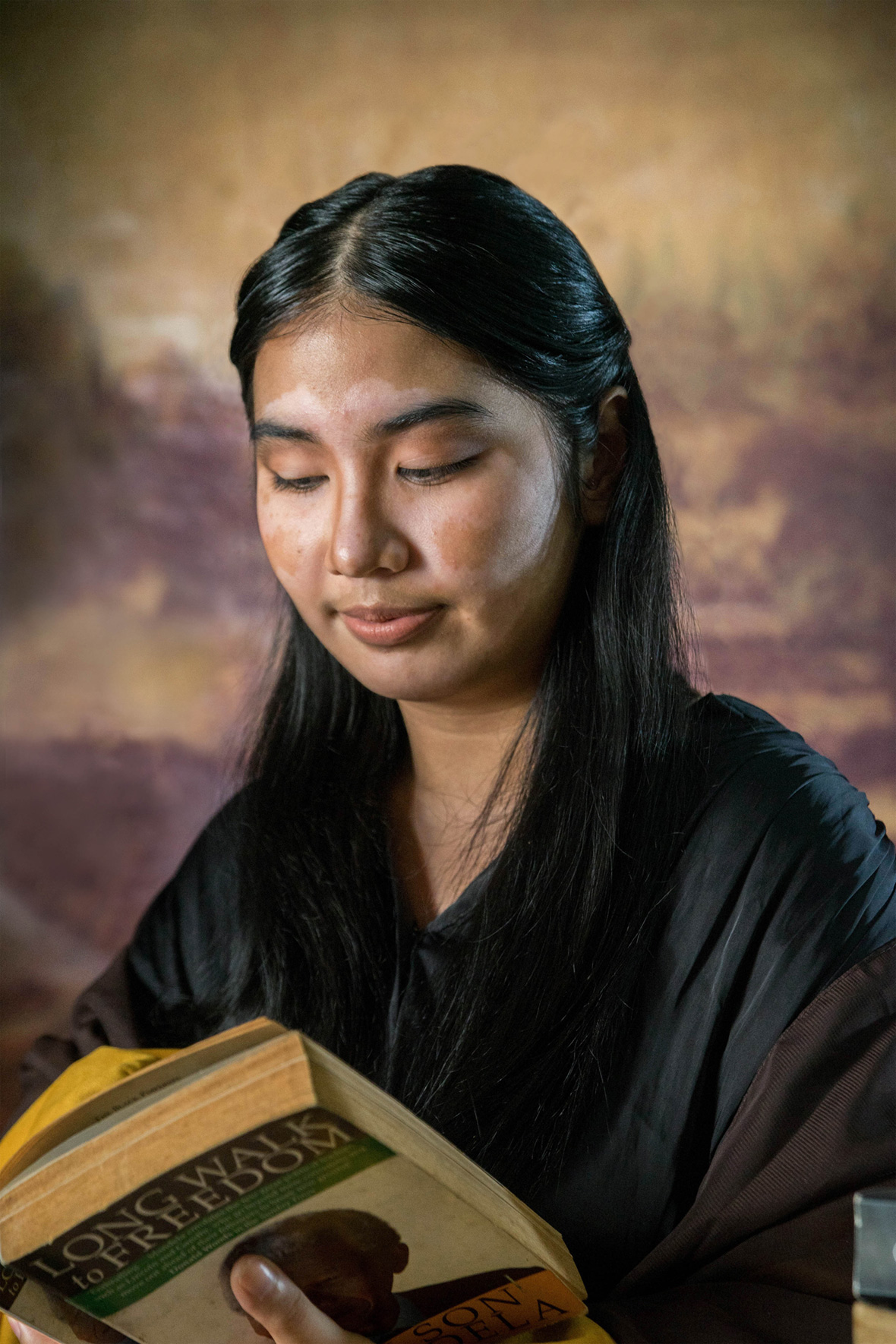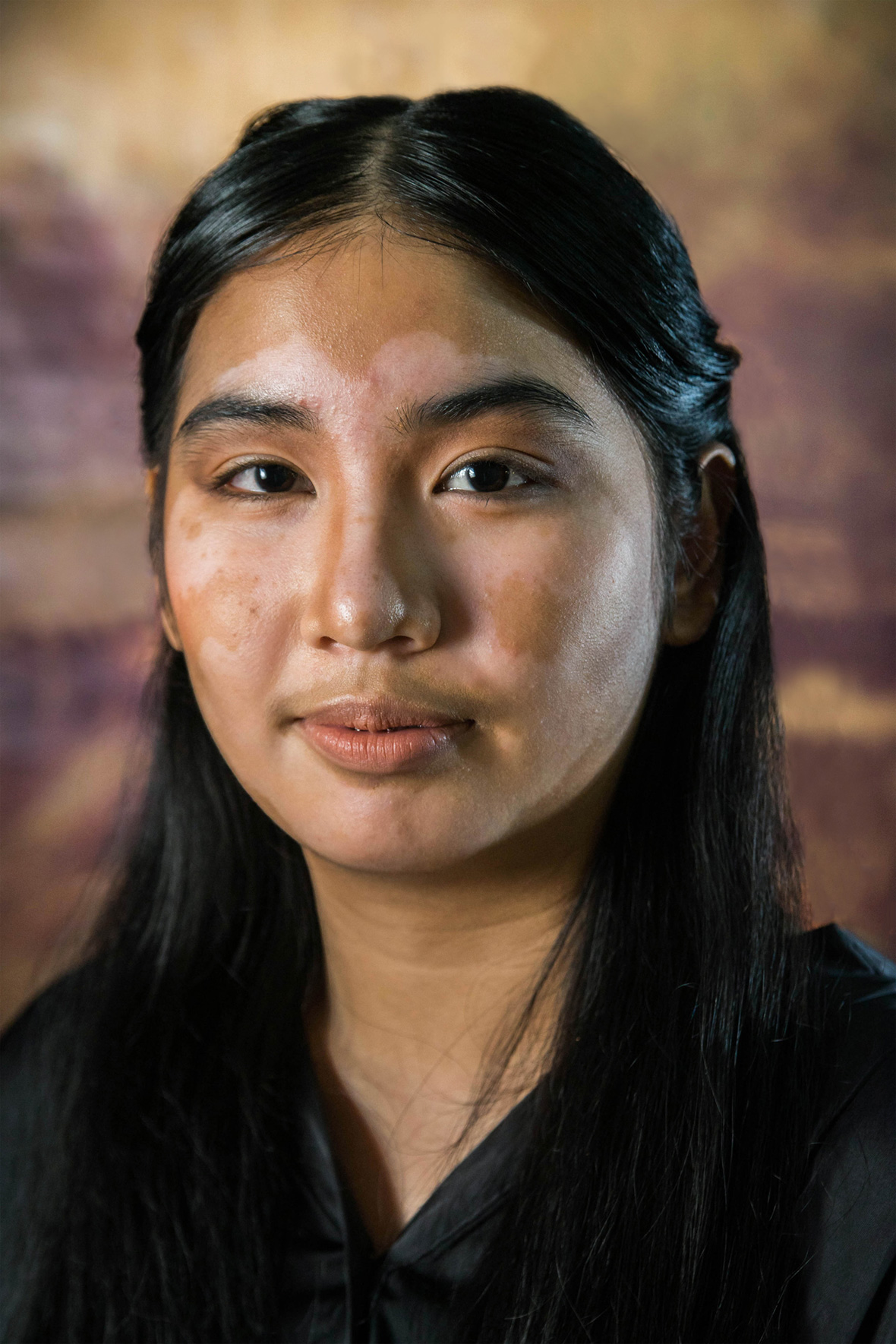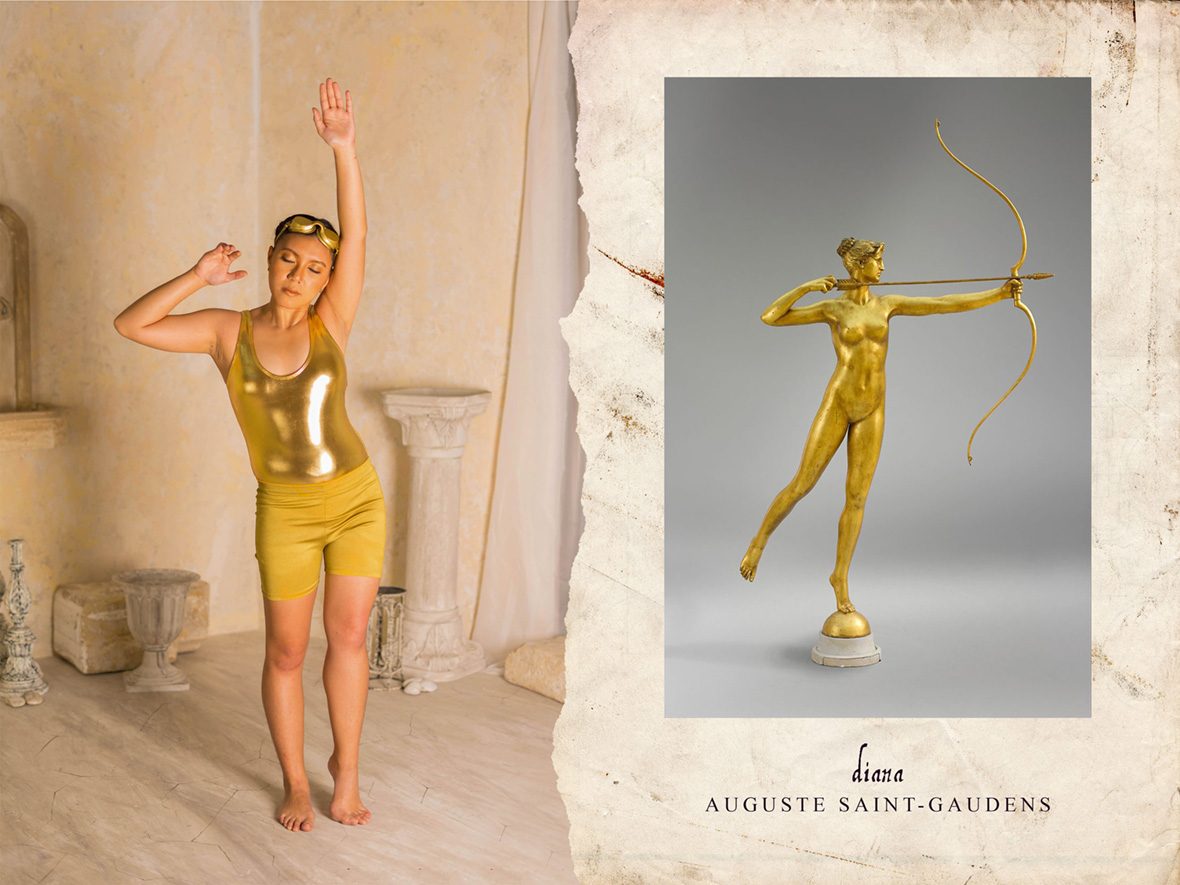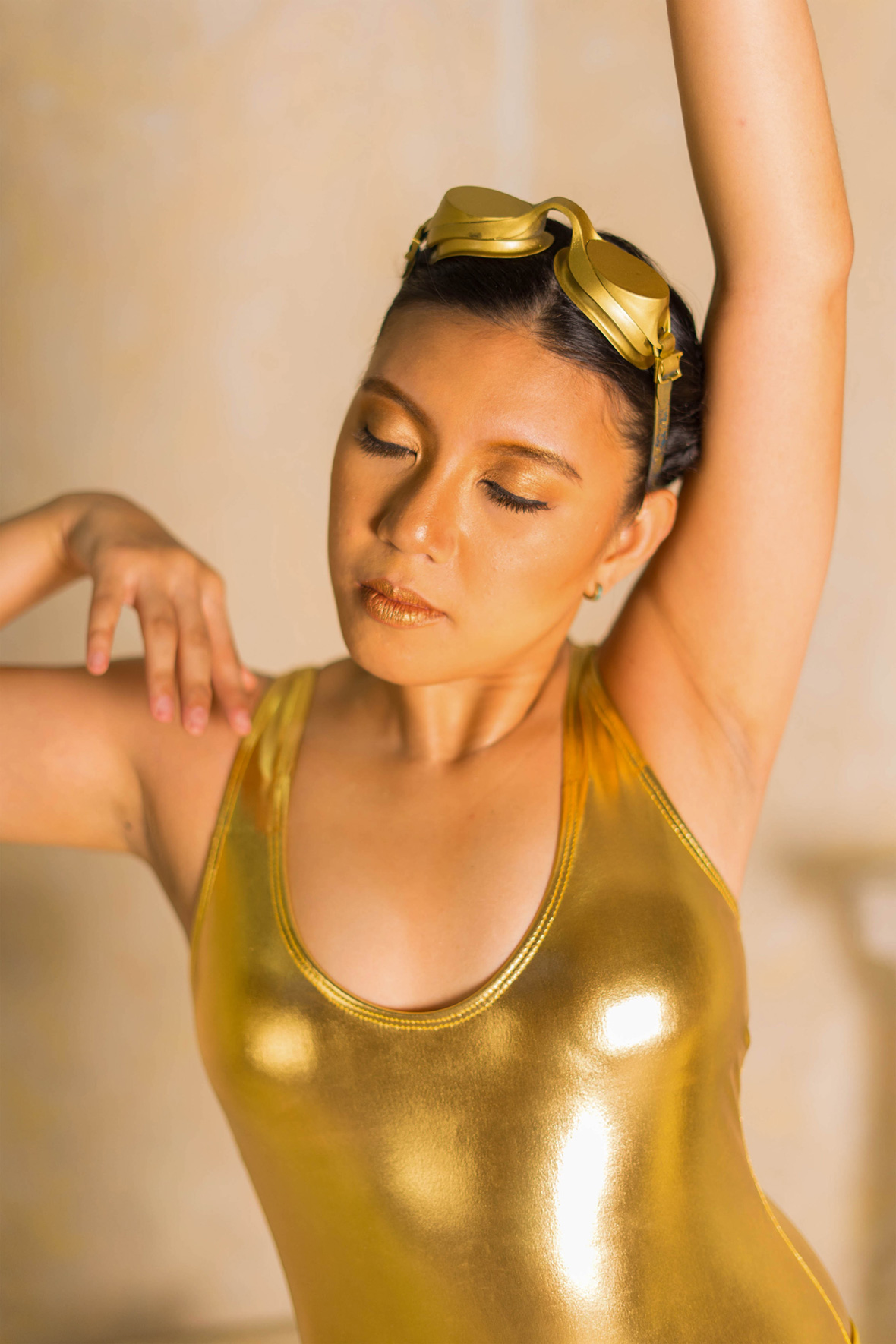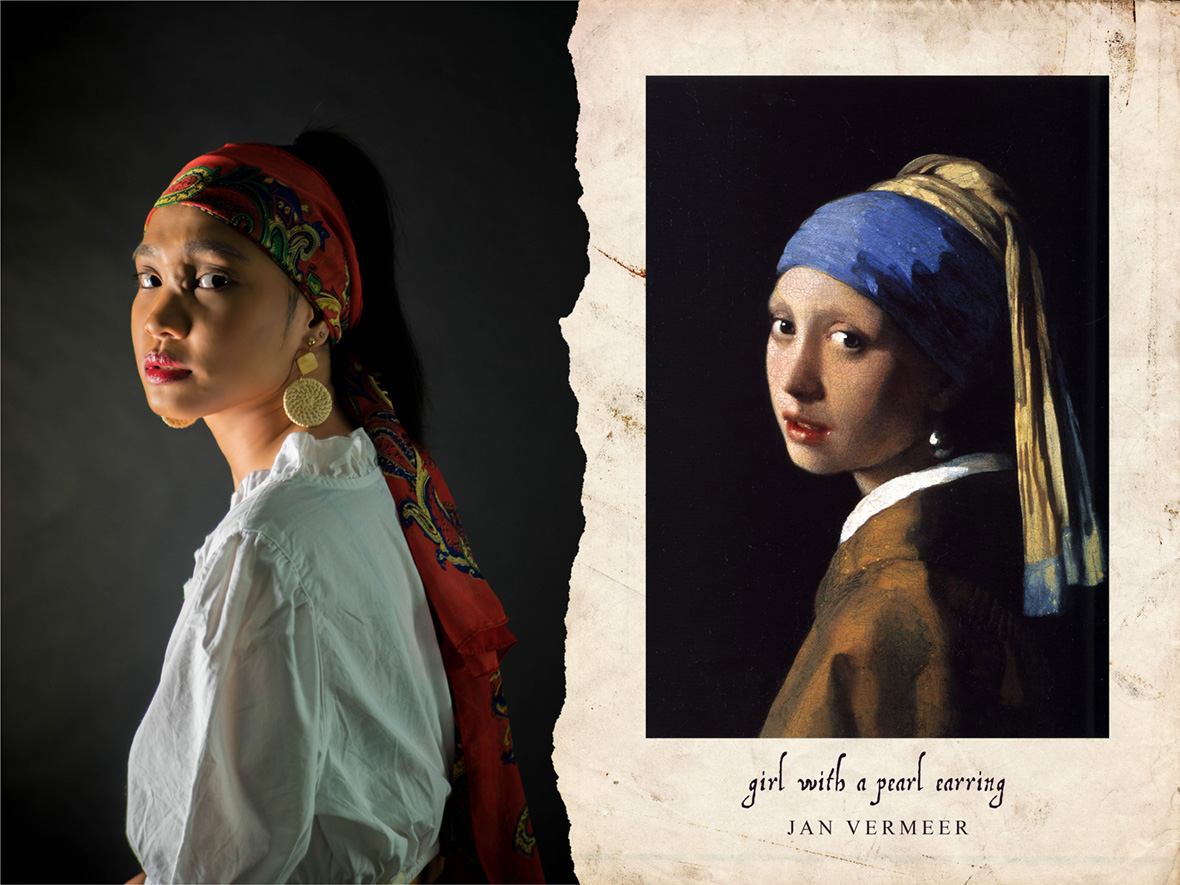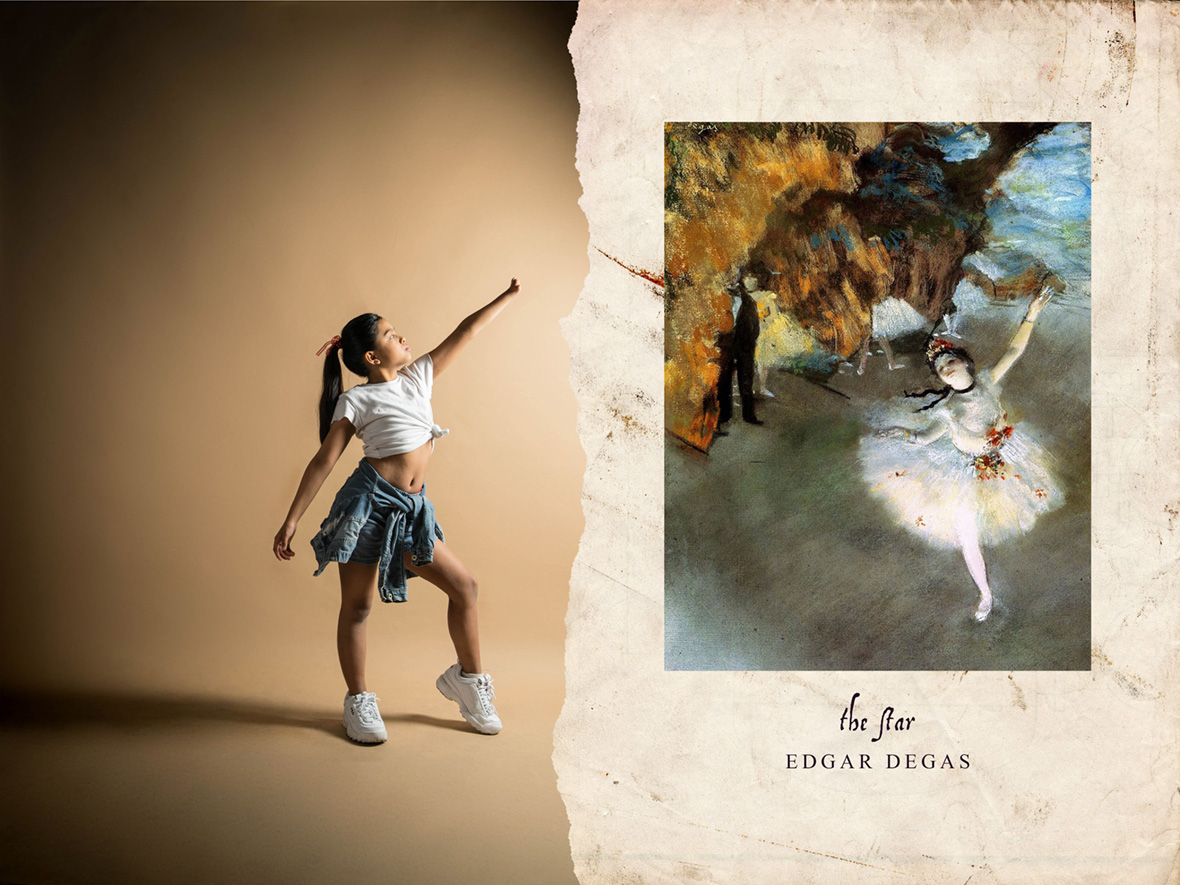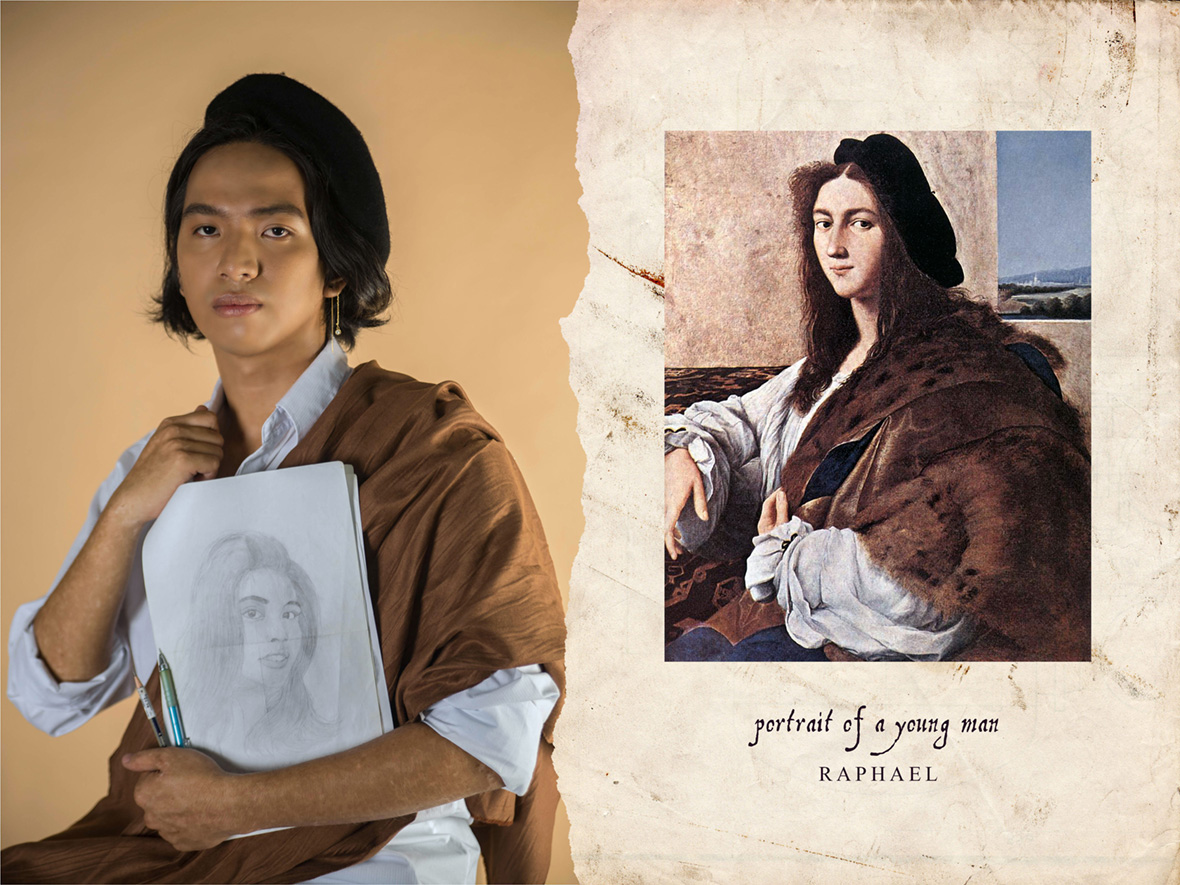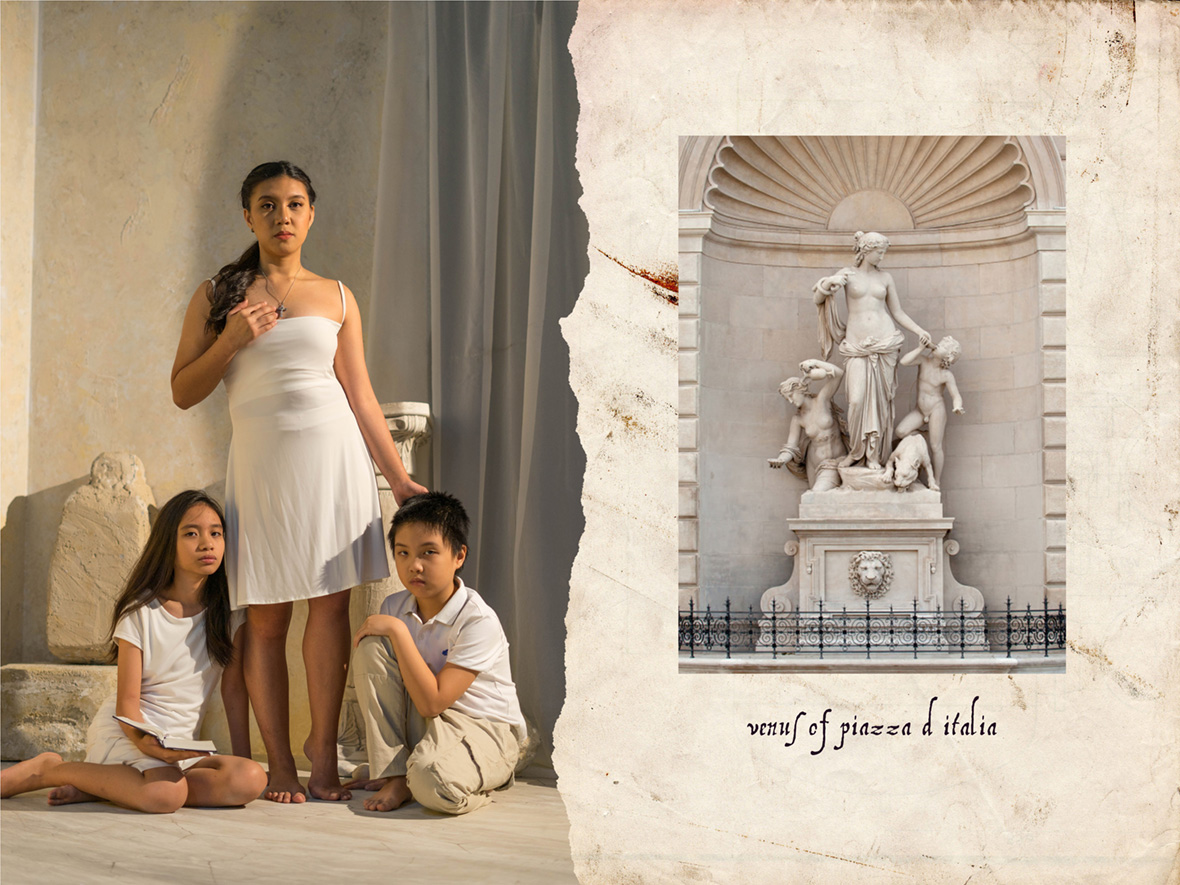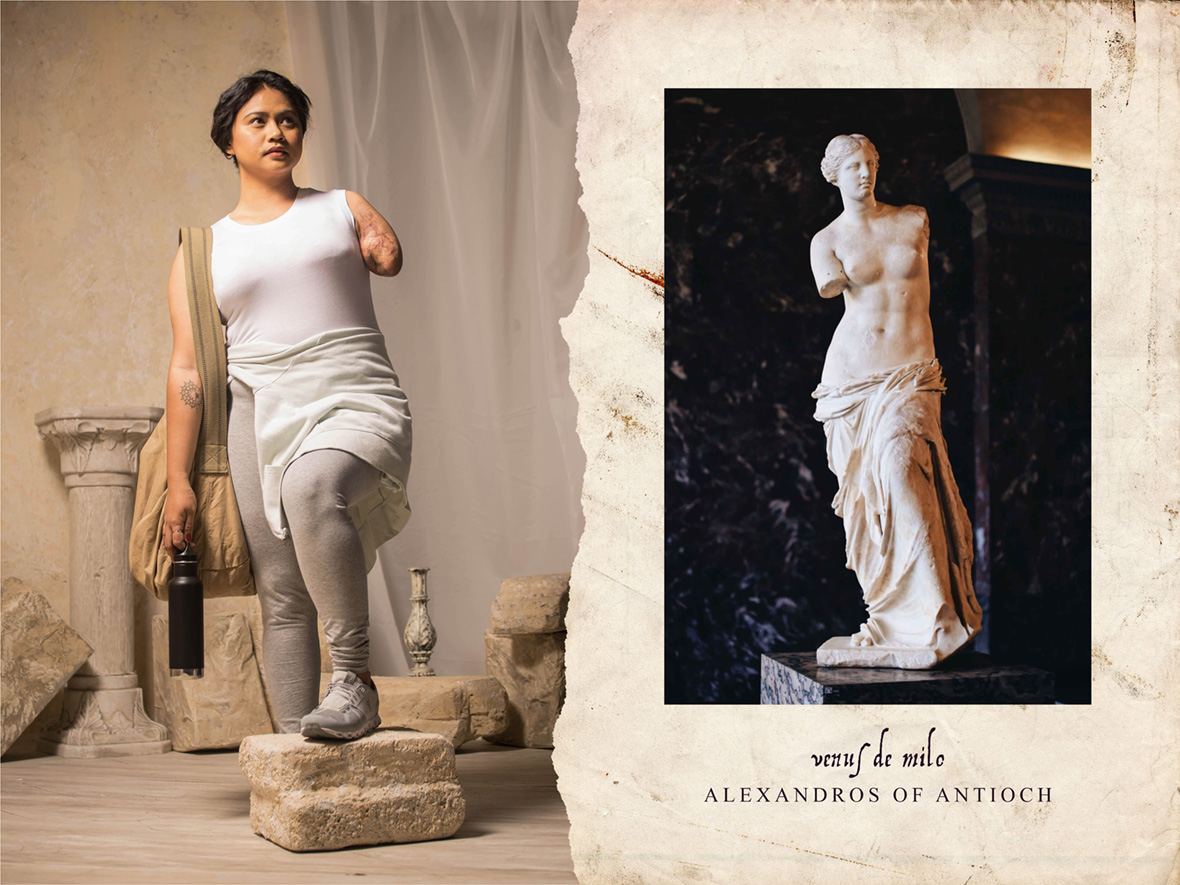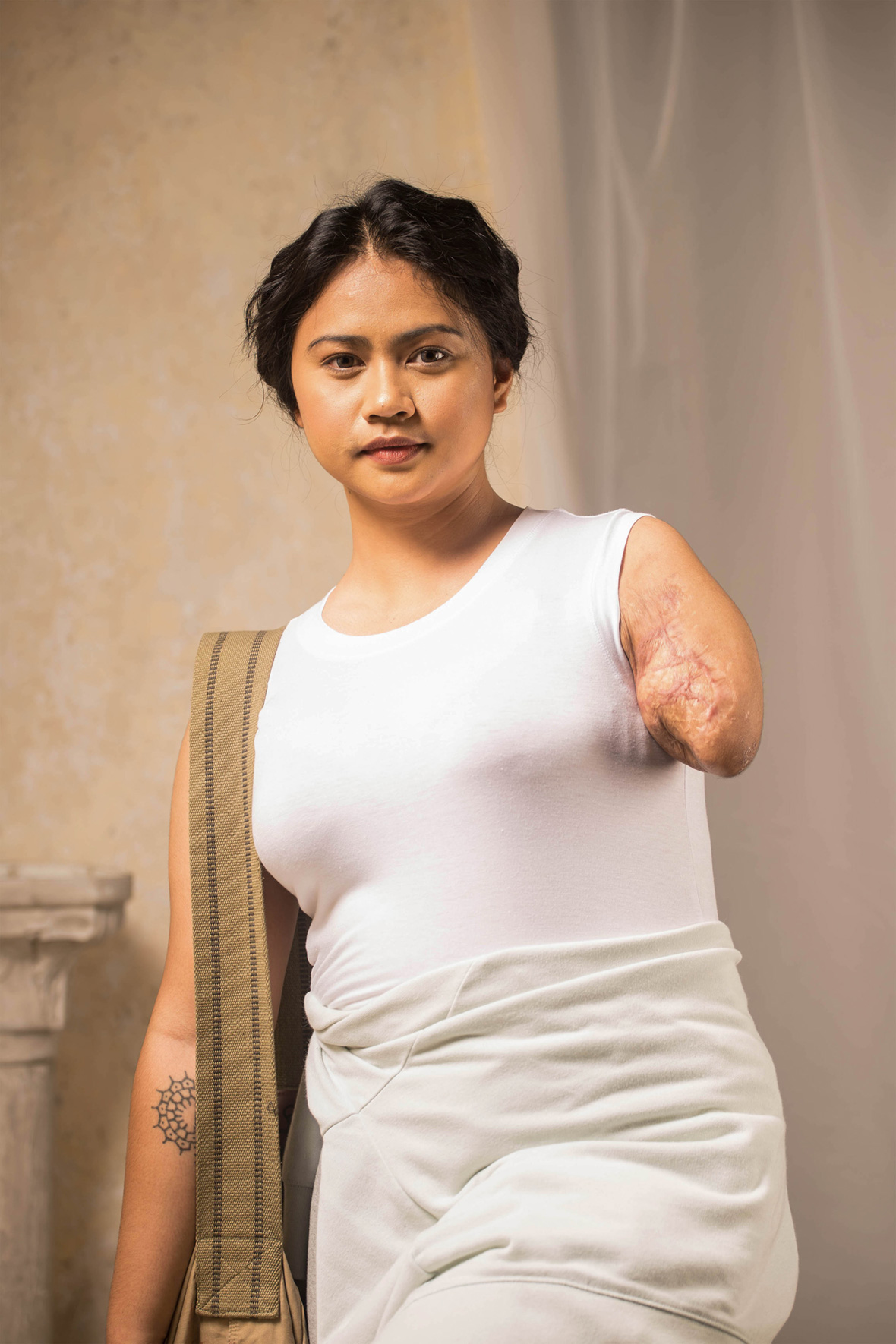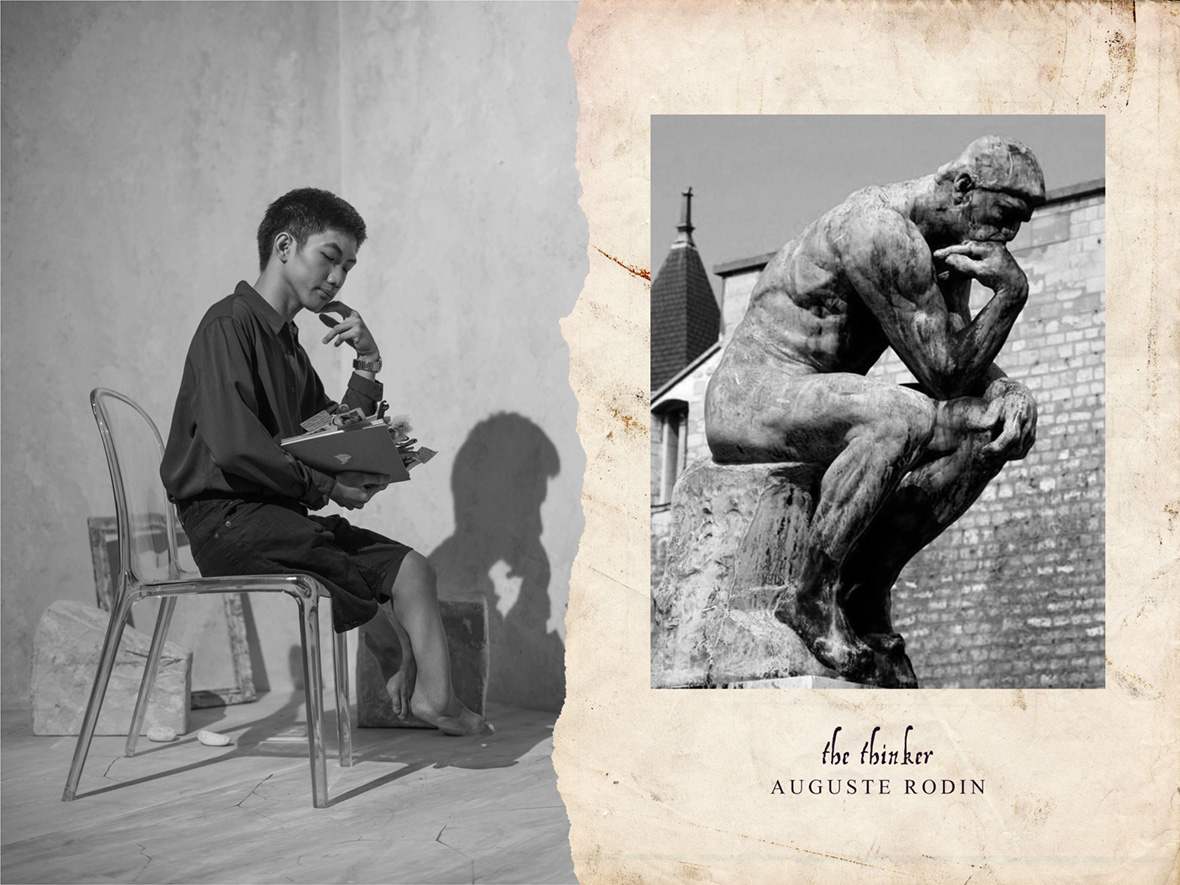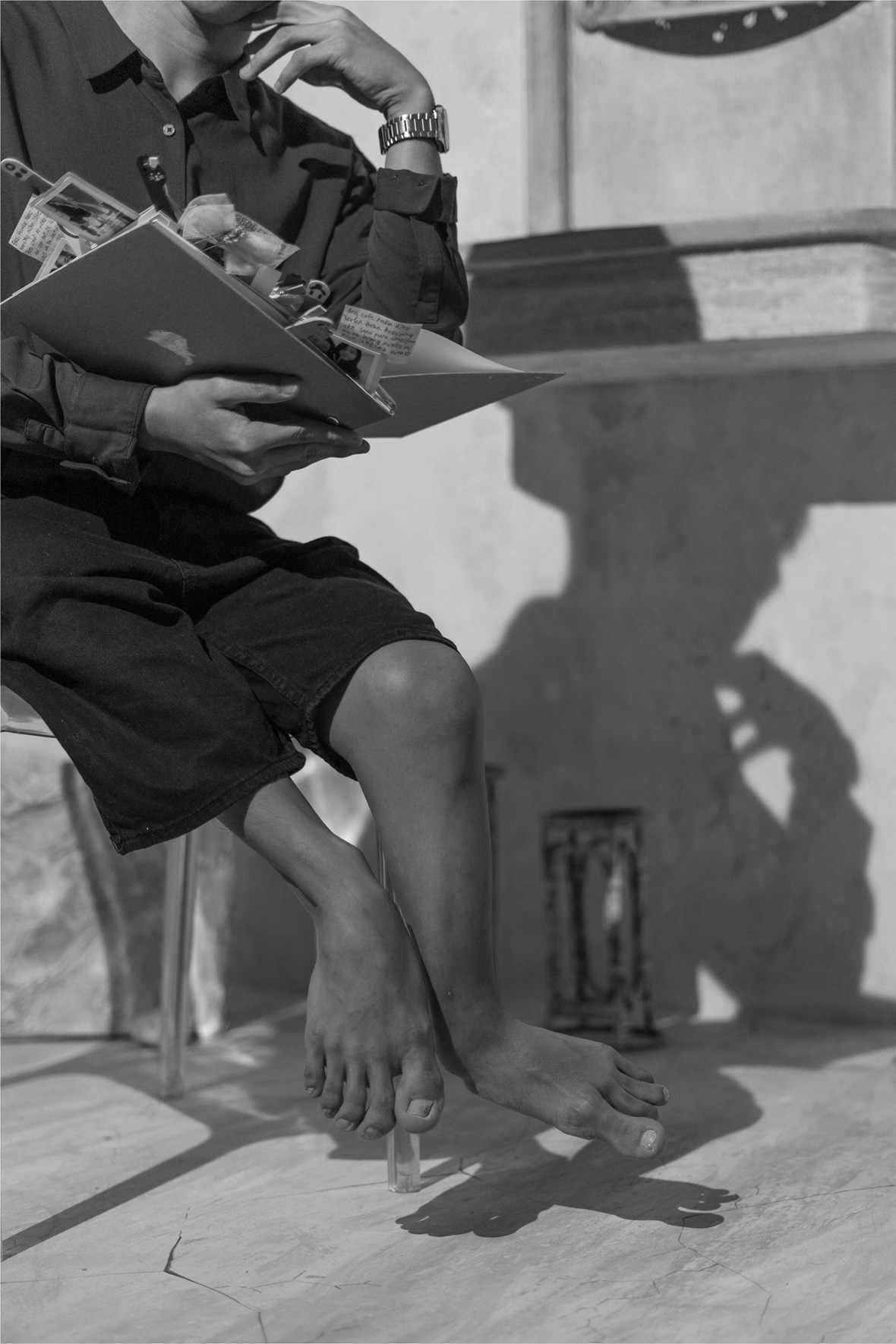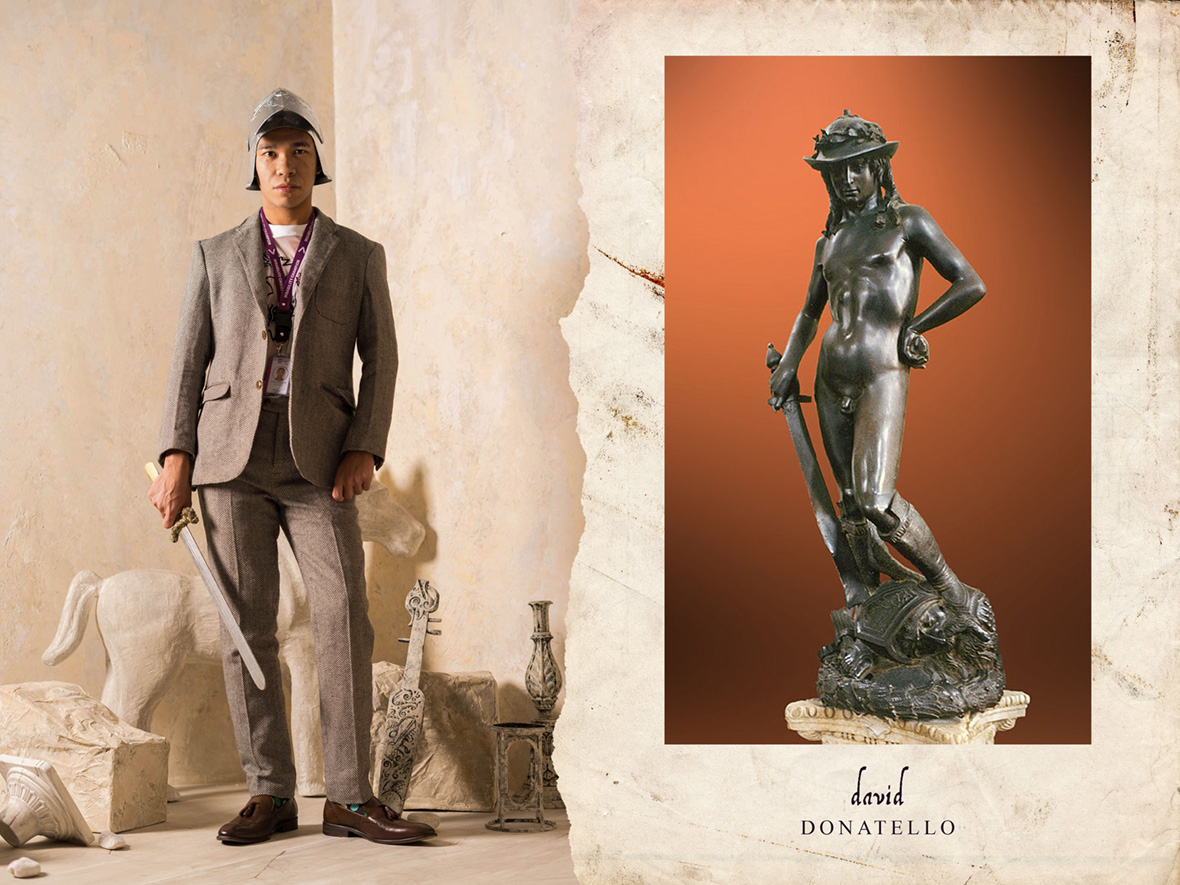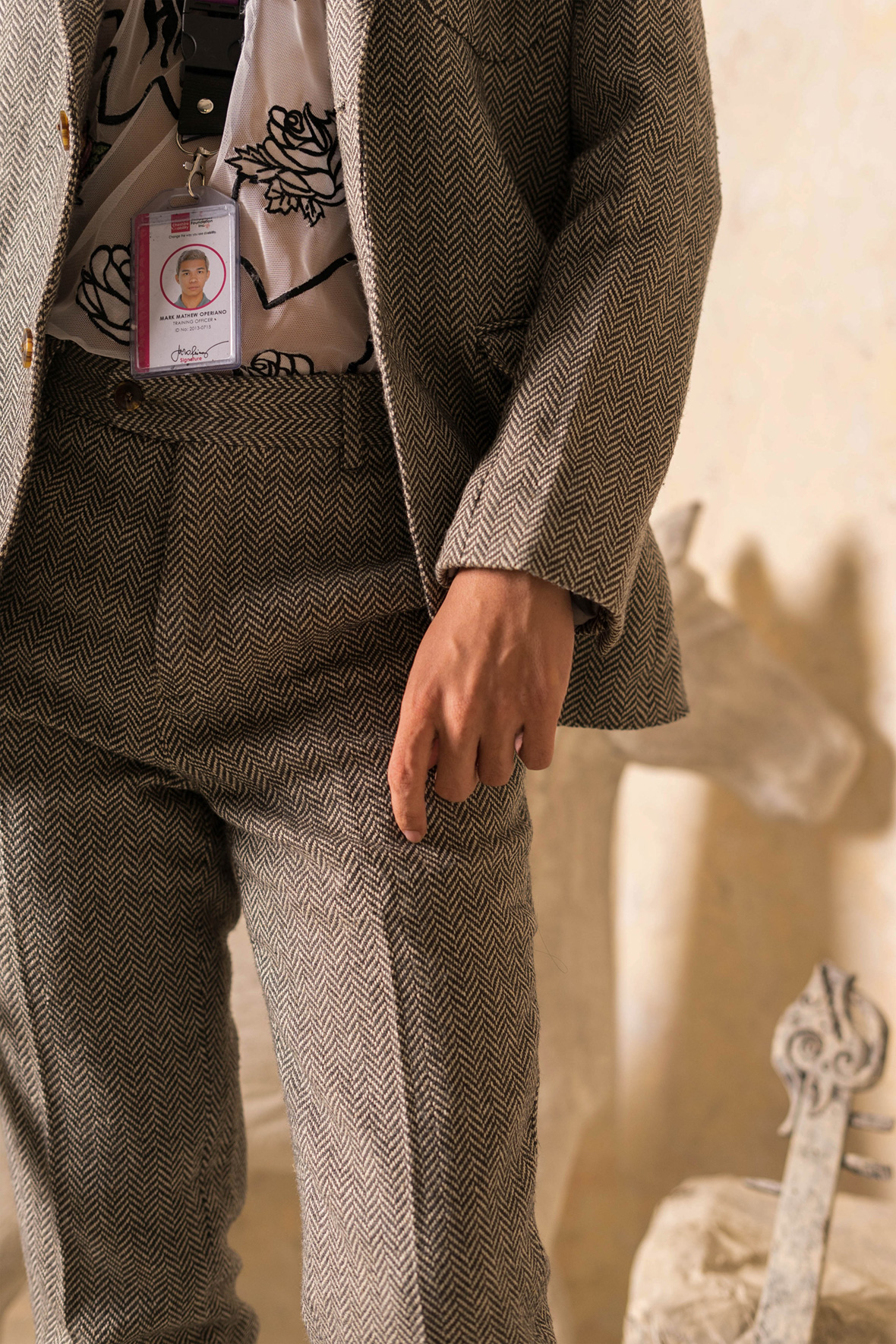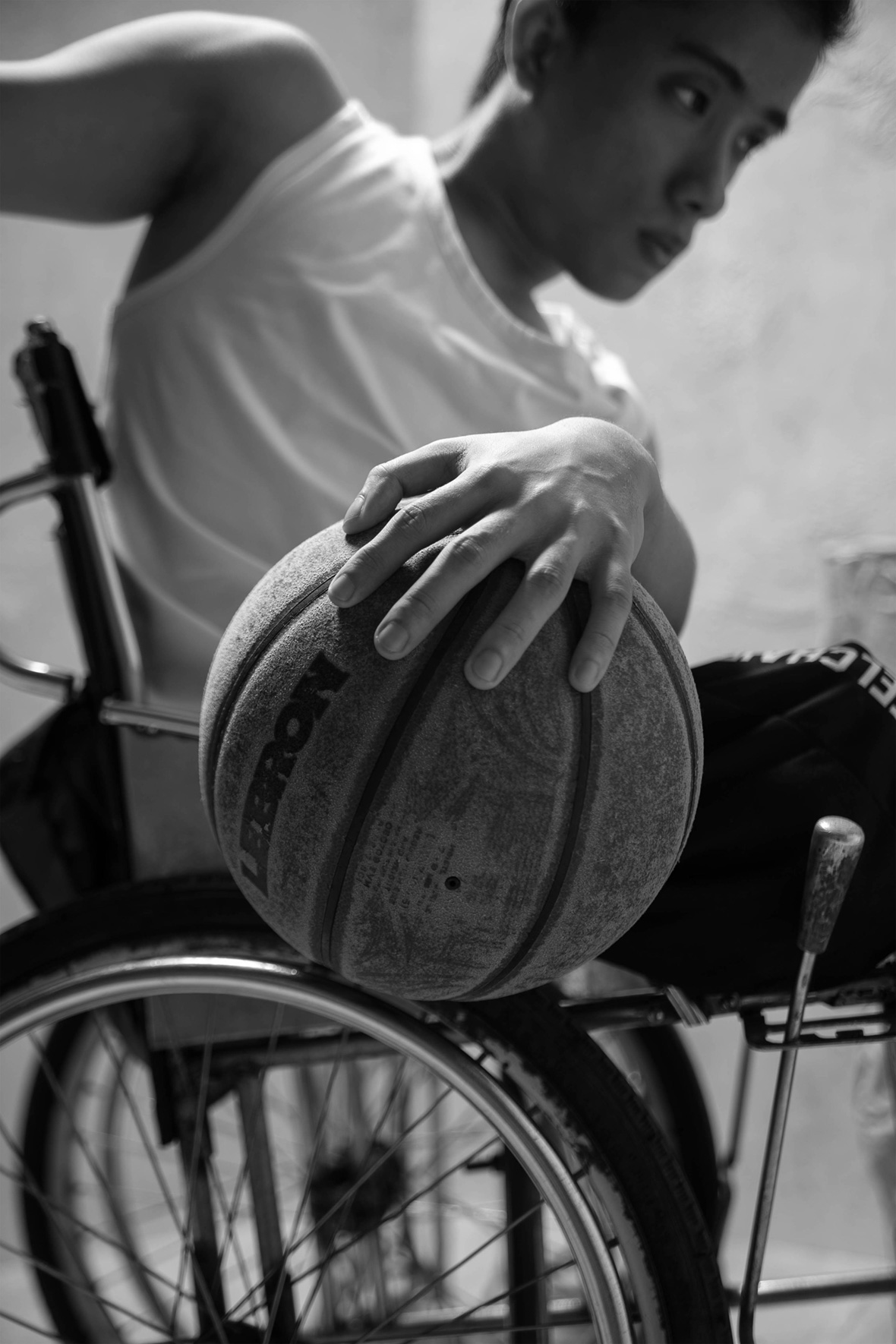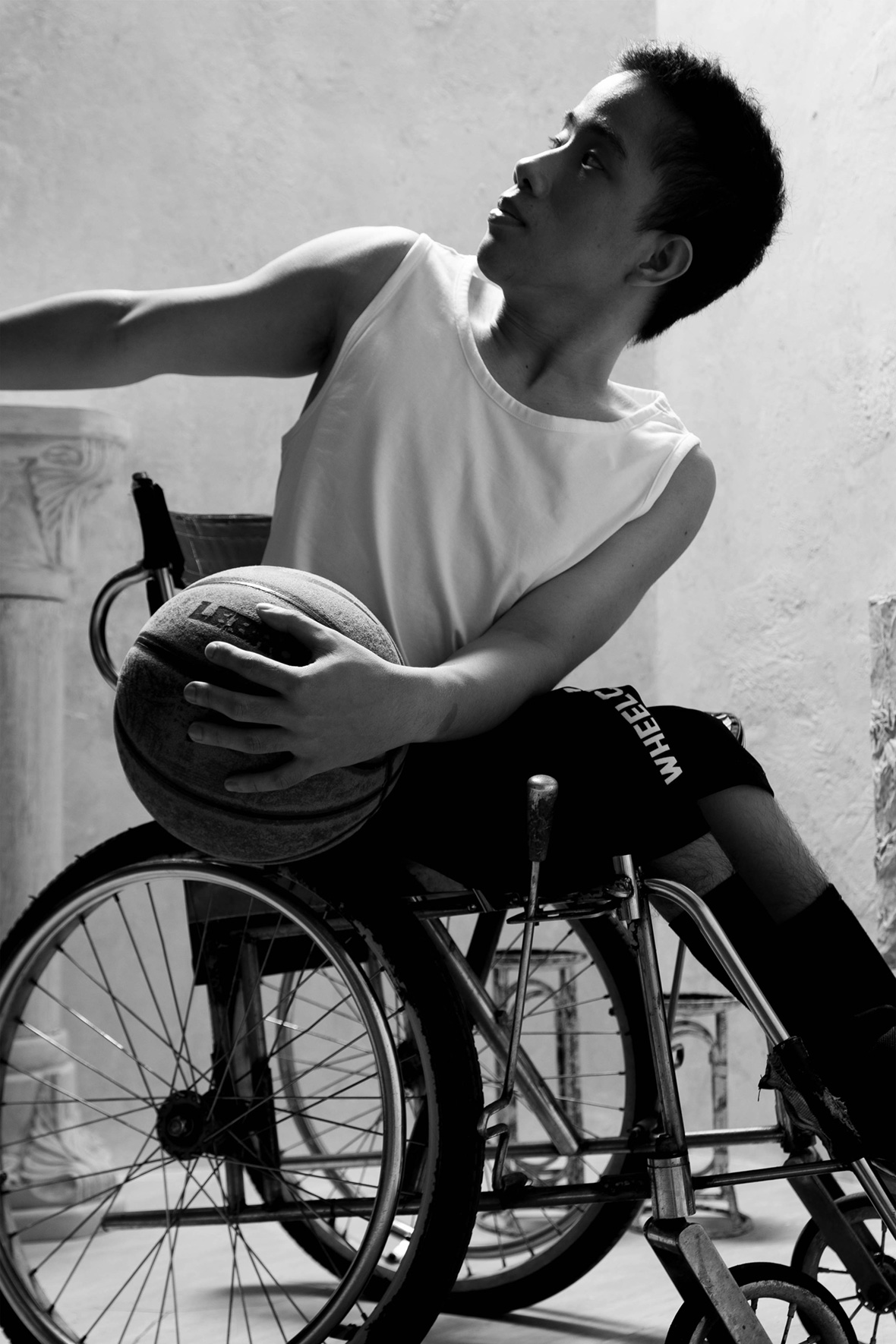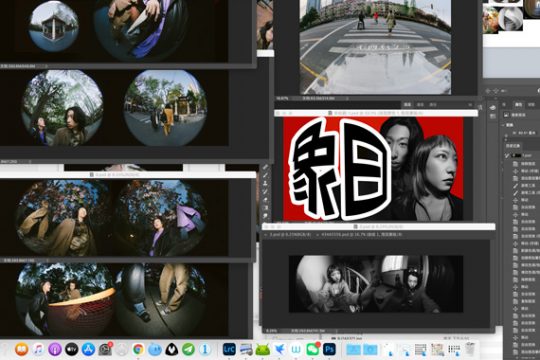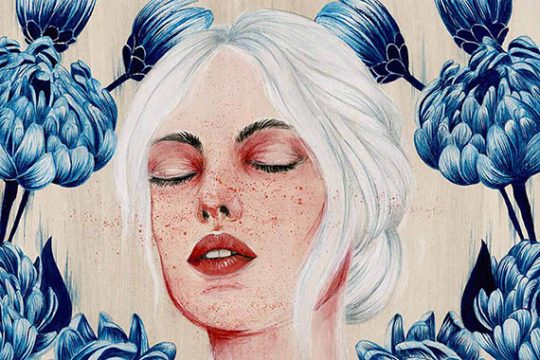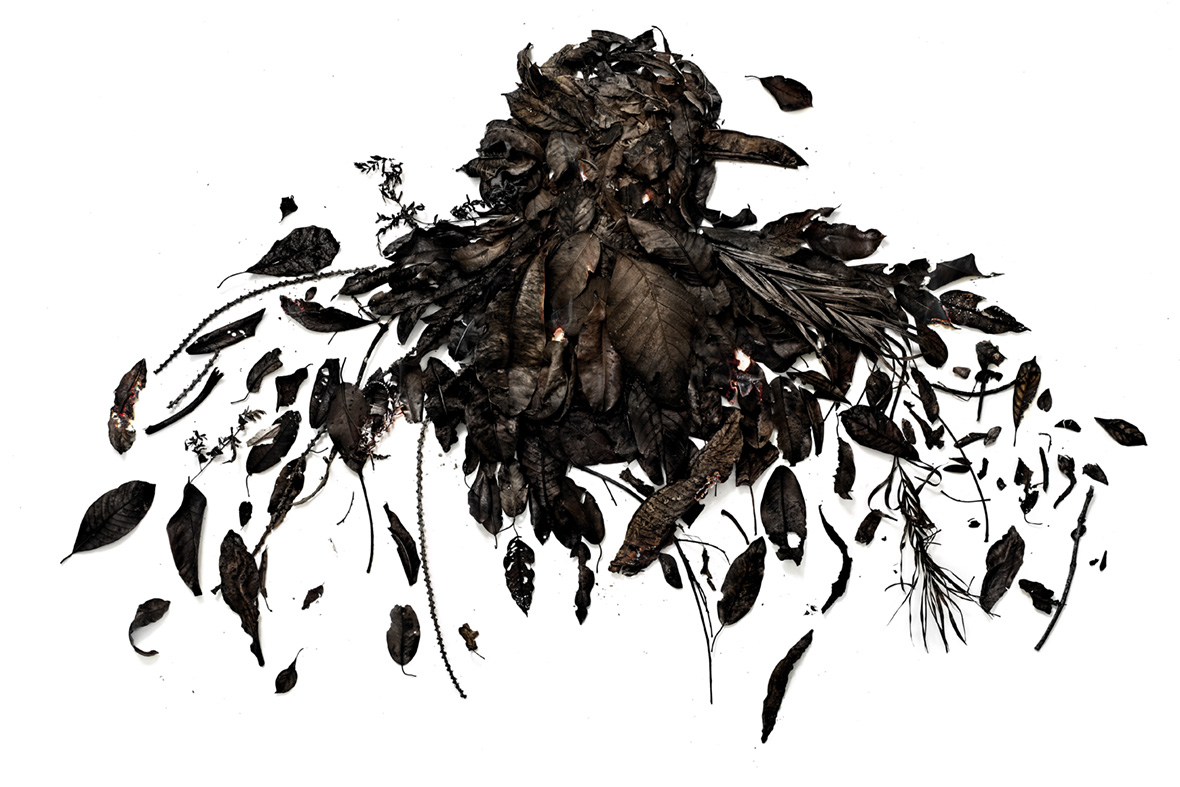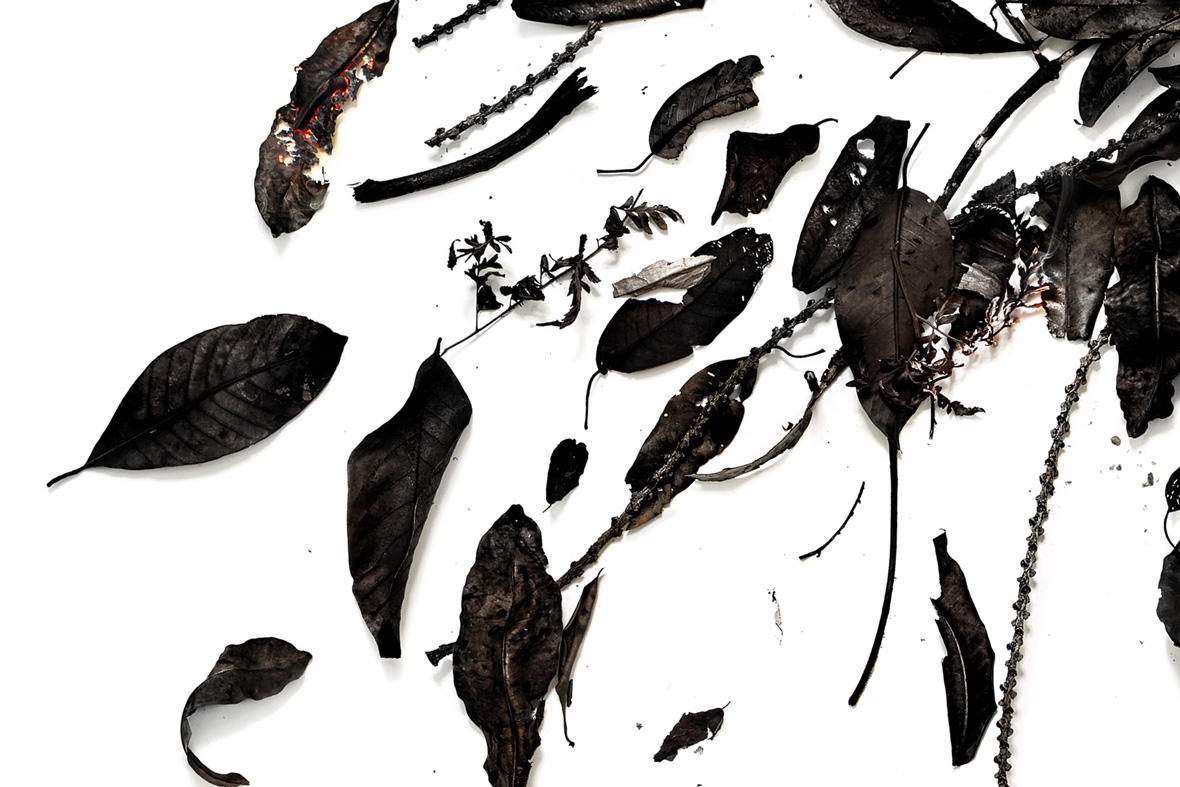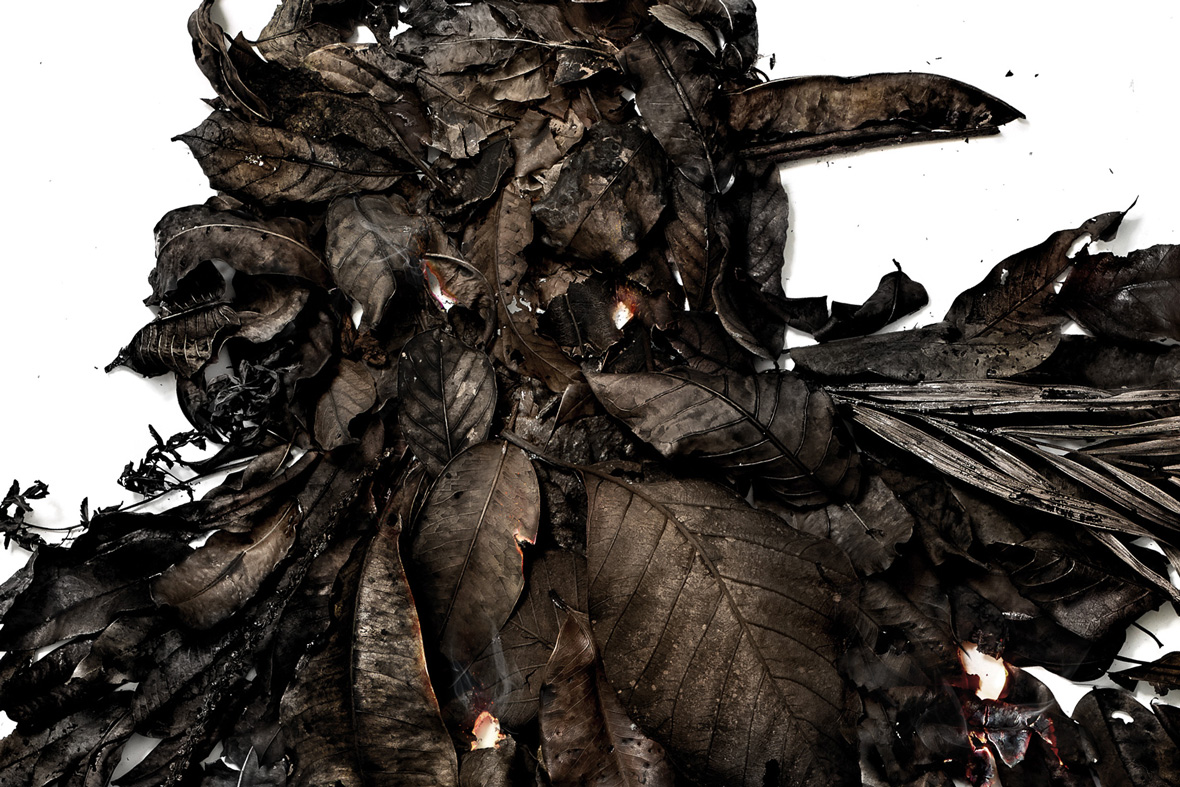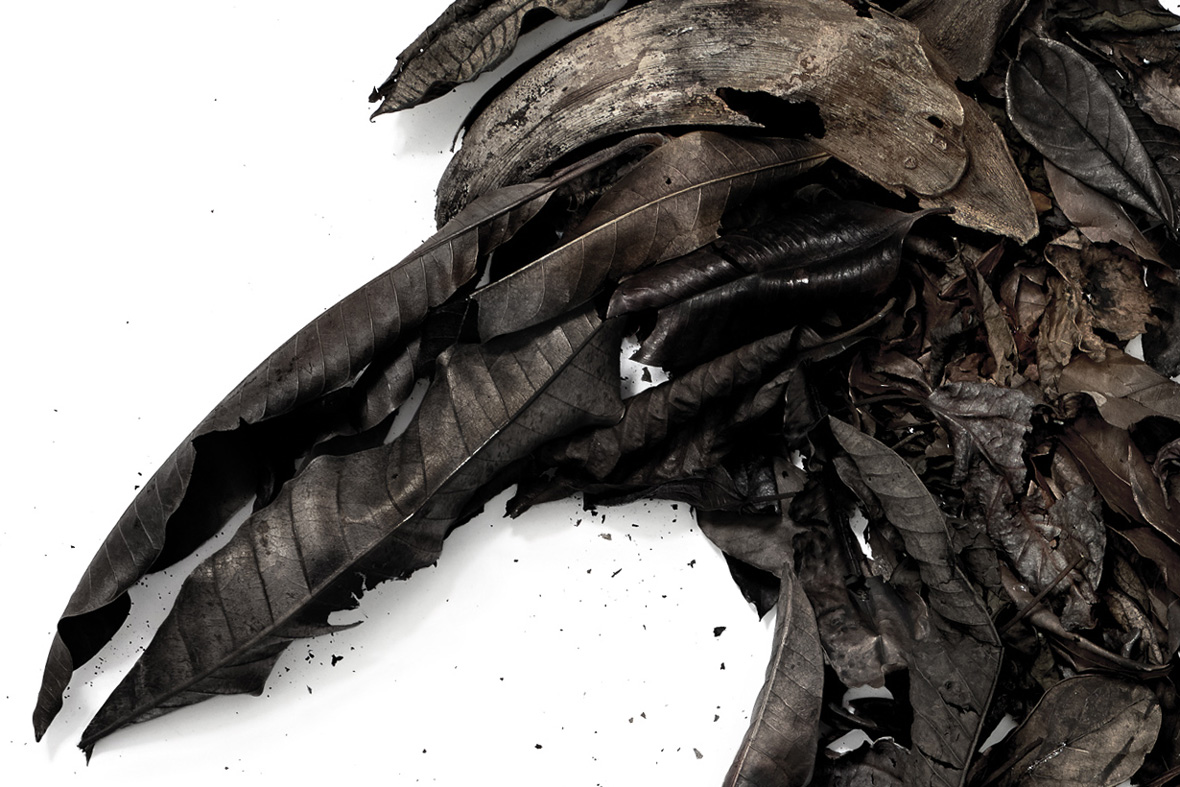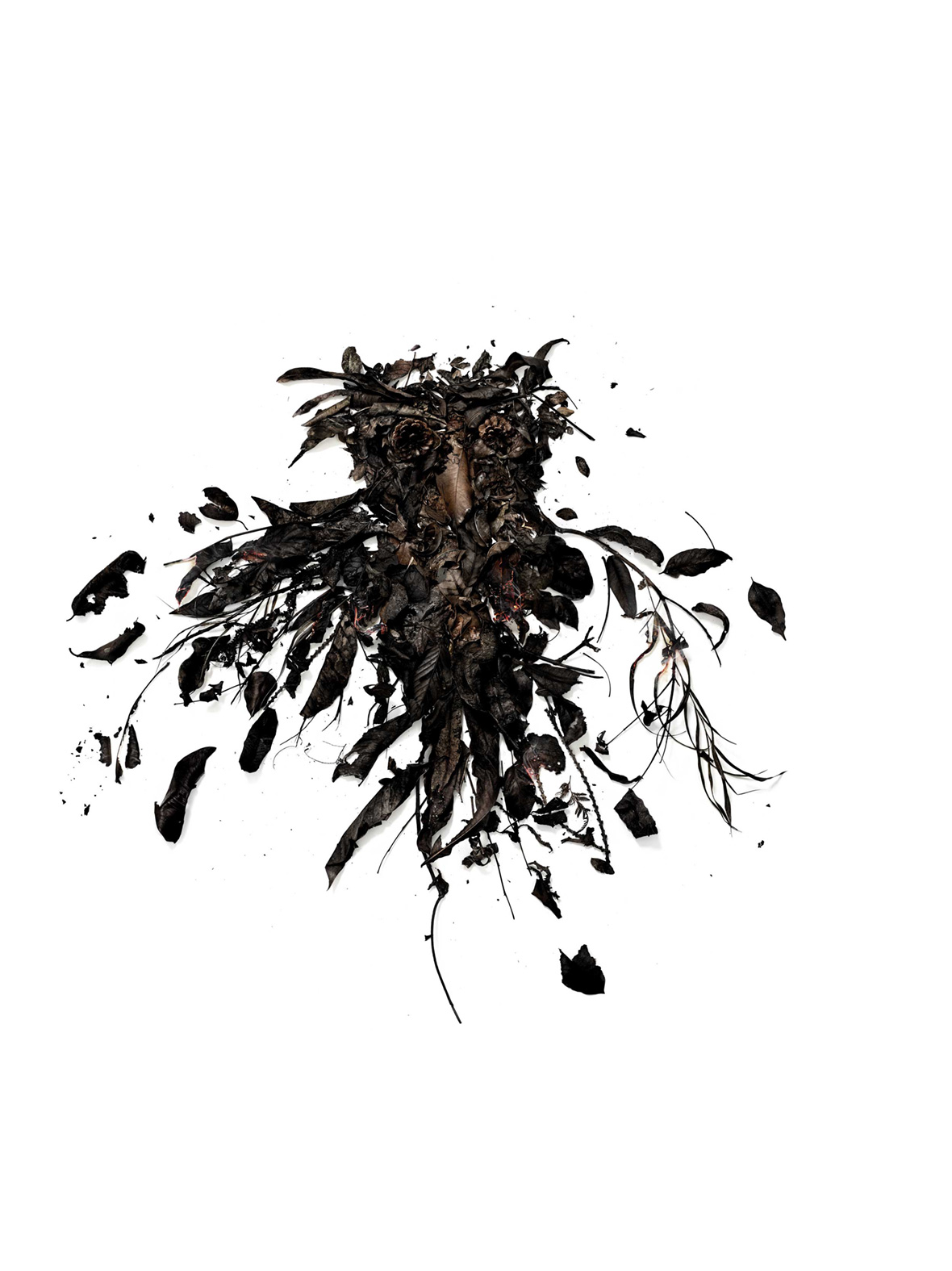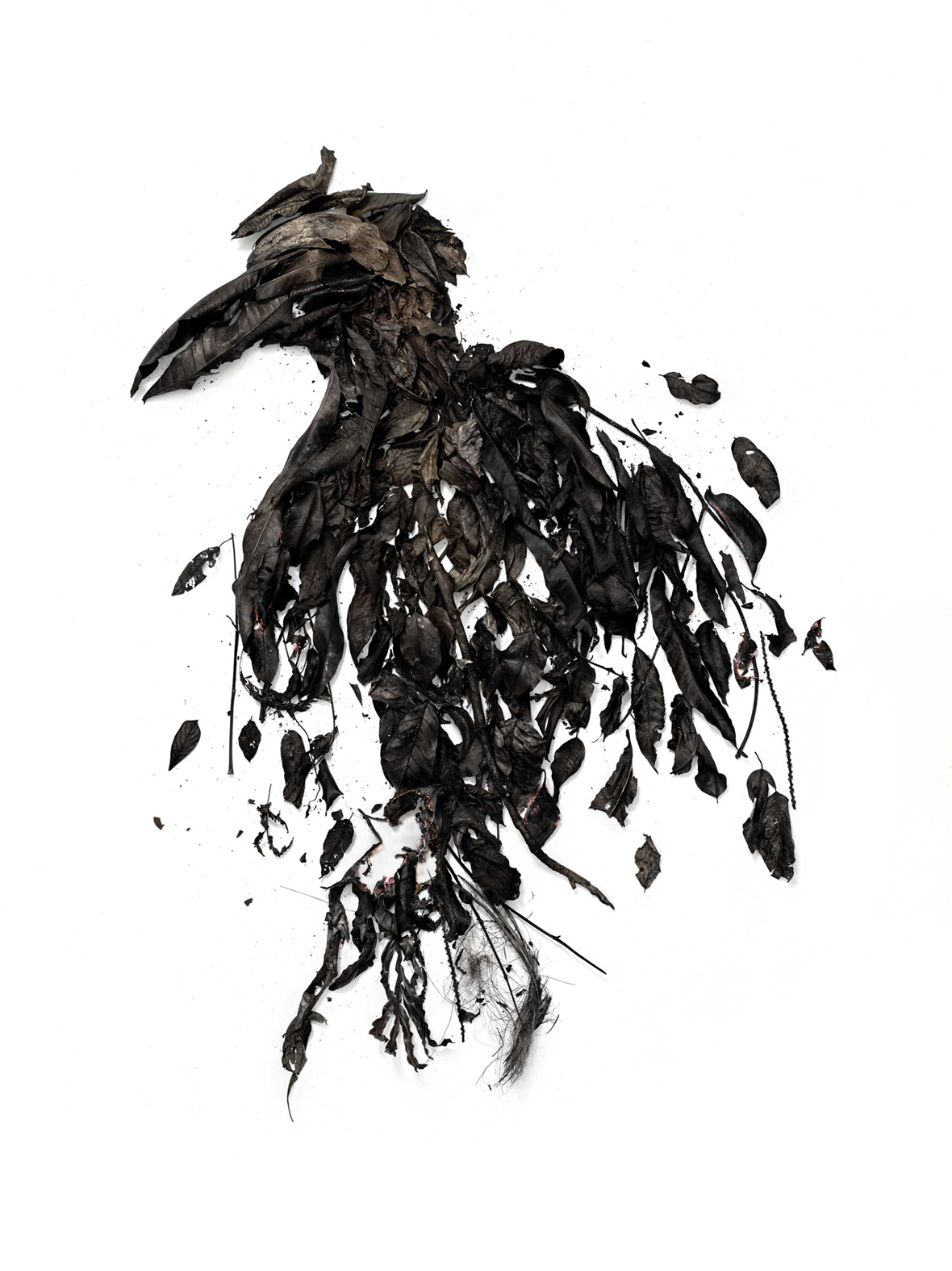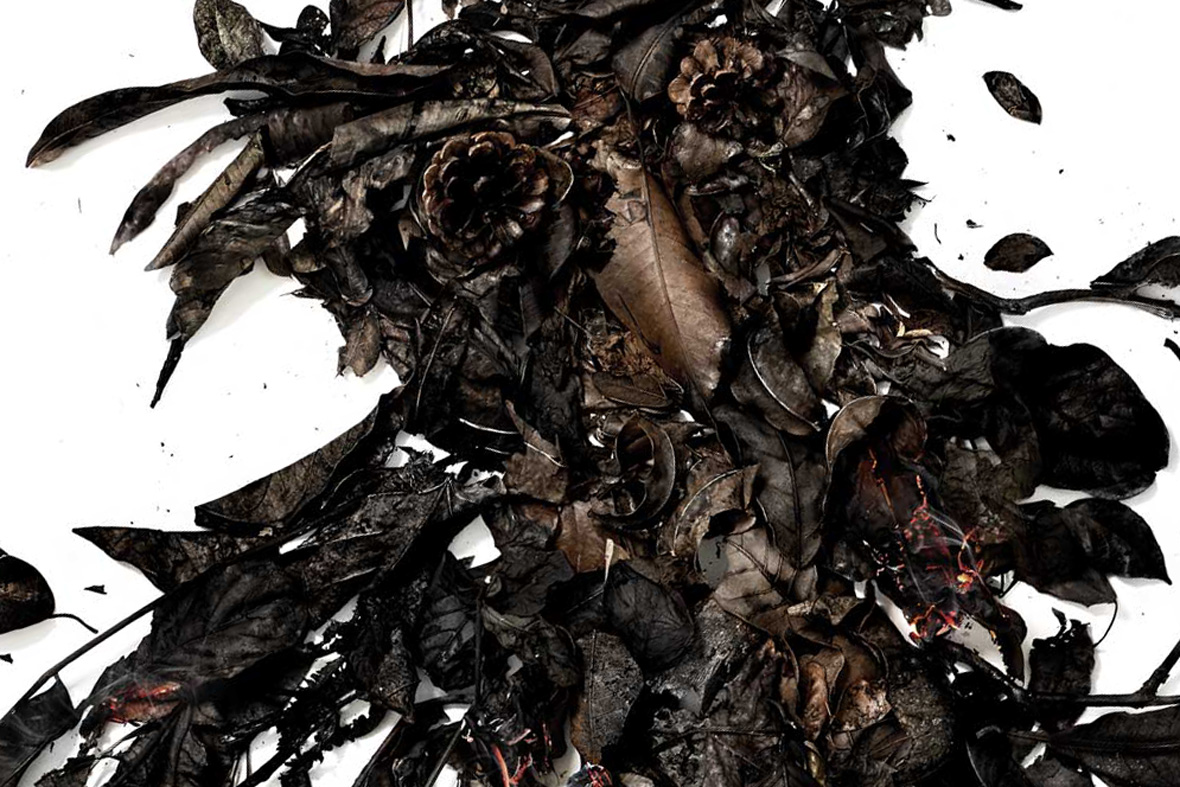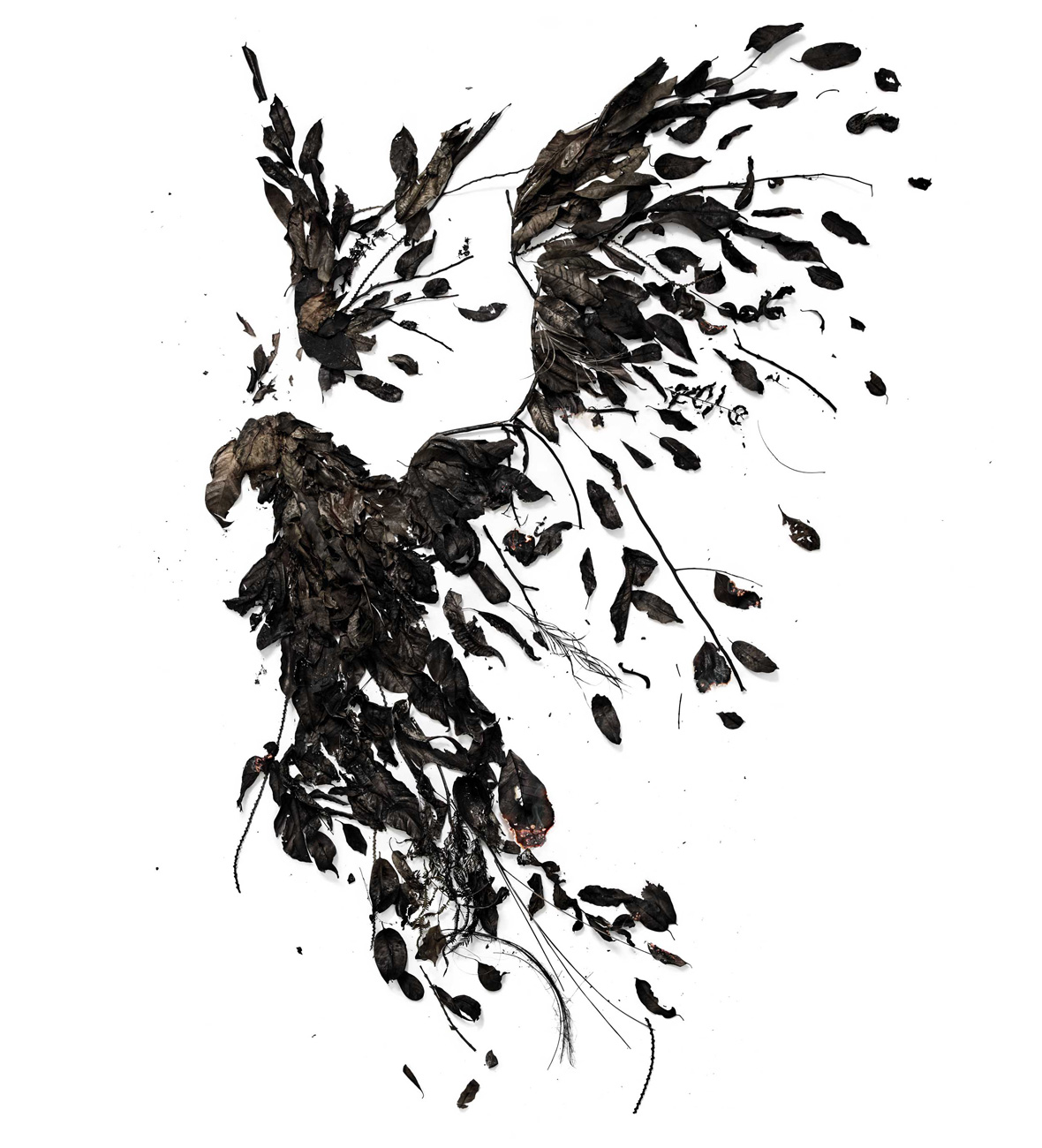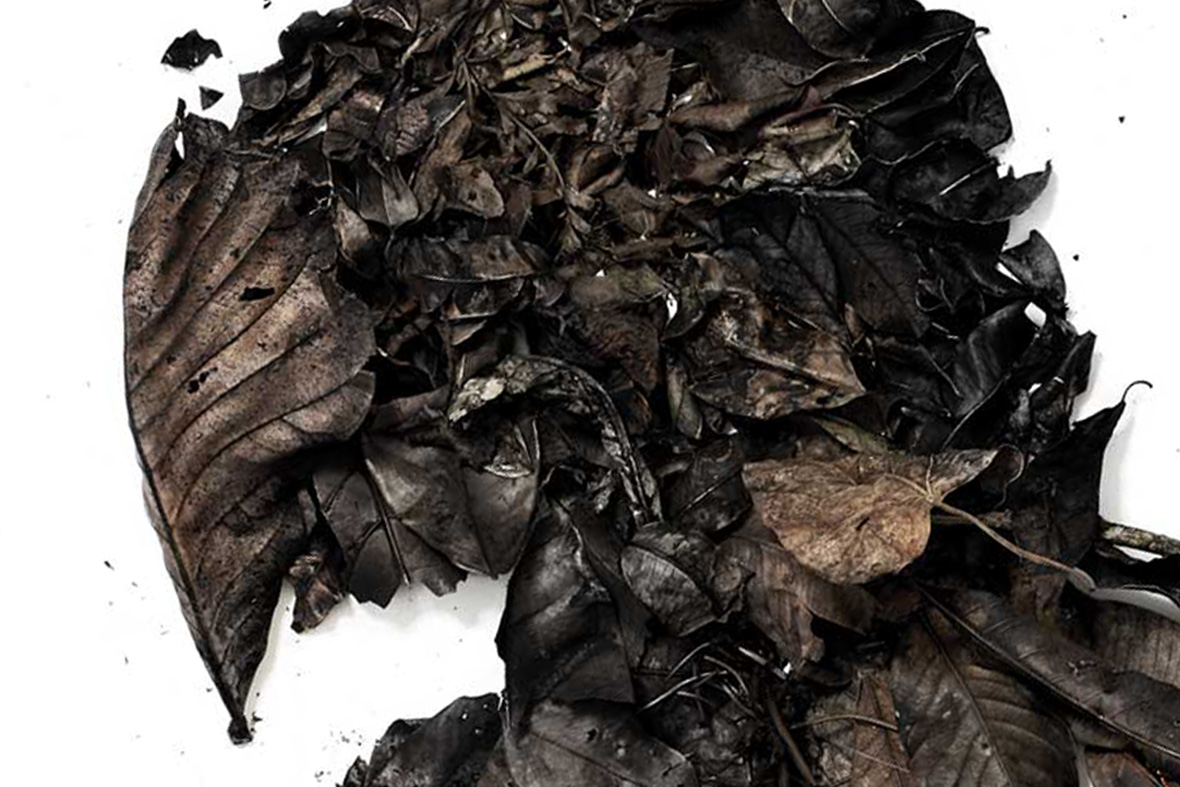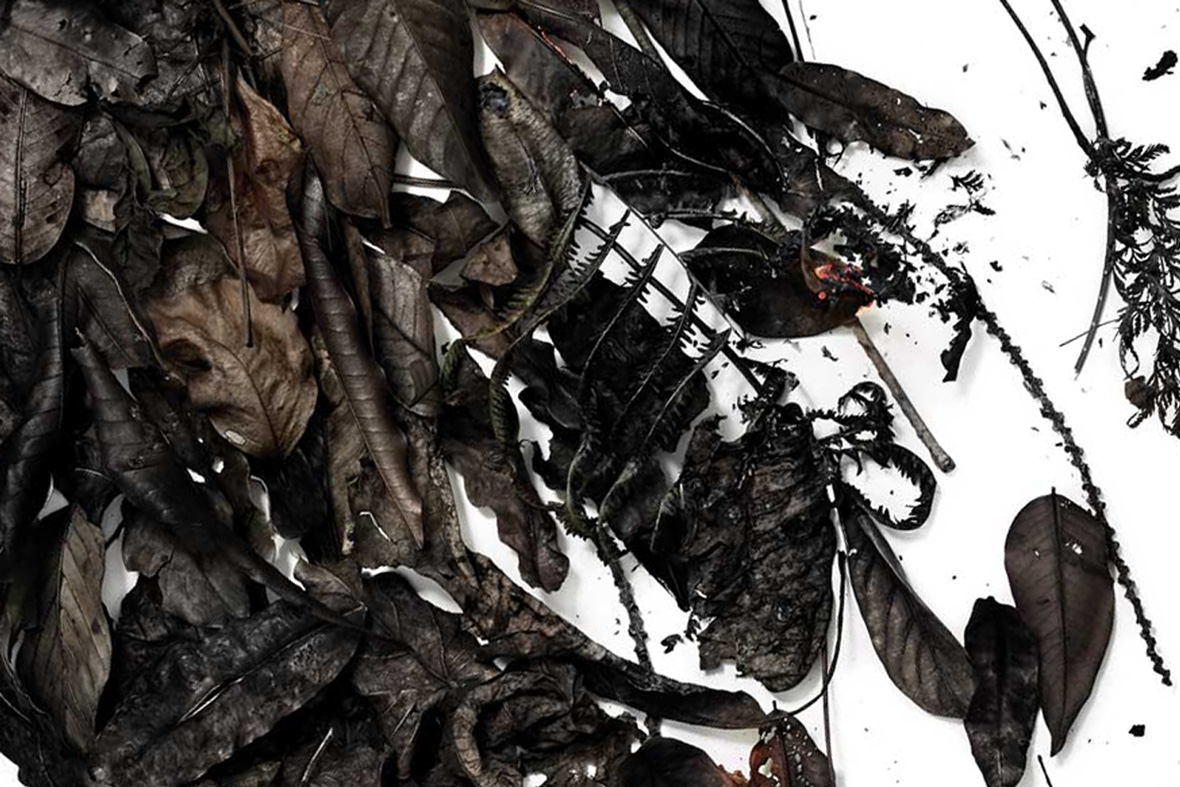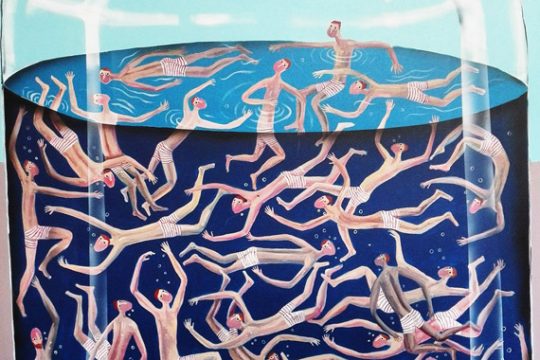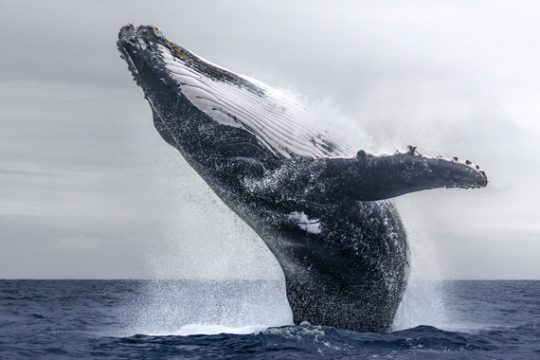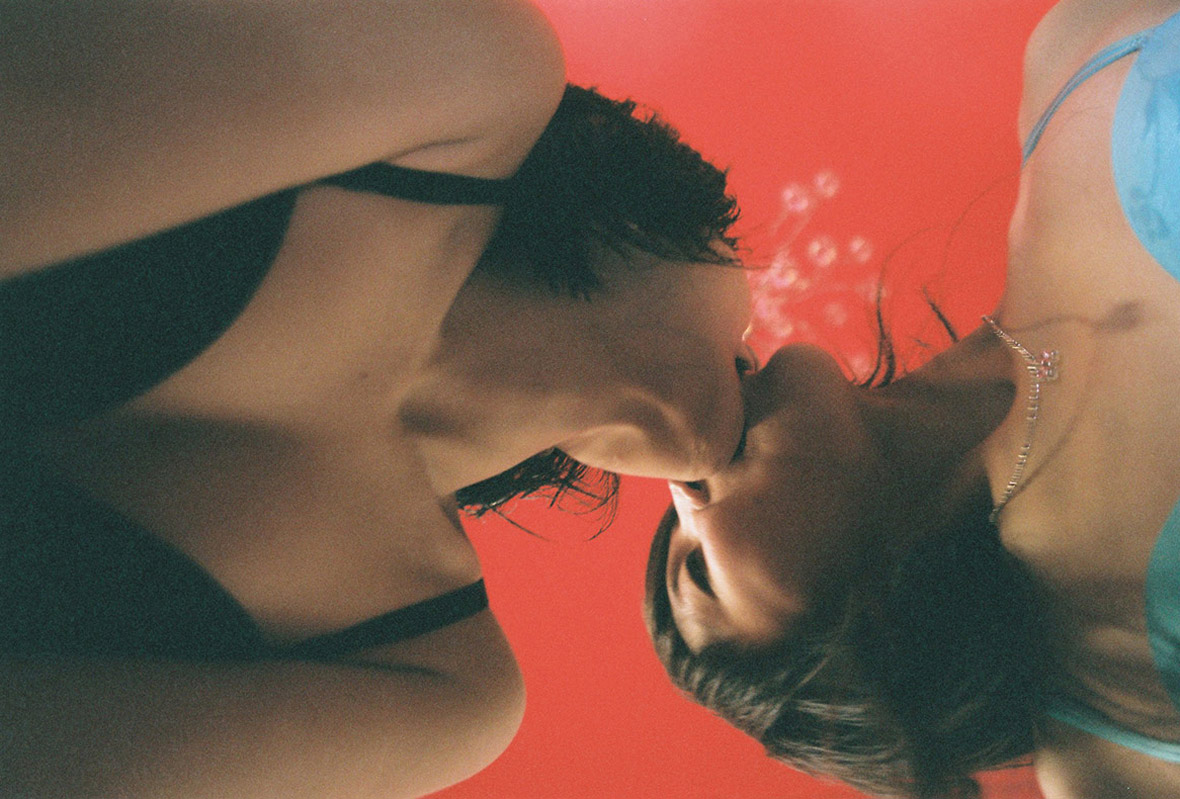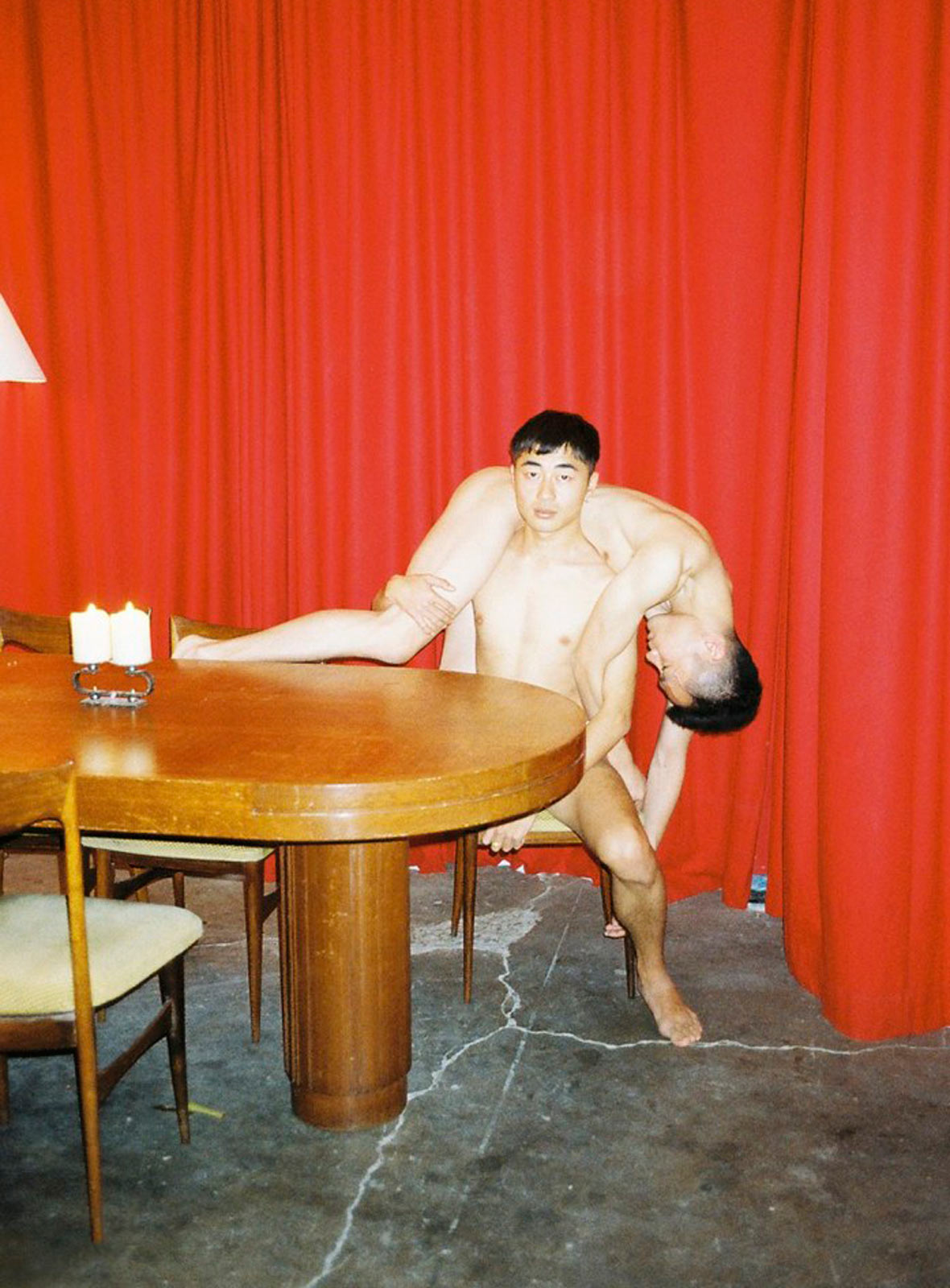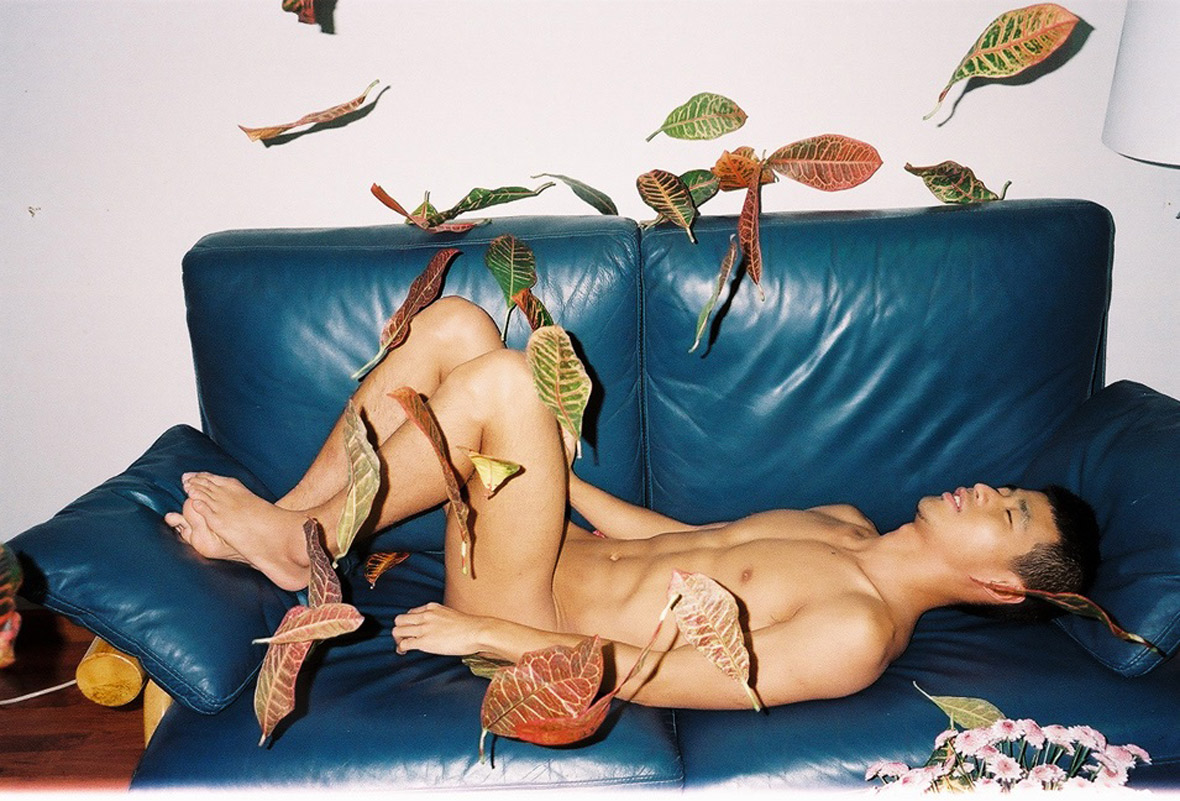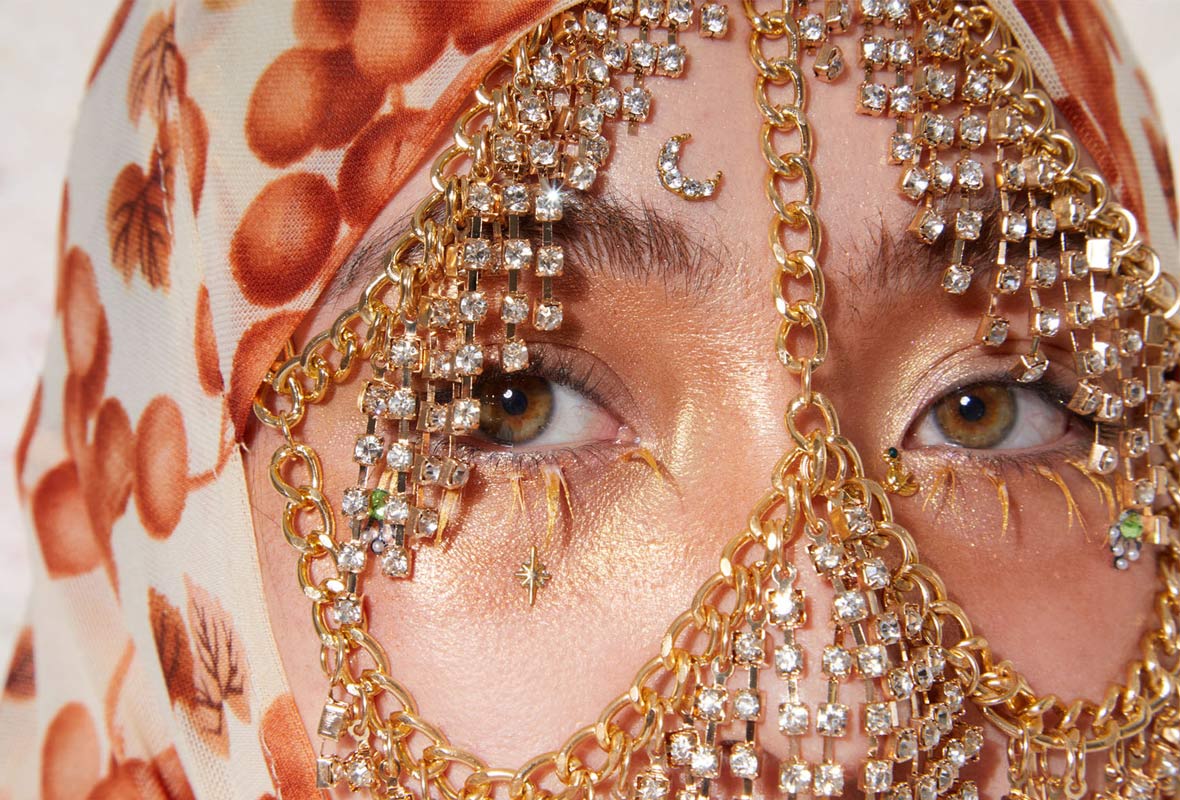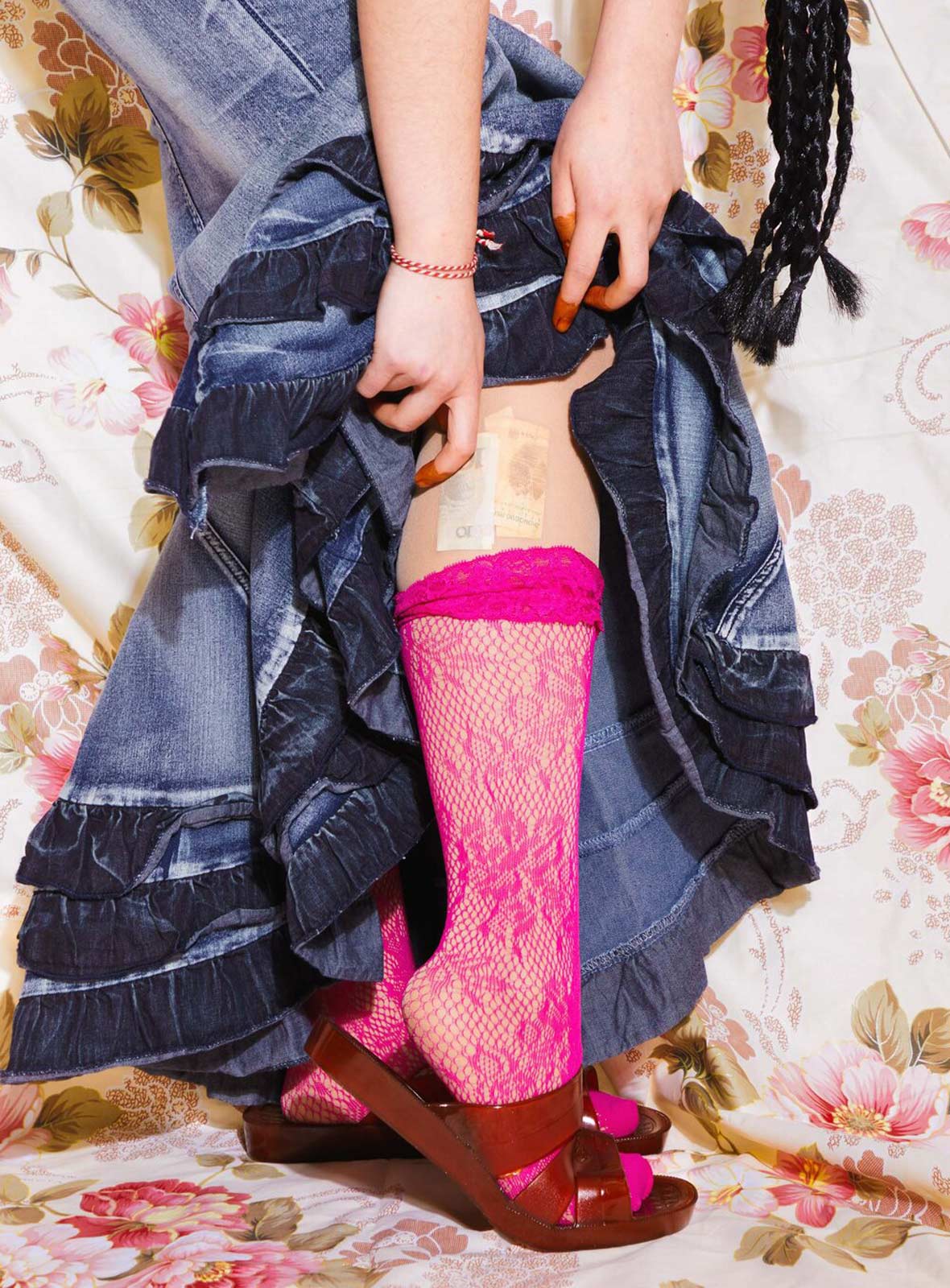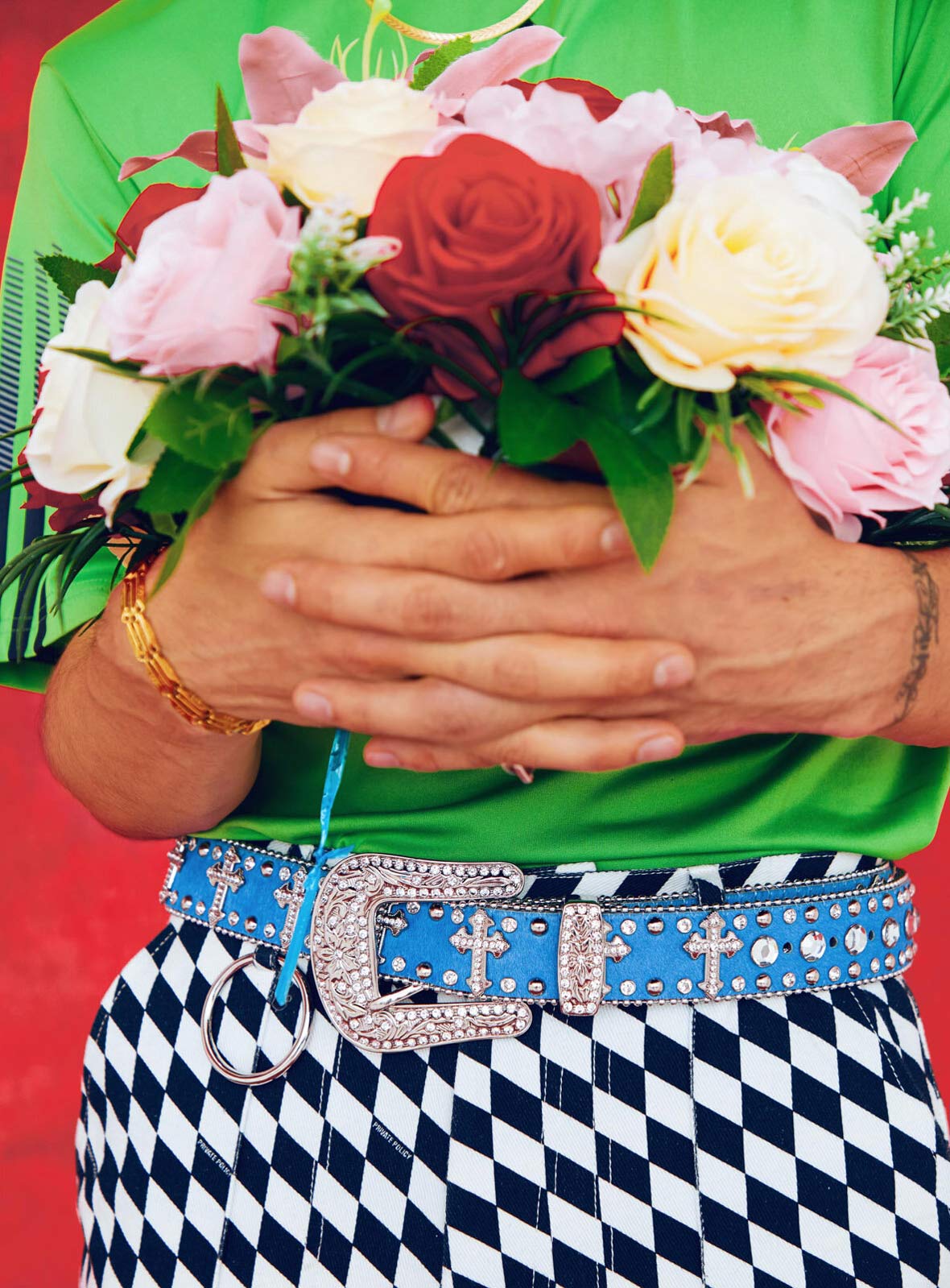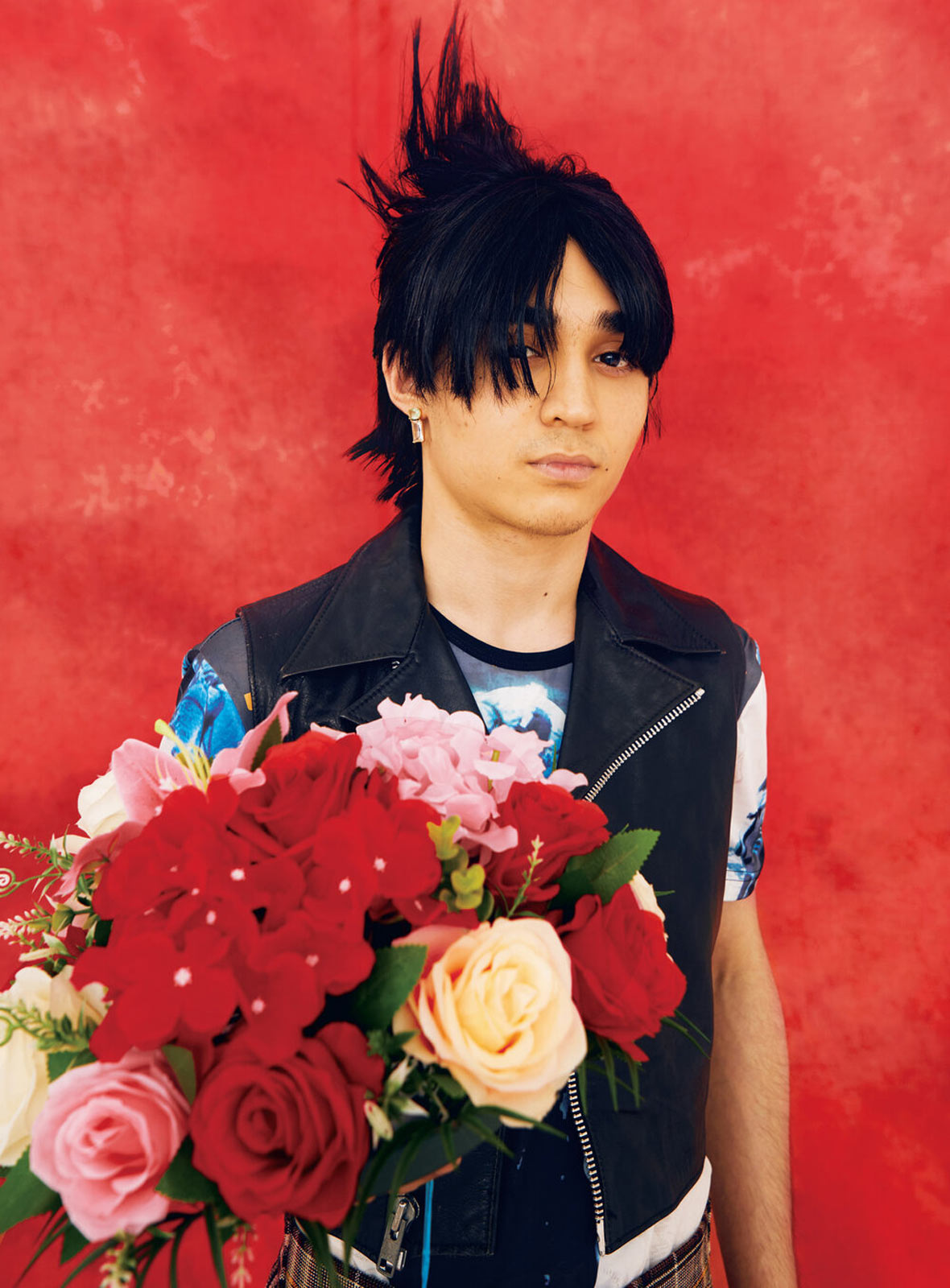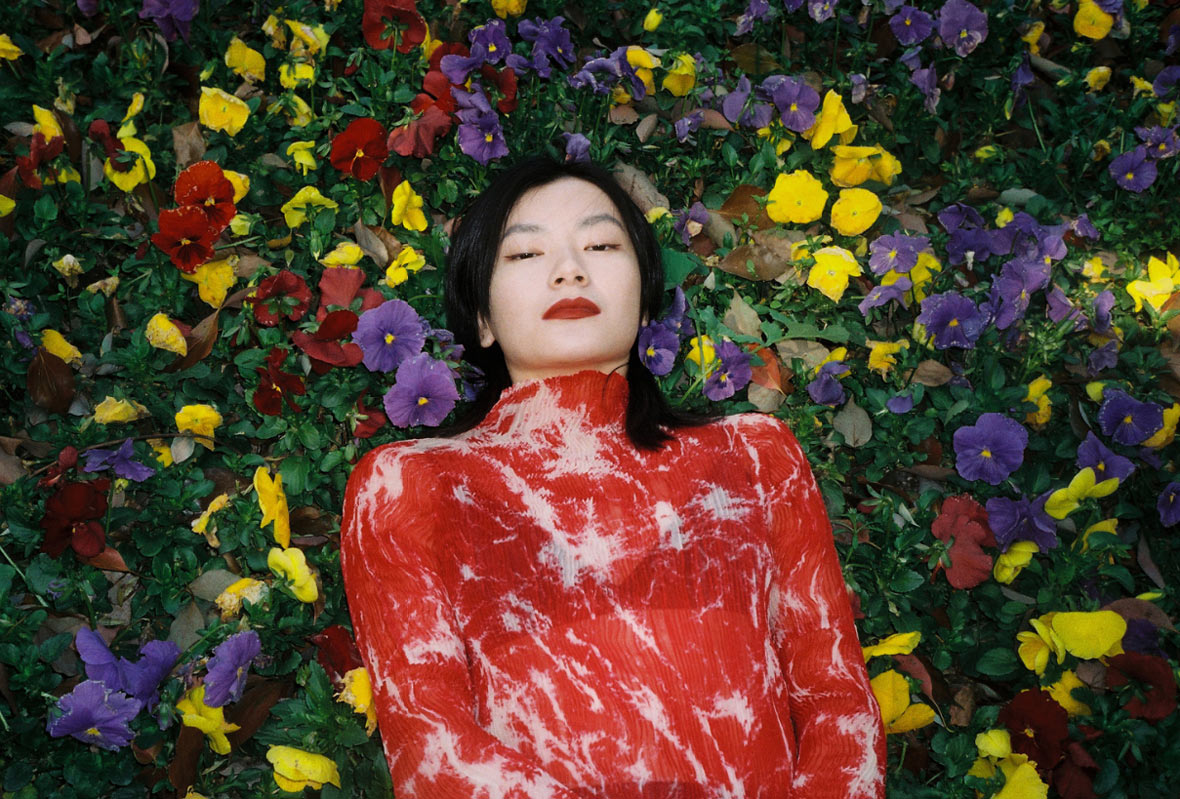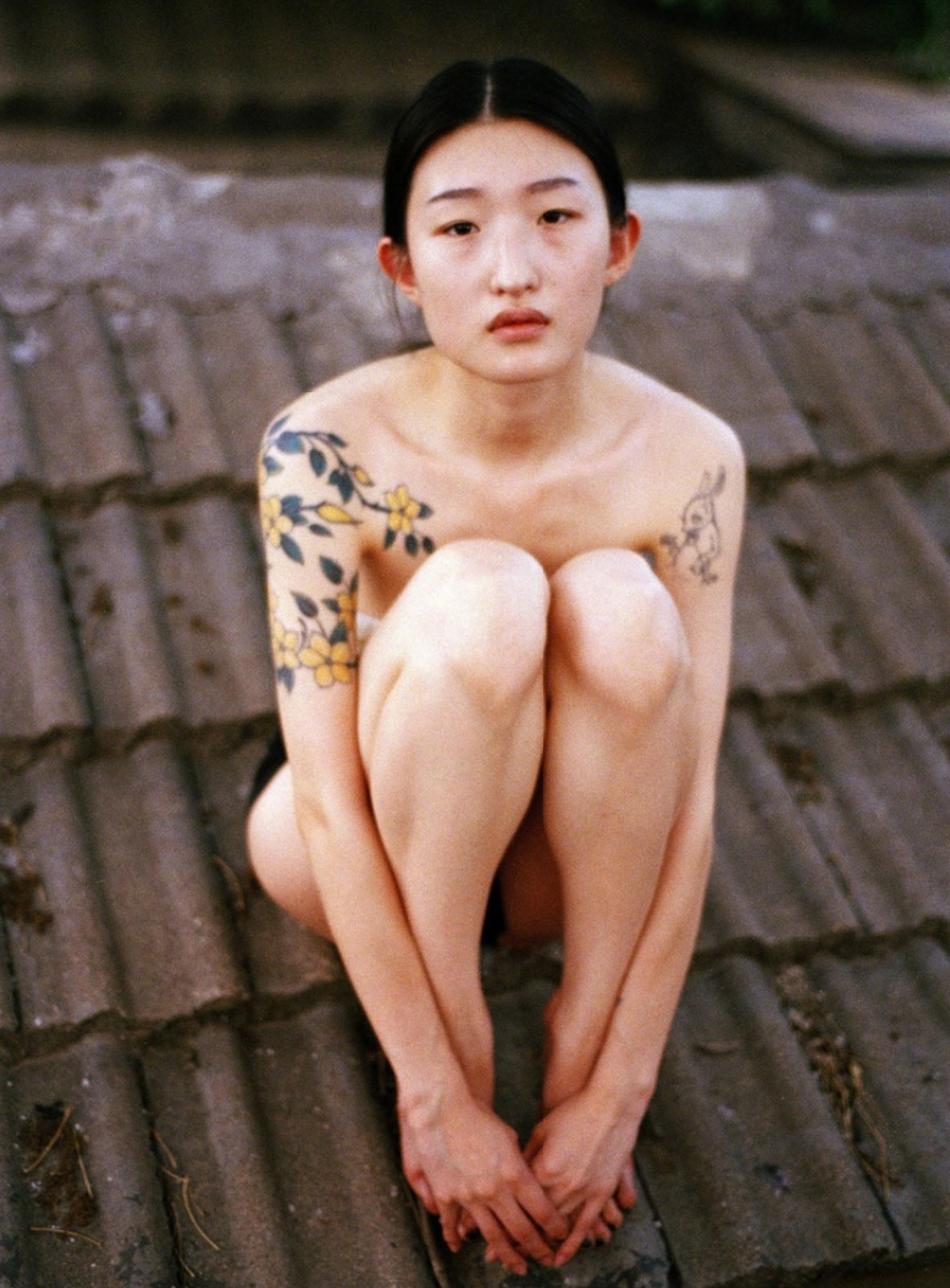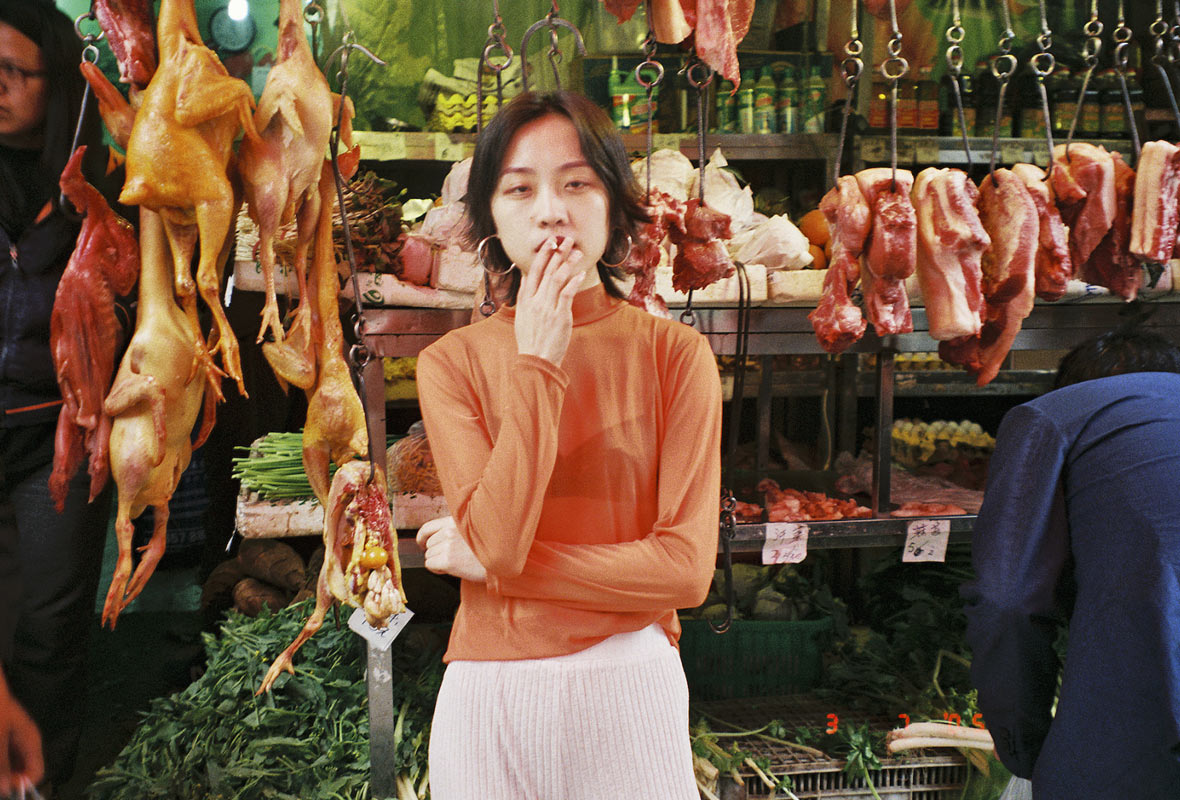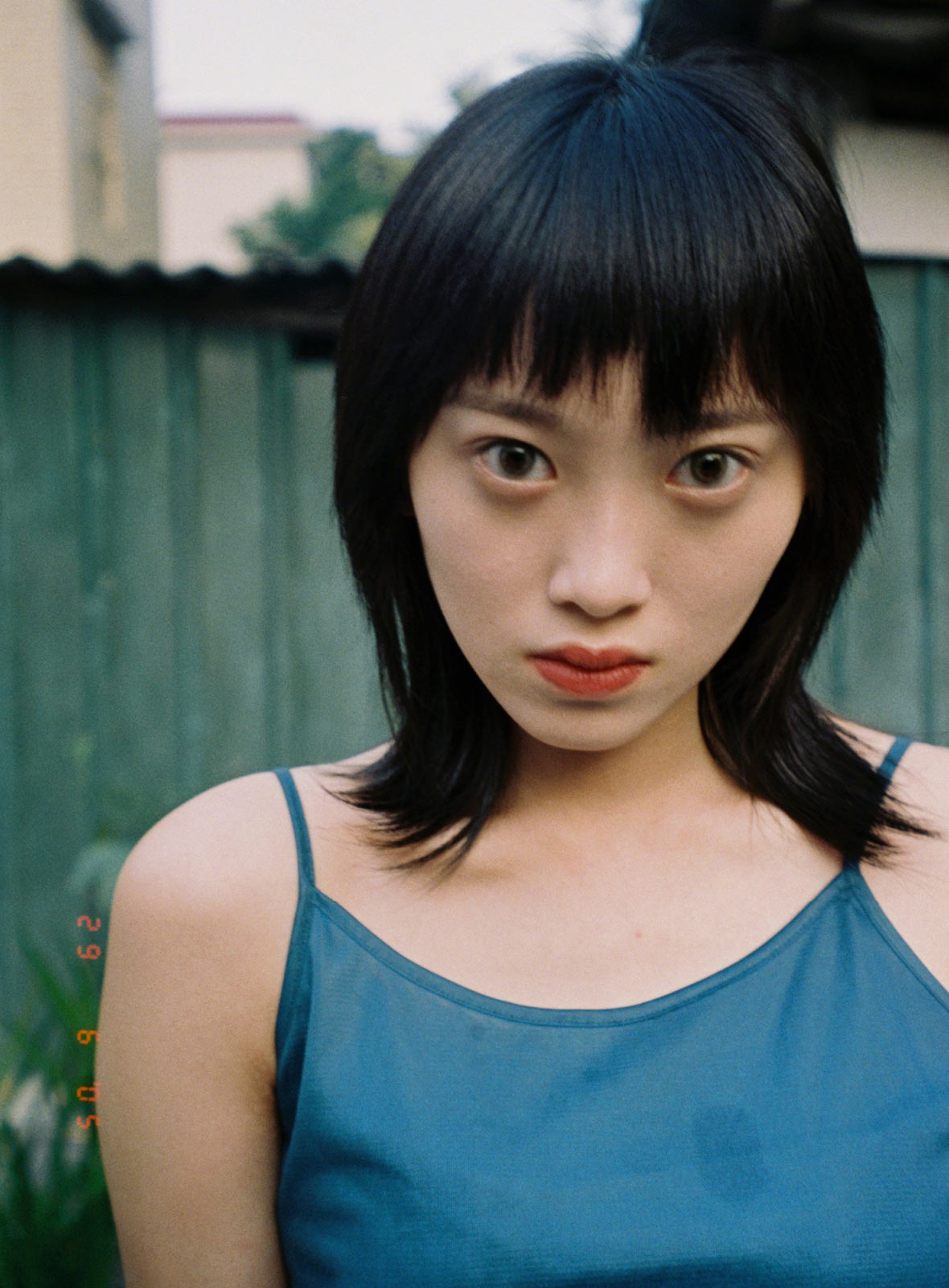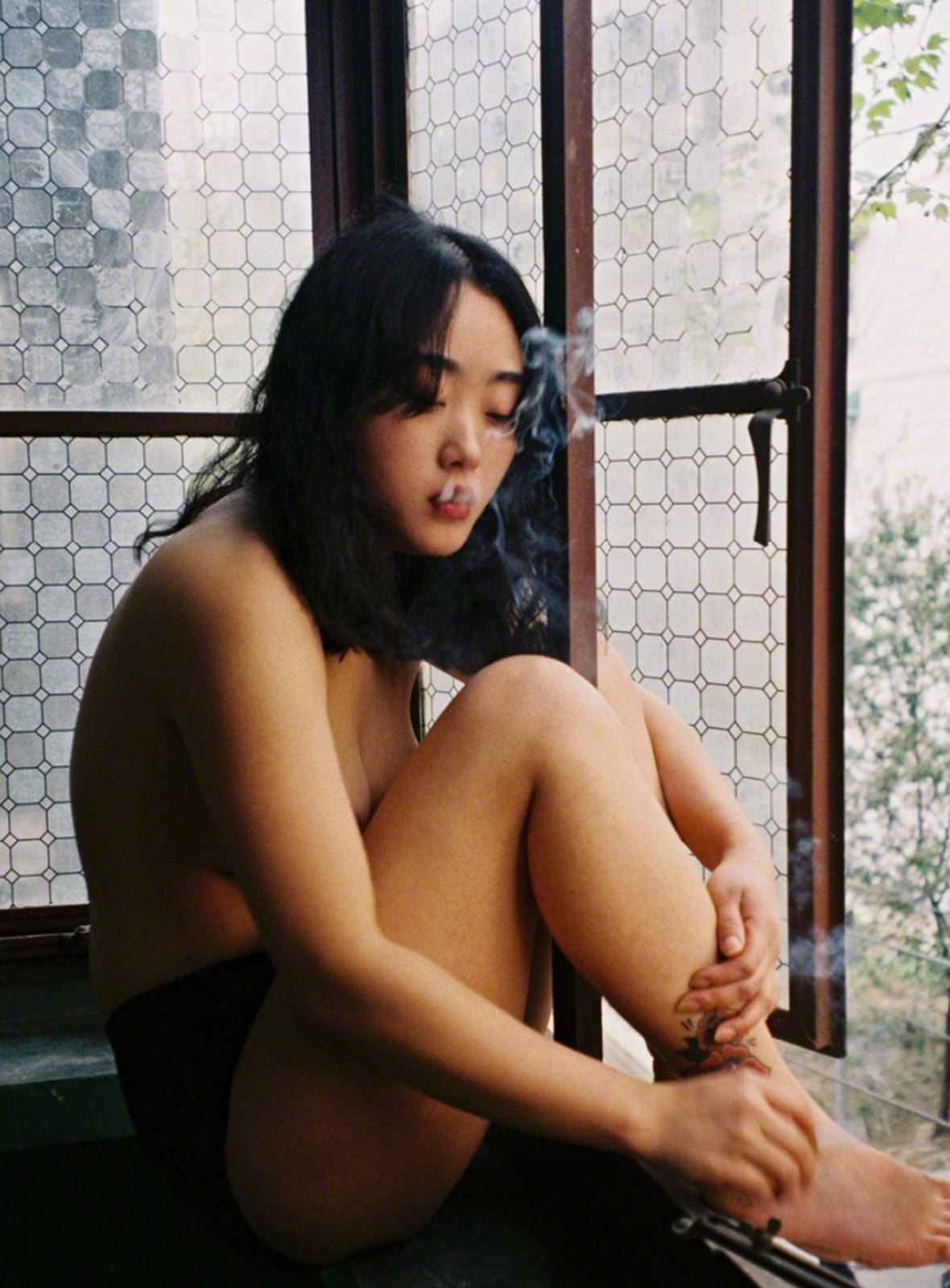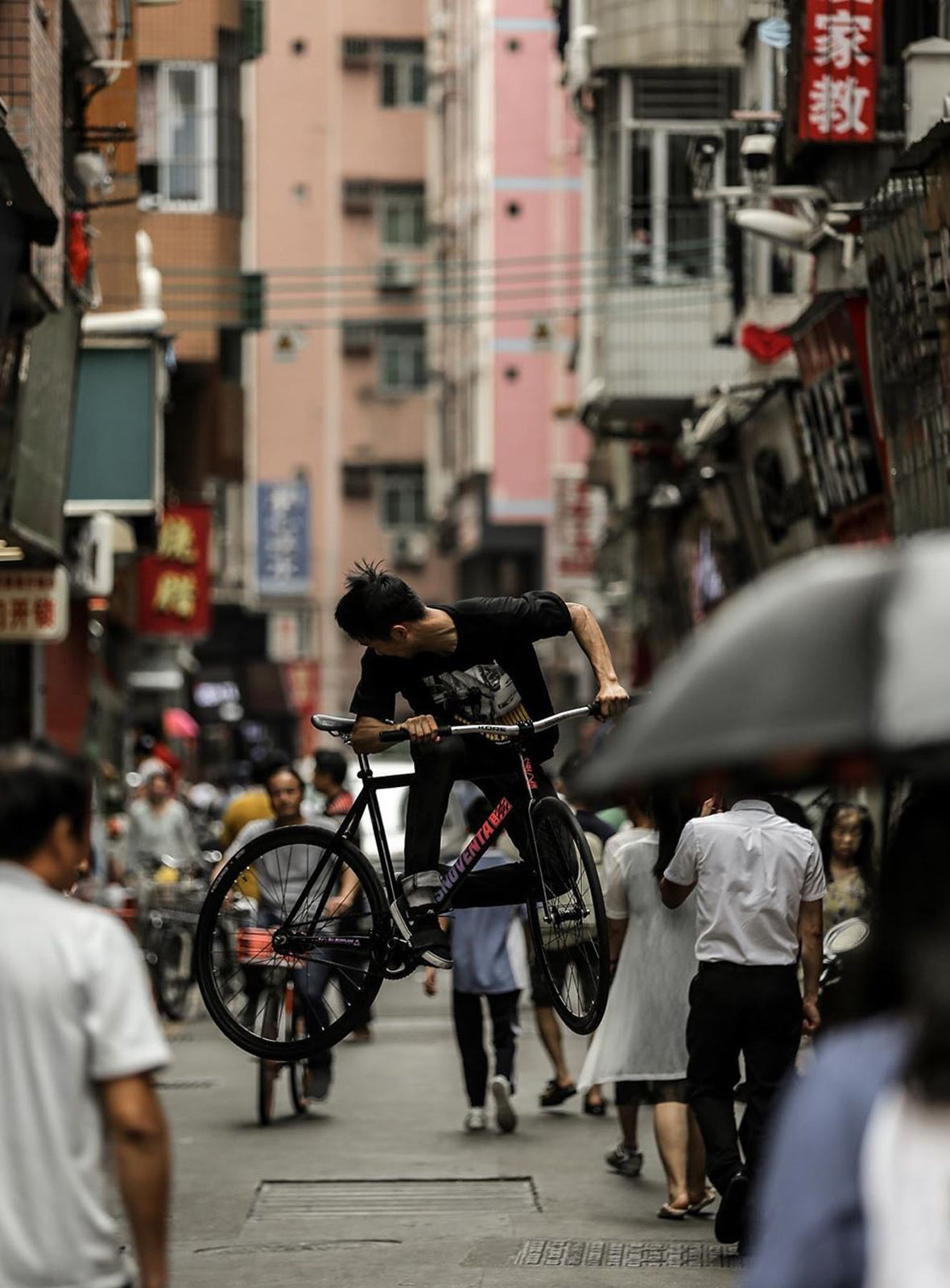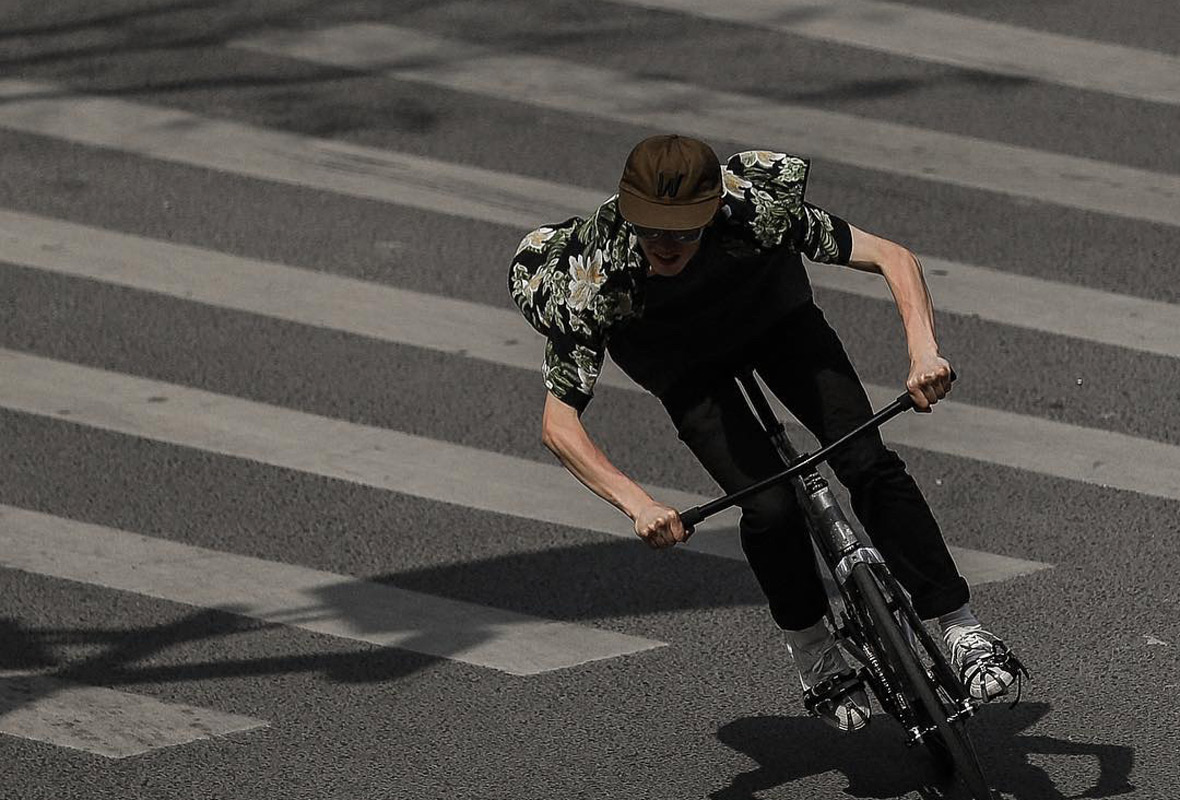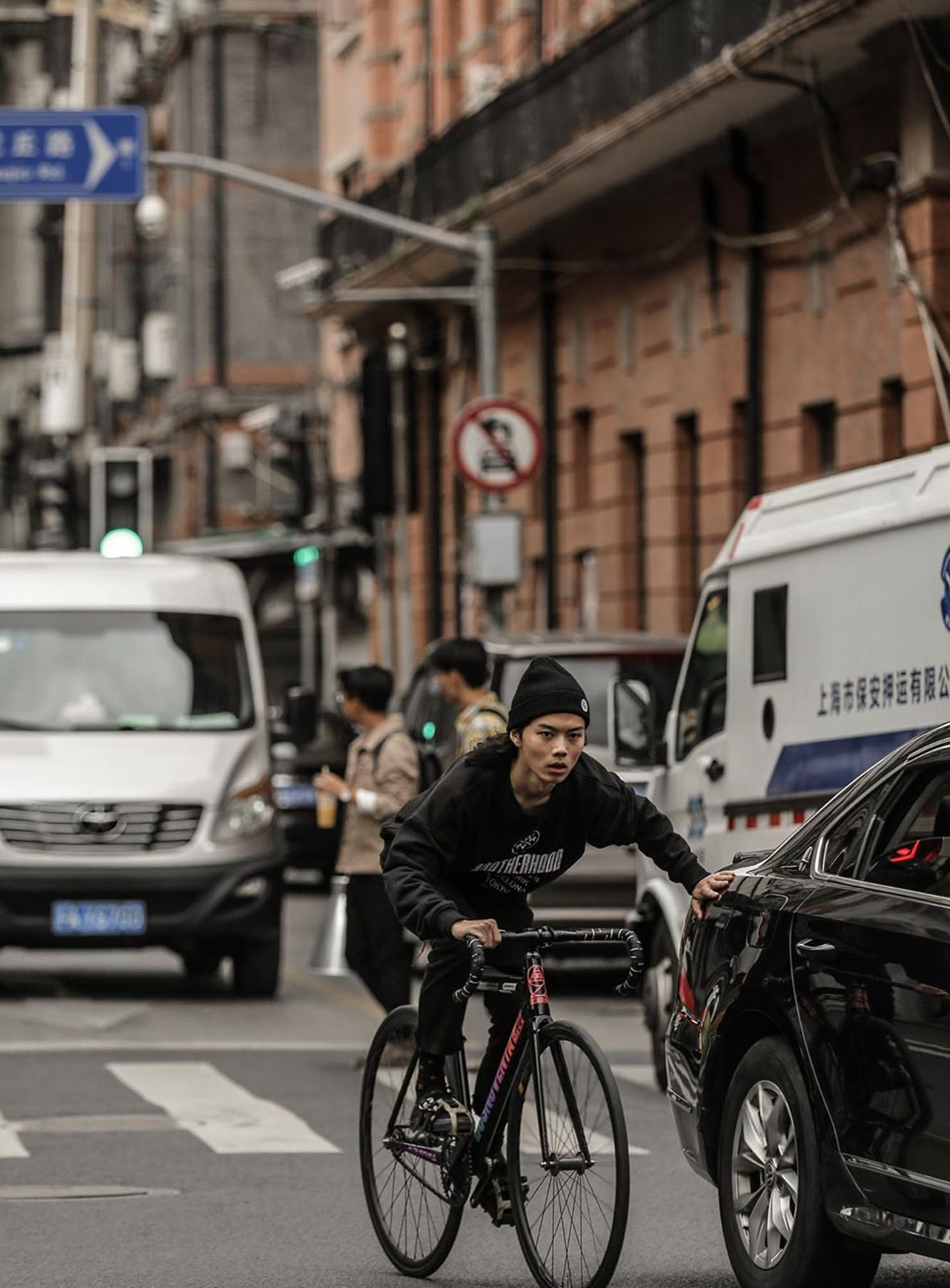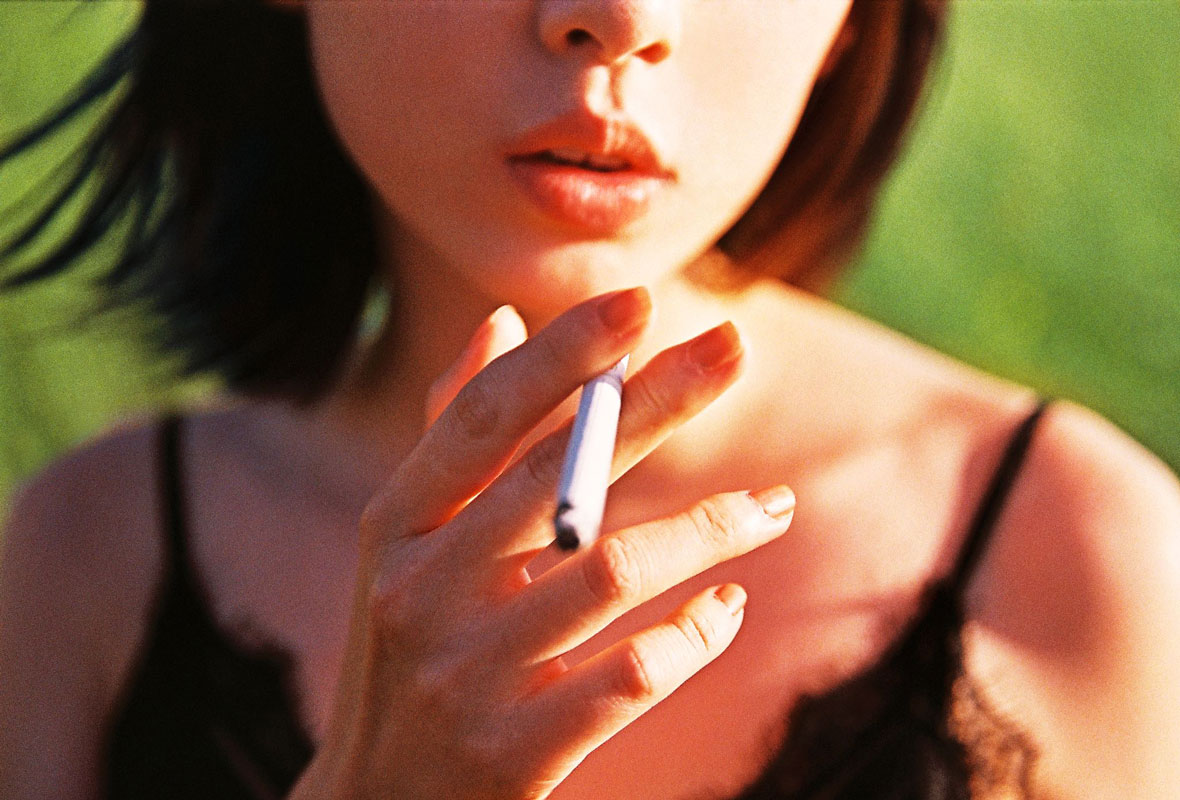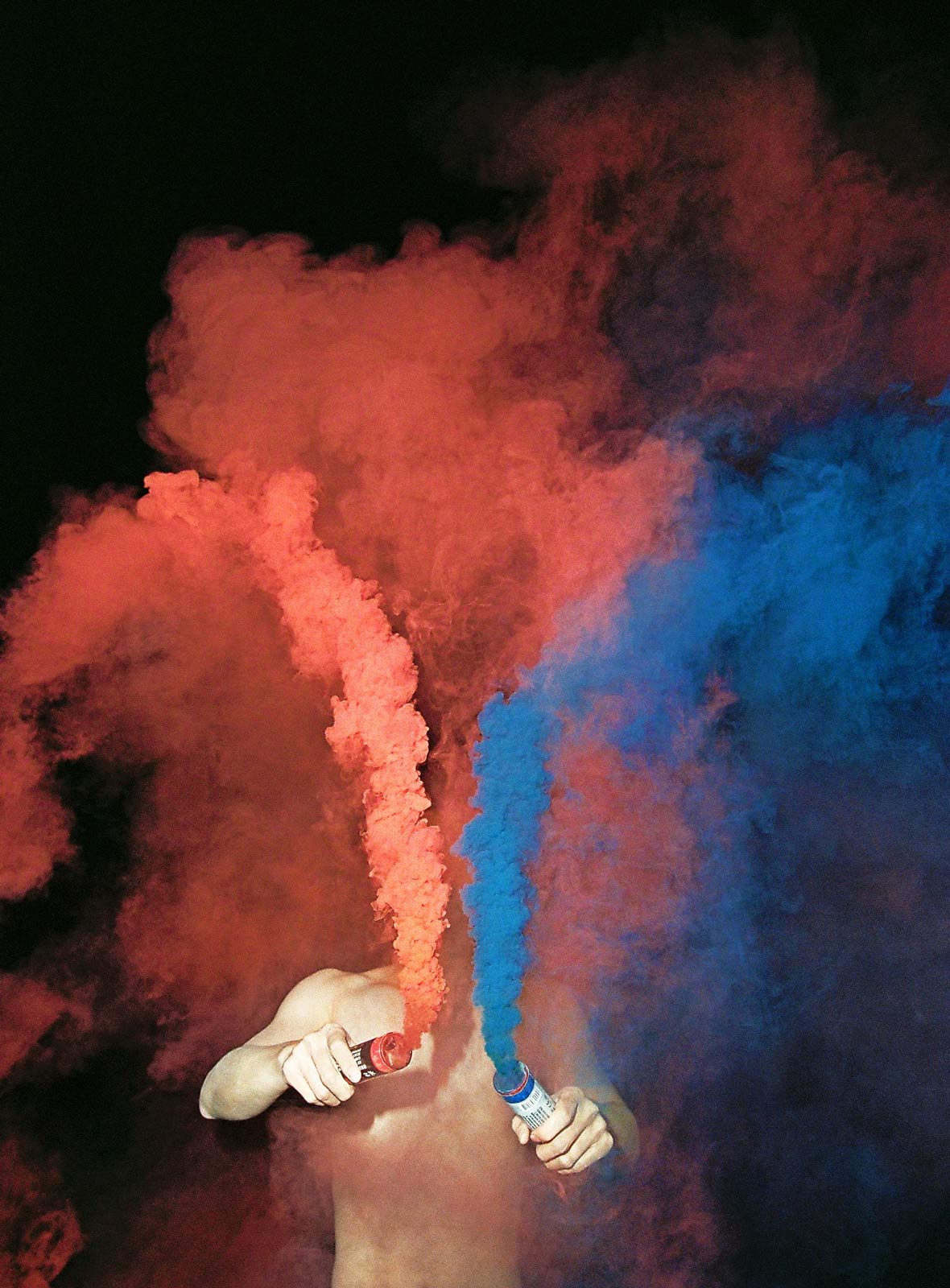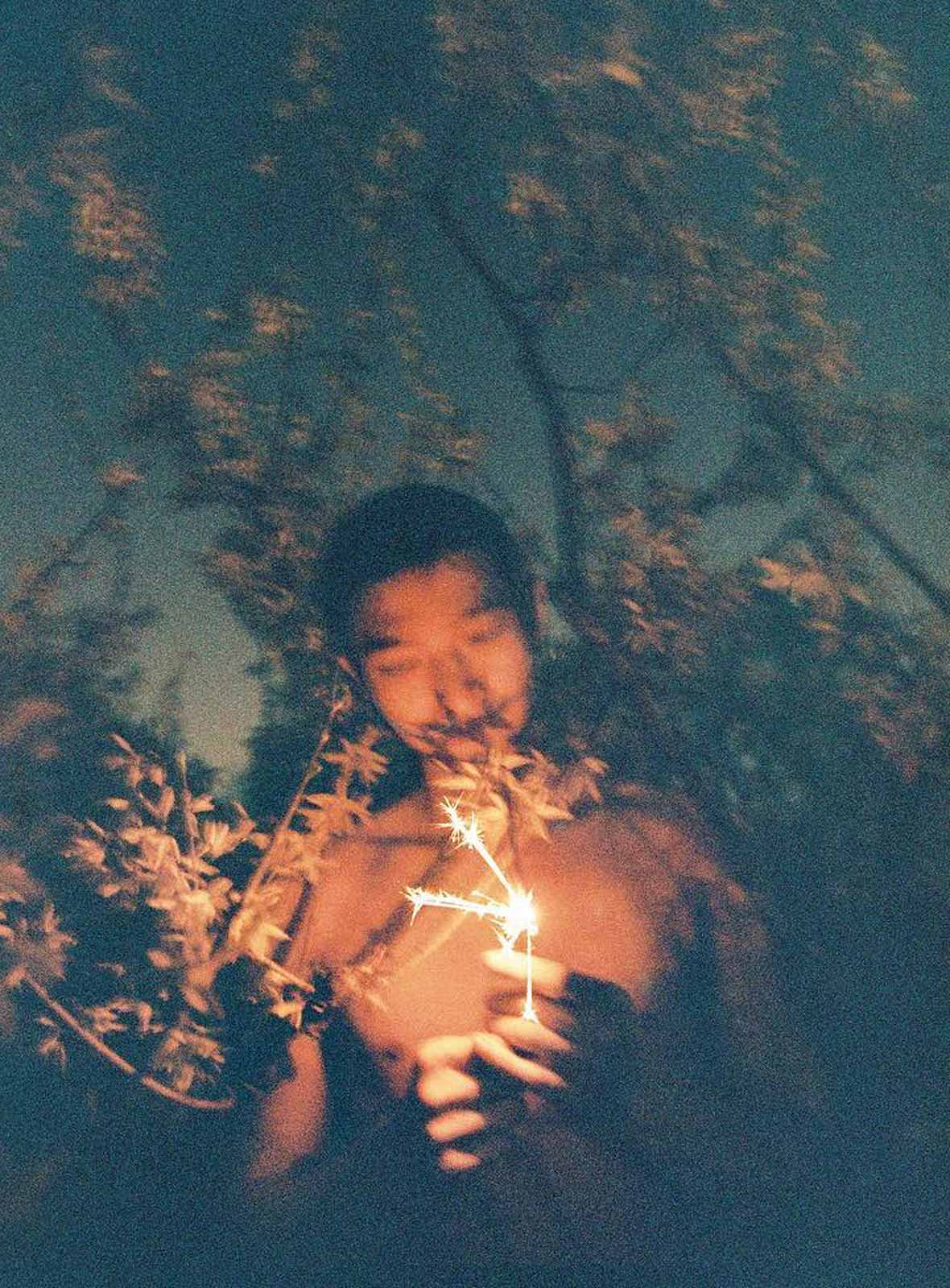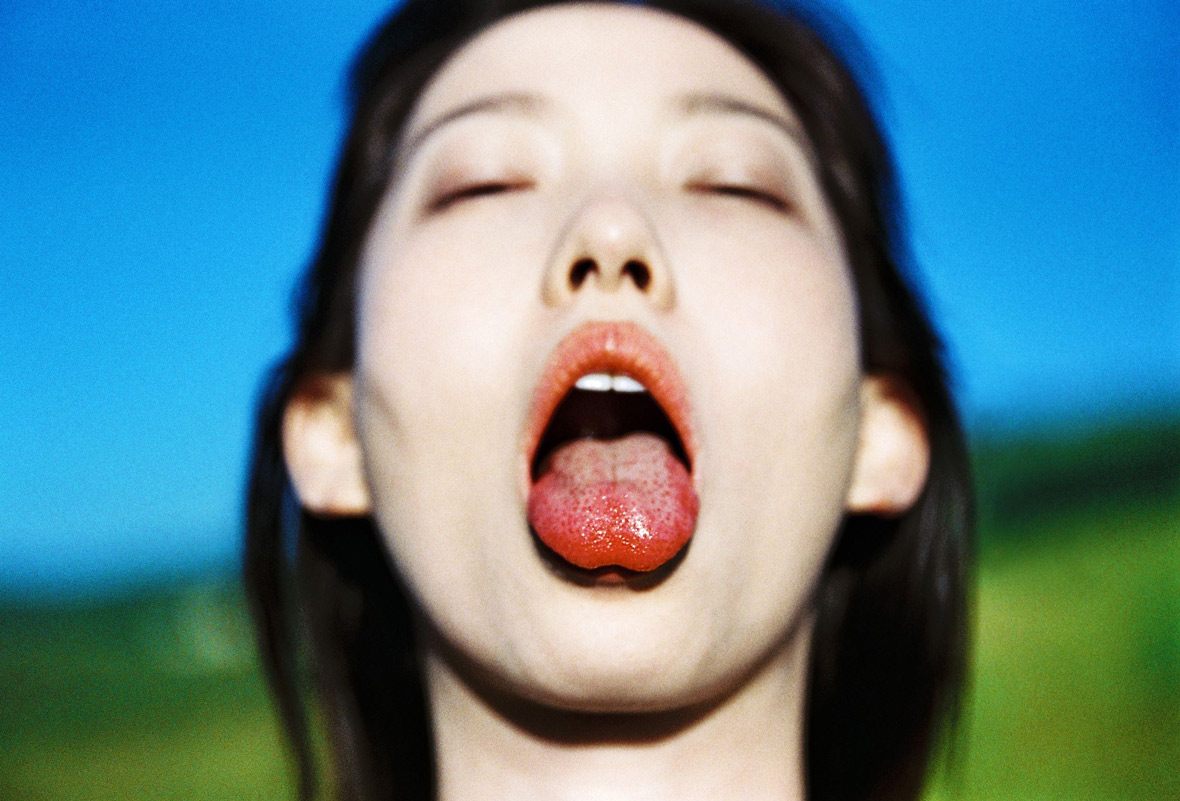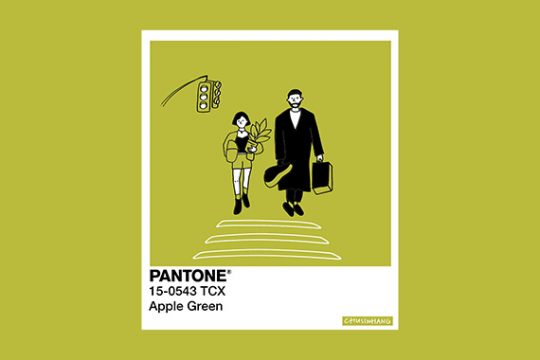
When we think about explosions, we usually think about the aftermath. At the moment of detonation, we see flashes too quick for the eye to render as concrete forms. But from another perspective, explosions can also be a symbol of vitality—an ecstatic birth of life, as is the case with the Big Bang.
Filipino-American painter Faye Pamintuan captures this energy through abstract paintings that seethe, swirl, and splash. Although we often associate abstract expressionism with mystery and heavy emotions, the painter shows that this style can create forms that invite viewers to marvel at the choreography of colors, lines, and shapes.
When you look deeper, however, Pamintuan’s works are more than just frenzied forms churning about. She deals with the abstract to better understand the outcome of complex ideas, systems, and structures. Besides being visual spectacles, the paintings are also investigations into the tipping point between order and chaos.
“I’m interested in how things that are structured or mathematical can result in something that’s… quite the opposite of that,” she explains. “I like imagining things exploding and coming together—Big Bang kind of stuff.”
说起爆炸,人们脑海里通常会联想到爆炸后的场景,而爆炸那一刻转瞬即逝,肉眼根本无法捕捉其具体的样子。但换个角度来看,爆炸也可以是生命力的象征——生命诞生瞬间的欣喜若狂,正如宇宙起源的大爆炸一样。
菲律宾裔美国画家 Faye Pamintuan 以沸腾、漩涡和飞溅般的笔触诠释爆炸的视觉冲击。虽然人们通常将抽象表现主义与神秘、深沉的情绪相联系,但她的作品表明,抽象风格的绘画也可以呈现出令观众惊叹的色彩、线条和形状编排。
细致观察之下不难发现,Faye 的作品绝非只是混乱的表象。你会发现,抽象的笔触是为了更好地让观众理解事物复杂的构想、体系的方式。除了惊艳的视觉效果,这些画作也是对秩序与混乱之间临界点的探索。
“我喜欢探究结构化或数学化事物的反面,我喜欢想象事物如何爆炸,然后又相互结合在一起,比如宇宙大爆炸。”她解释道。
The Origins
The Filipino painter spent her childhood in the Philippines but moved to Texas, United States as a teenager. She recalls that—prior to discovering her interest in art—she wanted to be a marine biologist. After taking some art classes and deciding that she wanted to go to art school, her parents suggested she move back to the Philippines to study in Manila.
Upon moving back to the Philippines, she initially majored in information design at Ateneo de Manila University. But after looking through several senior thesis shows during her freshman year, she realized that it wasn’t for her. “Design’s awesome, and it’s something I’ve always wanted to learn,” she explains. “But I really wanted to paint.”
When she discovered that her passions lay in the fine arts, Pamintuan transferred to the University of the Philippines to pursue a bachleor’s degree in painting. It was during her junior year there when she discovered the potential of abstract forms. “I think I’ve always been drawn to that kind of artwork; I just never realized it,” she recalls.
苗头
这位菲律宾画家童年在菲律宾生活,十几岁时移居美国德克萨斯州。她回忆说,在对艺术产生兴趣之前,她曾梦想成为一名海洋生物学家。直到后来参加了一些艺术课程后,她才决定去艺术学校进修,而她的父母则建议她回菲律宾马尼拉读书。
回到菲律宾后,她先在马尼拉雅典耀大学主修信息设计。大一那会儿,她看了好几场学长学姐的毕业展,意识到这个专业并不适合自己,她说:“设计专业很好,也是我一直想学的东西。但我更想画画。”
在认识到自己更热衷于绘画后,Faye 转学到菲律宾大学攻读绘画专业。大三阶段,她发现了抽象形式的魅力。“我可能一直都很喜欢这种风格的艺术作品,可能我自己以前从没意识到这一点。”她回忆道。
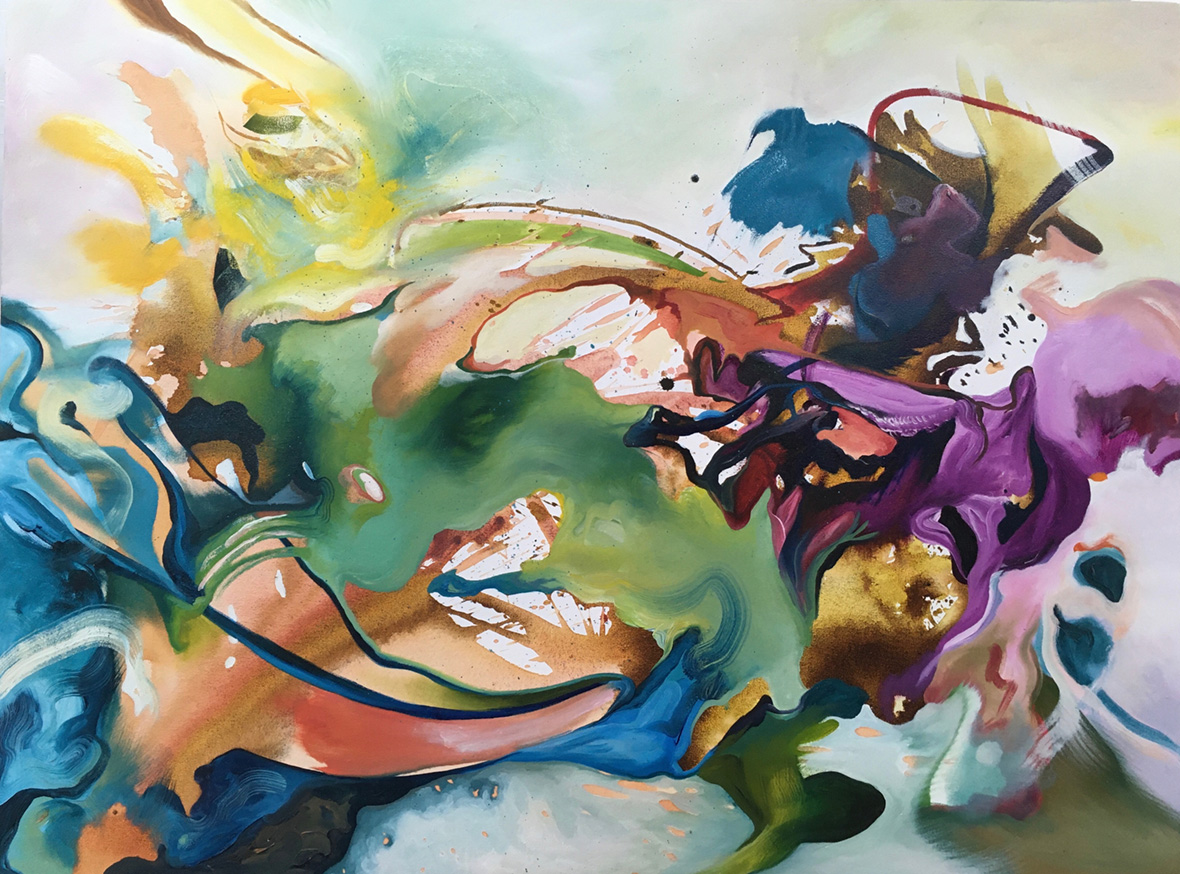
Storytelling Through Form
If Pamintuan was to be honest, however, she’s actually hesitant to truly call her works “abstract expressionist” in respect to the history of that art movement. Abstract expressionist art emerged as a combination of nihilism and emotional intensity, she recalls, whereas her works are never fully about her inner world. However, they’re also not quite detached from it either. Pamintuan’s art deals primarily with interaction and movement; they’re not just entities that stand purely alone. This dynamic interactivity is not only limited to forms and colors in her paintings. It also extends to the interaction between the viewer and the artist.
As her art has evolved, Pamintuan is now interested in weaving stories, which she achieves with the way her colors and shapes interact with one another. Without concrete forms, viewers are urged to compose their own understanding of the tale. This is usually why titles her artworks with verbs or actionable sequences, such as Birth on the Rocks (2018), Breathe (2020), and That Which Fought (2021). These titles serve to narrate the energy she envisions and aid the viewer in constructing their own story.
“The forms interact with each other, so there’s a story, but you have to fill in the blank,” she explains. “I give you the setting, I give you the action verb, but you come up with the rest.”
Besides acting as guides, these titles also coax the viewers to investigate the art deeper. Pamintuan believes that artworks—really good ones—should meet viewers halfway.
“When someone says, ‘I could do that,’ I would get annoyed before,” she recalls. “But now I use it as a way to enter a conversation with them. I ask, ‘Oh what would you have done?’ I want to invite them in.”
以形式讲述故事
Faye 坦言,按传统历史中的抽象表现主义而言,她的作品其实并算不上真正的抽象表现主义。抽象表现主义艺术是虚无主义与情感强度的结合,而她的作品却很大程度上与内心世界无关。Faye 的作品主要在于互动和动态,每一幅作品并不只是纯粹的独立个体。这种动态的互动并不局限于她作品中的形式和颜色,还延伸到观众和艺术家之间的互动。
在不断创作过程中,Faye 逐渐倾向于用色彩和形状的互动来讲故事。由于画面中没有任何具体形态,促使观众去对画中的故事进行自己的解读。正因如此,她的作品标题通常都是一些动词或表达动作的短语,例如《Birth on the Rocks》(在岩石上诞生)(2018)、《Breathe》(呼吸) (2020) 和《That Which Fought》(战斗)(2021)。这些标题有助传达她所构想的创作方式,也能帮助观众形成自己的理解。
“各种形态之间相互影响,讲述着一个故事,但你必须填补其中的空白,”她解释道,“我设置好背景,给出主题动词,剩下的就由你自己来补充。”这些标题除了提供线索,也吸引着观众去更深入地研究每一幅作品。在 Faye 看来,好的艺术作品应该与观众相向而行。
她表示:“以前总听到有人说,‘这我也能画’,我会很生气,但现在我会把它当作机会,去跟他们对话,去问他们,‘那你会怎么画?’,邀请他们加入这个作品中。”
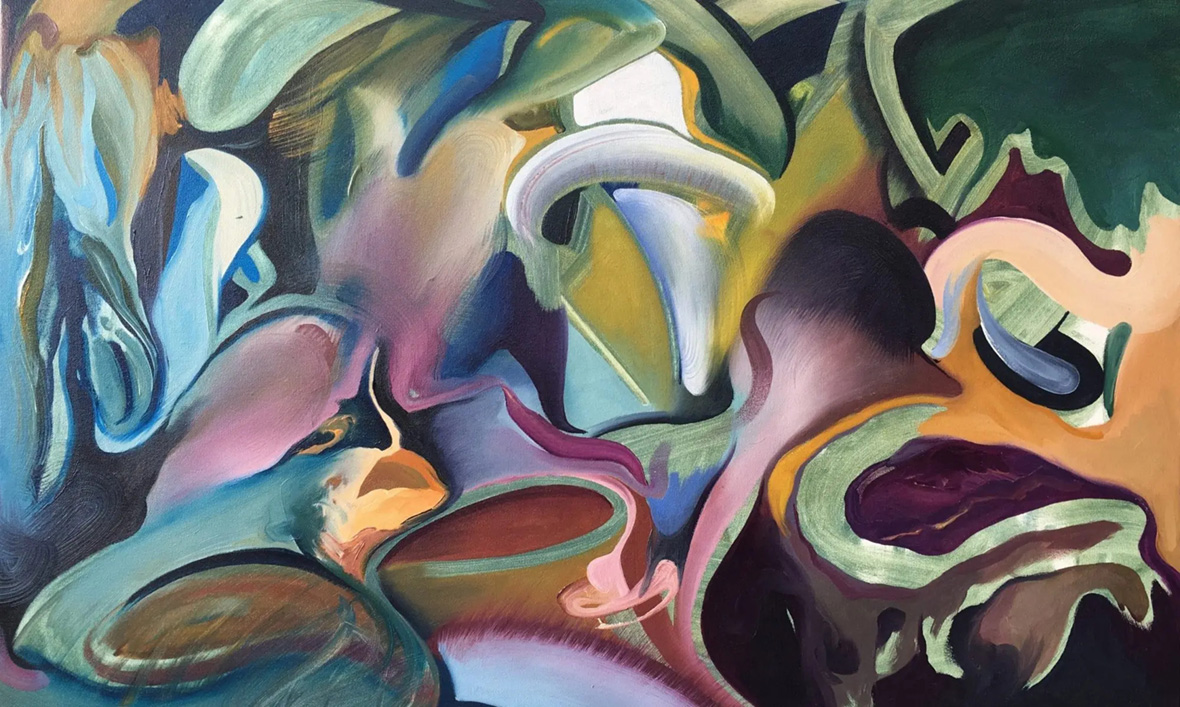
Influences From the Greats
Pamintuan expresses that she draws inspiration from plenty of sources. When asked who her local influences are, she names Eva Yu, Ambi Abanio, and Clarence Chun as some of her inspirations from the Philippines.
On a broader scale, Pamintuan credits Cy Twombly and Mark Rothko for changing her perspective on the possibilities of art-making. She initially did not think much of their works, but her first visits to the Rothko chapel and Cy Twombly Gallery changed that. “It’s like a feeling and an emotion that you can’t pinpoint into words,” she recalls. “Everyone says it’s a different experience, but those works definitely changed how I looked at art.”
She mentions other international artists as well, but Jorinde Voigt comes out on top as the most influential in her practice. “When you look at her artwork, it looks very abstract. But when you look at her process, it’s [almost] like she’s writing musical scores,” she says about the German painter. “There’s some kind of structure and mathematical aspect to her work, which I was really drawn to.”
潜移“墨”化
Faye 表示自己从很多艺术家身上汲取灵感,其中菲律宾本地艺术家就有 Eva Yu、Ambi Abanio 和 Clarence Chun。本地之外,Faye 表示美国艺术家赛·托姆布雷 (Cy Twombly) 和抽象派画家马克·罗斯科 (Mark Rothko) 改变了自己对艺术创作可能性的看法。起初,她并未特别在意这两位艺术家的作品,直到她拜访了罗斯科教堂 (The Rothko Chapel) 和 Cy Twombly 画廊。“那是一种无法用语言表达的感觉和情绪,”她回忆道,“每个人对艺术的理解大有不同,他们的作品就彻底改变了我对艺术的看法。”
她也提到了其他国际艺术家,其中德国艺术家朱莉德·福格特 (Jorinde Voigt) 对她的创作影响最大。“她的作品看上去非常抽象。但是,当你看到她的创作过程,你会觉得她[仿佛]是在谱写乐谱。她的作品里有着一种结构和数学化的元素,非常吸引我。”
Artistic Process
When it comes to her own artistic practice, Pamintuan almost seems to inverse Voigt’s process. The German painter would start with orderliness, while Pamintuan mentions that she suspends rationality and thinking at first. She usually begins by simply splattering or pouring paint around different canvases. Although she’s at her most dynamic during this first stage, she also notes that starting is always the hardest part for her. Her primary concern during the first few phases is to “get something on the canvas.”
Pamintuan also mentions that she starts on multiple paintings all in one go. She doesn’t focus on finishing one artwork at a time; there are usually canvases of different sizes all laid out for her to try different color schemes with. “Everything is sort of birthing from this chaos,” she explains. “That’s why it feels like outbursts: I’ll be working for how many hours straight just painting, painting, and painting. And then I’ll stop for a week or a couple of days.”
阑珊深处
谈及自己的艺术创作过程, Faye 与朱莉德几乎是完全相反的。朱莉德通常从有序开始,而 Faye 表示自己从一开始就会先将理性和思考搁置一边,先是在不同的画布上随意地泼溅颜料。虽然第一步是她最有活力的阶段,但同时对她来说也是最困难的部分。在创作的初期,她的重点在于“在画布上有所得”。
Faye 还表示自己会一口气同时创作多幅画。她并不是一次专注地完成一件作品,而是同时摆放不同尺寸的画布,用来尝试不同的配色方案。“一切都是从这种混乱中诞生的,”她解释道,“所以看上去像大爆炸一样。我常常会连续创作几个小时,不断地画,然后停下休息几天或一个礼拜。”

Pausing after this surge of spontaneity might seem like a lazy method to go about one’s craft, but Pamintuan proves otherwise, as it’s during this second stage when Pamintuan gathers a clearer picture of what these paintings are becoming. “This is going to sound weird, but I’m basically asking the painting to tell me what it wants to be,” she says. When she already knows how a painting is going to turn out in the end, she says that’s when she dislikes how it comes out.
When it comes to her mediums of choice, she usually starts with acrylic as a base during the first stage. After enough time has passed for her to come back to these canvases, she’ll go back with oil to bring out certain forms and colors. Whereas acrylic urges her to hurry up and “catch up” with it, oil allows her to become more deliberate with her movements. She loves that oil allows her time for both quietude and playfulness—both of which are equally integral to her artistic process.
Although Pamintuan has been using acrylic and oil the most lately, she’s also grown fond of the challenge of watercolor. She likes the fact that she has no full control over this medium, and she’s only able to suggest where watercolor should go across the paper.
Aside from watercolor, she’s also begun to appreciate the delicacy and resistance of paper. Unlike canvas, she explains, paper records every scratch, dent, or fold that an artist exerts on it. “You can’t hide from paper,” she explains. “It’s harder to hard things on paper because everything is always recorded.”
在爆发式的即兴创作之后选择休息,听上去似乎是过于随意的创作方式,但 Faye 并非如此,因为在第二阶段,Faye 会好好整理这些画作,在脑海形成更清晰的认识。“虽然听起来很奇怪,但我其实是想让这幅画告诉我它想成为什么,”她解释道,所以她往往不太满意那些自己早已知晓最终成品效果的作品。
关于创作媒介,她表示自己在创作第一阶段通常用丙烯酸颜料打底,再回来继续创作时,会使用油画颜料来呈现特定的形态和色彩。丙烯酸颜料敦促着她尽的张扬与写意,而油画颜料则让她细致琢磨。她喜欢油画颜料让自己有时间去沉淀和探索——这两者都是她艺术创作过程中不可或缺的。
虽然一直沿用丙烯酸和油画颜料的搭配,但 Faye 最近越来越喜欢用水彩创作,因为水彩是她无法全然掌控的媒介,她喜欢这种未知的感觉,一切听从水彩在画纸上的走向。
除了水彩,她也着手于研究木浆纸材质。她解释说,与画布不同,木浆纸会记录下艺术家所施加的每一个刮痕、凹痕或折痕。“你无法在纸张上做任何掩饰,这太难了,因为每一个细节都会被记录下来。”她解释道。
Student of Everything
Pamintuan has no qualms about admitting what she does or doesn’t know. In fact, she thrives on discovery and learning. She beams with enthusiasm about everything that’s inspired her—from great artists to even the 99% Invisible podcast on Spotify. This hunger for exploration, it seems, is also one of the reasons why she’s an artist.
“I’m that person who wants to do everything, but I can’t,” she says. “Art lets me do that whenever I’m interested or curious about a certain topic.”
It’s this openness that allows her to bring everything she’s inspired by into her artworks. Instead of situating herself as an all-knowing instructor, Pamintuan embraces the role of a multidisciplinary student who has much to learn.
So, besides taking cues from other artists, it seems fitting that Pamintuan also finds inspiration from the sciences—specifically from the Big Bang Theory and physics in general. She gushes about NASA’s high-resolution Hubble Telescope photos of stars, galaxies, and other wondrous clusters found in outer space. The similarity between outer-space photography and her works is striking; she points out that this interest in cosmic imagery does come out rather apparently in her art.
“I like to figure out systems, theories, and structures visually,” she explains. “I like knowing these rules and how things would theoretically work, then I bring them on into my interpretation of what it would look like if we were to actually see this in person.”
This interest in systems may seem like a far cry from the spontaneous and energetic quality that her works manifest, but it’s also a philosophy that influences the pattern of her artworks. Her paintings, she explains, mimic that tipping point between potential and kinetic energy.
“The paintings I want [to make] are the points wherein potential becomes kinetic—it’s like that split second,” she says. ”That’s why I’m interested in the Big Bang—that moment before it all exploded. The forms coming together before it goes into complete chaos.”
融会贯通
Faye 承认自己知识的有限。而发现和学习,往往让她有更蓬勃的创作活力。从艺术大师到 Spotify 上的 99% Invisible 播客,她热衷于探索所有激发她灵感的事物。这种对探索的渴望似乎也是她成为艺术家的原因之一。“我是那种什么都想做的人,但这是不可能的,”她说,“所以当我对某个主题感兴趣或好奇时,就可以藉借艺术来实现。”
正是这种开放的态度让她能够将一切灵感启发带入自己的作品中。Faye 并没有将自己视为无所不知的老师,而是一个求学若渴的跨学科学生。除了从其他艺术家那里汲取灵感,Faye 还从科学中获取启发,特别是大爆炸理论和物理学。她滔滔不绝地谈论着美国宇航局哈勃望远镜拍摄的恒星、星系和外太空星团的高清照片。她的作品与太空摄影照片有一种相似之处,也明显地透露出她对宇宙影像的兴趣。
“我喜欢从视觉上了解系统、理论和结构,”她解释道,“我喜欢了解这些规则以及事物运作的理论,然后将这些见解用我自己的方式演绎出来,变成肉眼可见的视觉作品。”
这种对系统的兴趣似乎与她作品中那股即兴与活力相去甚远,但却对她作品的图案有着重要的影响。她解释说,自己的画作所呈现的是势能和动能之间的临界点。“我想要捕捉住势能转化为动能的临界点,那短暂的一瞬间。这也是宇宙大爆炸吸引我的地方,在大爆炸发生前的那一瞬间,一切变得混乱不堪之前,各种形态凝聚的瞬间。”她说道。
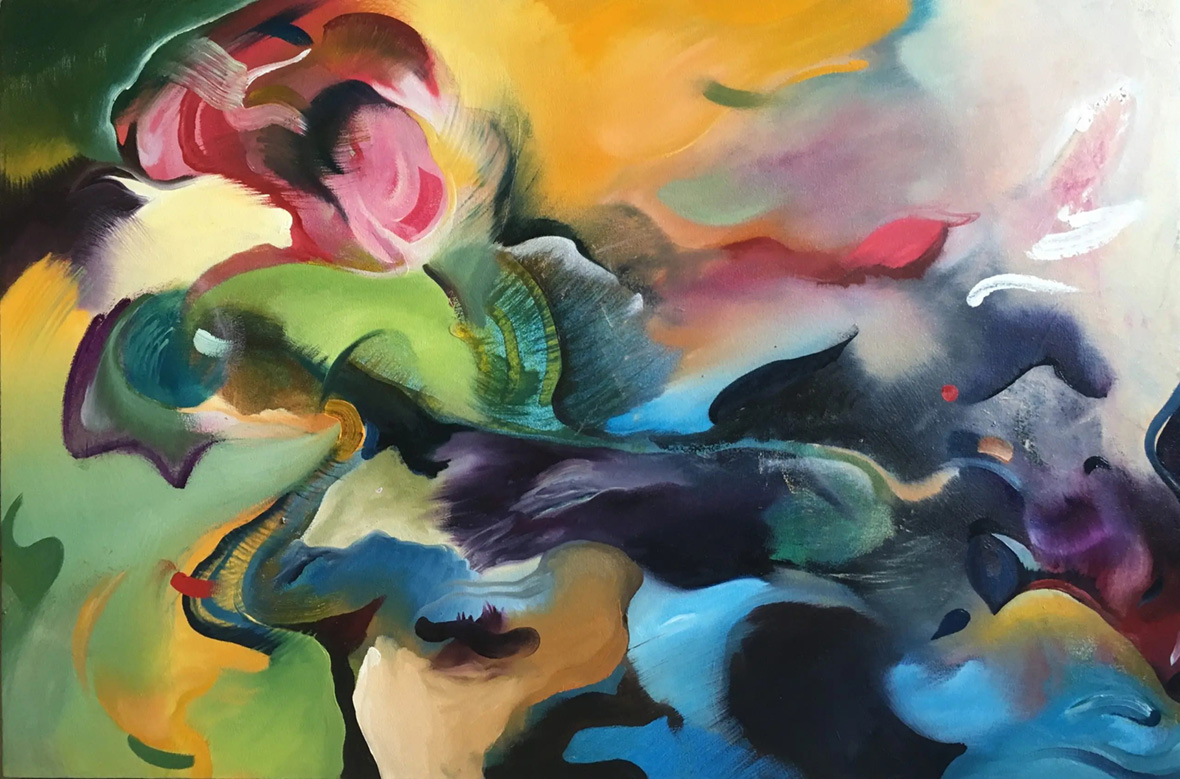
Act of Return
Pamintuan may always be on the lookout for new discoveries but, for now, her next goal is actually to return to her roots. She aims to gear her art practice towards the concept of diaspora. She has always felt that—as a second-generation immigrant—she was neither fully Filipino nor American. That’s why, besides learning about the sciences, Pamintuan is also keen on taking a course on anthropology to understand her Filipino roots better.
“I want to go deeper into identity, diaspora, the Filipino community outside of the Philippines, especially with the whole Asian-American hate,” she says. “I want to research more to be a part of that conversation so that I actually have good input.”
In working towards this, she plans on revisiting her senior thesis—an installation titled Re-routing Roots (2018) that was partly exhibited and partly performative. Specifically, it was a series of watercolor paintings she tore up as an act of rebellion against those cornering Pamintuan with labels. Now, she wants to come back and re-draw each of the ripped paintings. Through this return, she wishes to resolve her mixed feelings about her identity.
回归
Faye 一直不断追求新的发现,但她目前的下一个目标却是回归本源,围绕“流散”这一概念进行创作。作为第二代移民,她一直觉得自己的身份在菲律宾和美国之间游荡。出于这个原因,除了科学,Faye 还喜欢学习人类学课程,以更好地了解自己的本源。
她说:“我想更深入地了解身份认同、流散以及菲律宾国土以外的菲律宾社区,尤其是现在亚裔美国人所遭受的仇恨问题。我想让我的研究,成为对话,在这方面发挥积极的作用。”
为此,她计划重新回顾自己的毕业作品——名为《Re-routing Roots》(2018) 的艺术装置,由展览和表演两部分组成。在这个作品里,她撕毁了一系列的水彩画,以此抗议那些自我的标签。而现在,她想重新绘画每一幅被撕裂的画作,通过这种方式的回归,消除自己内心矛盾的身份认同。
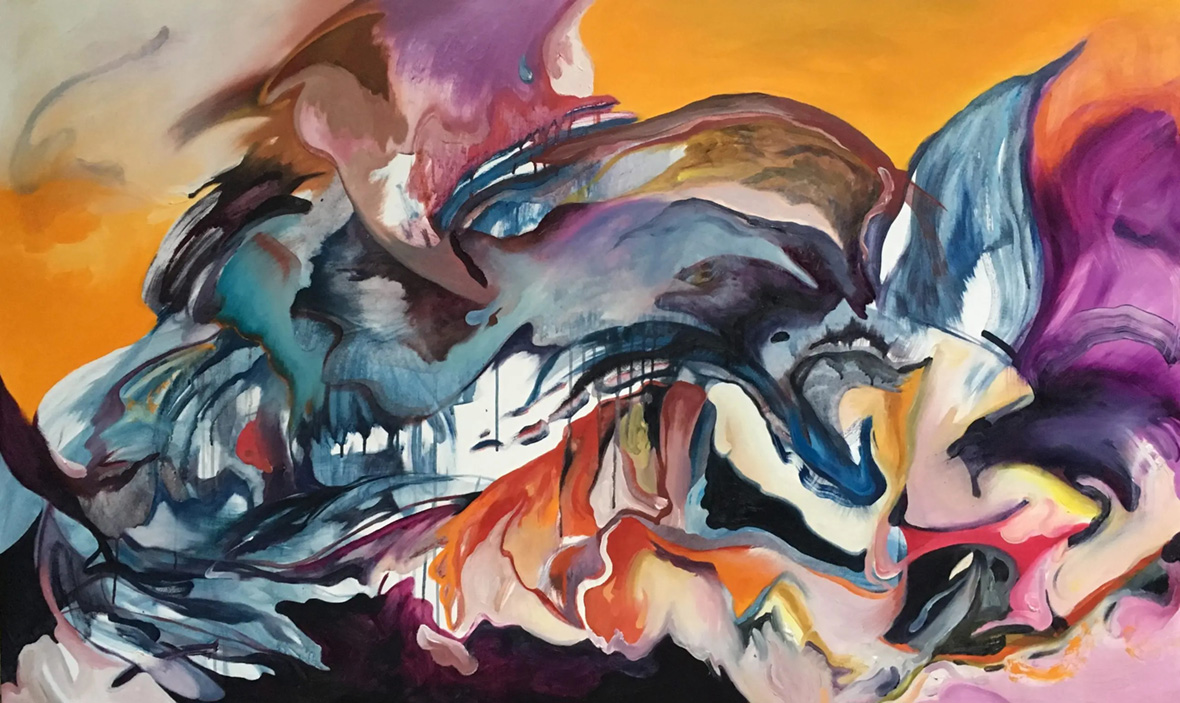
As a homage to the artistic scene in Manila and its influence on her practice, resolving her identity confusion is also another means to better contribute to the Filipino community. “I talk a lot about my work and myself,” she adds. “But I don’t want to lose the fact that your community and the people around you inform a lot of those pieces as well.”
Nonetheless, this doesn’t mean she’s abandoning her metaphysical approach to art. In some way, these thoughts and sentiments she harbors towards identity and community are already present in her oeuvre.
“As someone who’s always been moving, I’ve never had my own grounding. I’m always in two or three places,” she adds. “That’s why I relate so much to that movement. I think that’s why I like the cosmic threshold aspect because I feel like that’s me.”
For now, Pamintuan is dedicated to becoming even more involved in the Manila art scene; she loves igniting discussions and conversations about what other projects other artists are working on. She explains that it’s these small interactions that influence her art—and everything else.
“You see [the little things happen] later down the line and you’re like, ‘I”m glad this worked out.’ But you didn’t see the backend stuff that had to happen for this one thing to work out,” she ends. “I think that’s why my works are so flowy. Everything influences the other.”
对 Faye 来说,消除身份认同问题其实也是在回应马尼拉当地艺术对自己的影响。因此,她渴望为菲律宾社区做出自己的贡献。“我经常谈论自己的作品和我自己,但有另一点不应该被遗忘,那就是你的社区和你身边的人也对这些作品同样有很重要的影响。”她补充道。
尽管如此,这并不意味着她要放弃自己原本抽象的艺术创作理念,在某种程度上,她对于身份认同和社区的想法和情感早已体现在她的作品中。“作为一个漂泊不定的人,我从来没有定下来过,总是往返于两三个地方之间,”她补充道,“这就是为什么我对作品中的流动性,以及不同元素之间的联系如此感兴趣,我想这也是我喜欢浩瀚宇宙的原因,因为我生存于此,和它有着共通性,并都渴望融会贯通。”
“当事物发生强大的转变,你也许会惊叹,但你也许没有看到,促成这事物的扭转,必须在背后发生很多。这也是我的作品充满流动感的原因,因为世间万物总是相互影响。”
Like our stories? Follow us on Facebook and Instagram.
Website: www.fayepamintuan.com
Instagram: @pamintuanfye
Contributor: Ann Domingo
Chinese Translation: Olivia Li

